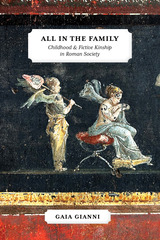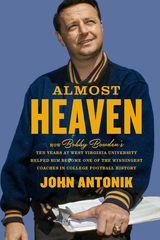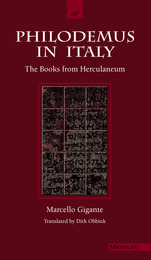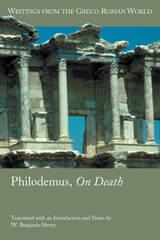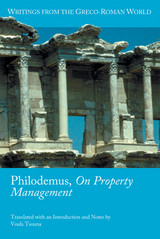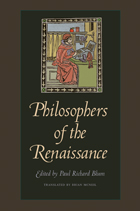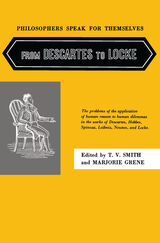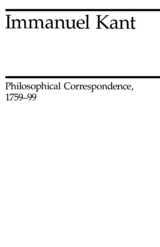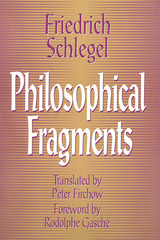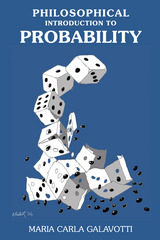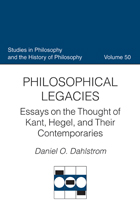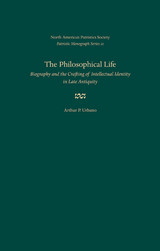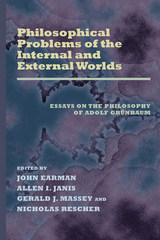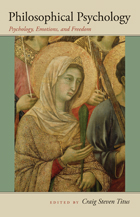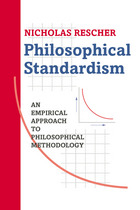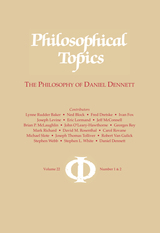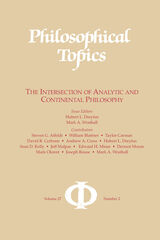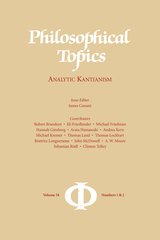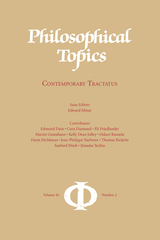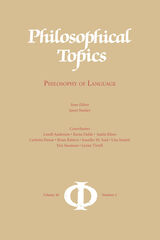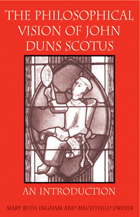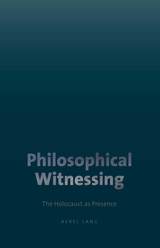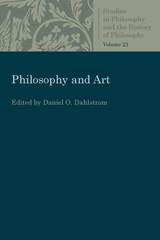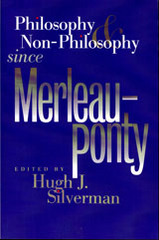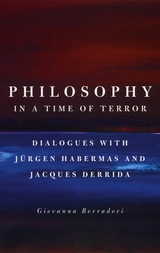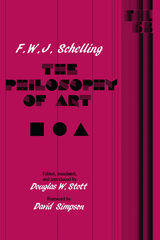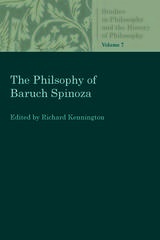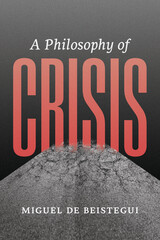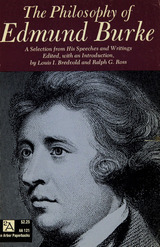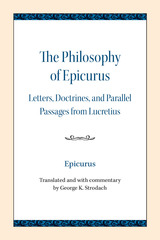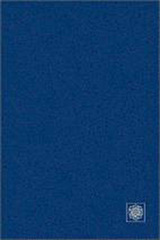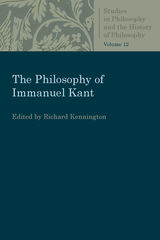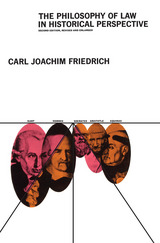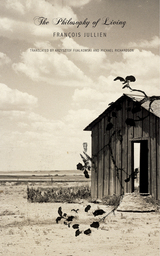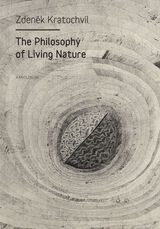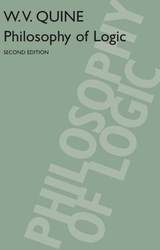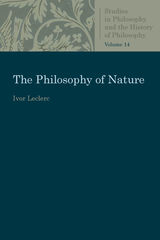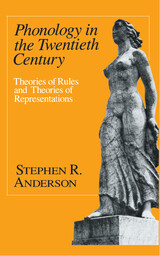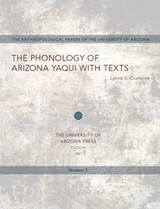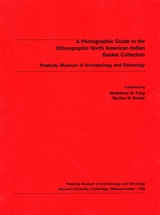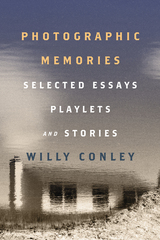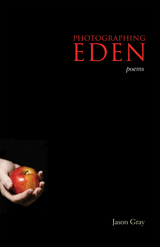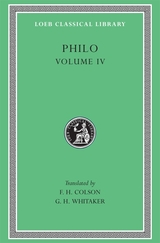 Philo, Volume IV: On the Confusion of Tongues. On the Migration of Abraham. Who Is the Heir of Divine Things? On Mating with the Preliminary Studies
Philo
Harvard University Press Syncretistic exegesis.
The philosopher Philo was born about 20 BC to a prominent Jewish family in Alexandria, the chief home of the Jewish Diaspora as well as the chief center of Hellenistic culture; he was trained in Greek as well as Jewish learning. In attempting to reconcile biblical teachings with Greek philosophy he developed ideas that had wide influence on Christian and Jewish religious thought.
The Loeb Classical Library edition of the works of Philo is in ten volumes and two supplements, distributed as follows. Volume I: Creation; Interpretation of Genesis II and III. II: On the Cherubim; The Sacrifices of Abel and Cain; The Worse Attacks the Better; The Posterity and Exile of Cain; On the Giants. III: The Unchangeableness of God; On Husbandry; Noah's Work as a Planter; On Drunkenness; On Sobriety. IV: The Confusion of Tongues; The Migration of Abraham; The Heir of Divine Things; On the Preliminary Studies. V: On Flight and Finding; Change of Names; On Dreams. VI: Abraham; Joseph; Moses. VII: The Decalogue; On Special Laws Books I–III. VIII: On Special Laws Book IV; On the Virtues; Rewards and Punishments. IX: Every Good Man Is Free; The Contemplative Life; The Eternity of the World; Against Flaccus; Apology for the Jews; On Providence. X: On the Embassy to Gaius; indexes. Supplement I: Questions on Genesis. II: Questions on Exodus; index to supplements.
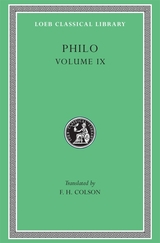 Philo, Volume IX: Every Good Man is Free. On the Contemplative Life. On the Eternity of the World. Against Flaccus. Apology for the Jews. On Providence
Philo
Harvard University Press Syncretistic exegesis.
The philosopher Philo was born about 20 BC to a prominent Jewish family in Alexandria, the chief home of the Jewish Diaspora as well as the chief center of Hellenistic culture; he was trained in Greek as well as Jewish learning. In attempting to reconcile biblical teachings with Greek philosophy he developed ideas that had wide influence on Christian and Jewish religious thought.
The Loeb Classical Library edition of the works of Philo is in ten volumes and two supplements, distributed as follows. Volume I: Creation; Interpretation of Genesis II and III. II: On the Cherubim; The Sacrifices of Abel and Cain; The Worse Attacks the Better; The Posterity and Exile of Cain; On the Giants. III: The Unchangeableness of God; On Husbandry; Noah's Work as a Planter; On Drunkenness; On Sobriety. IV: The Confusion of Tongues; The Migration of Abraham; The Heir of Divine Things; On the Preliminary Studies. V: On Flight and Finding; Change of Names; On Dreams. VI: Abraham; Joseph; Moses. VII: The Decalogue; On Special Laws Books I–III. VIII: On Special Laws Book IV; On the Virtues; Rewards and Punishments. IX: Every Good Man Is Free; The Contemplative Life; The Eternity of the World; Against Flaccus; Apology for the Jews; On Providence. X: On the Embassy to Gaius; indexes. Supplement I: Questions on Genesis. II: Questions on Exodus; index to supplements.
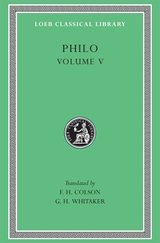 Philo, Volume V: On Flight and Finding. On the Change of Names. On Dreams
Philo
Harvard University Press Syncretistic exegesis.
The philosopher Philo was born about 20 BC to a prominent Jewish family in Alexandria, the chief home of the Jewish Diaspora as well as the chief center of Hellenistic culture; he was trained in Greek as well as Jewish learning. In attempting to reconcile biblical teachings with Greek philosophy he developed ideas that had wide influence on Christian and Jewish religious thought.
The Loeb Classical Library edition of the works of Philo is in ten volumes and two supplements, distributed as follows. Volume I: Creation; Interpretation of Genesis II and III. II: On the Cherubim; The Sacrifices of Abel and Cain; The Worse Attacks the Better; The Posterity and Exile of Cain; On the Giants. III: The Unchangeableness of God; On Husbandry; Noah's Work as a Planter; On Drunkenness; On Sobriety. IV: The Confusion of Tongues; The Migration of Abraham; The Heir of Divine Things; On the Preliminary Studies. V: On Flight and Finding; Change of Names; On Dreams. VI: Abraham; Joseph; Moses. VII: The Decalogue; On Special Laws Books I–III. VIII: On Special Laws Book IV; On the Virtues; Rewards and Punishments. IX: Every Good Man Is Free; The Contemplative Life; The Eternity of the World; Against Flaccus; Apology for the Jews; On Providence. X: On the Embassy to Gaius; indexes. Supplement I: Questions on Genesis. II: Questions on Exodus; index to supplements.
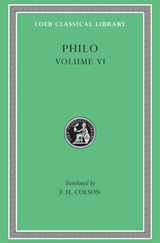 Philo, Volume VI: On Abraham. On Joseph. On Moses
Philo
Harvard University Press Syncretistic exegesis.
The philosopher Philo was born about 20 BC to a prominent Jewish family in Alexandria, the chief home of the Jewish Diaspora as well as the chief center of Hellenistic culture; he was trained in Greek as well as Jewish learning. In attempting to reconcile biblical teachings with Greek philosophy he developed ideas that had wide influence on Christian and Jewish religious thought.
The Loeb Classical Library edition of the works of Philo is in ten volumes and two supplements, distributed as follows. Volume I: Creation; Interpretation of Genesis II and III. II: On the Cherubim; The Sacrifices of Abel and Cain; The Worse Attacks the Better; The Posterity and Exile of Cain; On the Giants. III: The Unchangeableness of God; On Husbandry; Noah's Work as a Planter; On Drunkenness; On Sobriety. IV: The Confusion of Tongues; The Migration of Abraham; The Heir of Divine Things; On the Preliminary Studies. V: On Flight and Finding; Change of Names; On Dreams. VI: Abraham; Joseph; Moses. VII: The Decalogue; On Special Laws Books I–III. VIII: On Special Laws Book IV; On the Virtues; Rewards and Punishments. IX: Every Good Man Is Free; The Contemplative Life; The Eternity of the World; Against Flaccus; Apology for the Jews; On Providence. X: On the Embassy to Gaius; indexes. Supplement I: Questions on Genesis. II: Questions on Exodus; index to supplements.
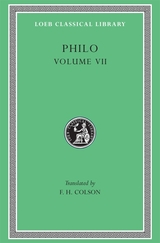 Philo, Volume VII: On the Decalogue. On the Special Laws, Books 1–3
Philo
Harvard University Press Syncretistic exegesis.
The philosopher Philo was born about 20 BC to a prominent Jewish family in Alexandria, the chief home of the Jewish Diaspora as well as the chief center of Hellenistic culture; he was trained in Greek as well as Jewish learning. In attempting to reconcile biblical teachings with Greek philosophy he developed ideas that had wide influence on Christian and Jewish religious thought.
The Loeb Classical Library edition of the works of Philo is in ten volumes and two supplements, distributed as follows. Volume I: Creation; Interpretation of Genesis II and III. II: On the Cherubim; The Sacrifices of Abel and Cain; The Worse Attacks the Better; The Posterity and Exile of Cain; On the Giants. III: The Unchangeableness of God; On Husbandry; Noah's Work as a Planter; On Drunkenness; On Sobriety. IV: The Confusion of Tongues; The Migration of Abraham; The Heir of Divine Things; On the Preliminary Studies. V: On Flight and Finding; Change of Names; On Dreams. VI: Abraham; Joseph; Moses. VII: The Decalogue; On Special Laws Books I–III. VIII: On Special Laws Book IV; On the Virtues; Rewards and Punishments. IX: Every Good Man Is Free; The Contemplative Life; The Eternity of the World; Against Flaccus; Apology for the Jews; On Providence. X: On the Embassy to Gaius; indexes. Supplement I: Questions on Genesis. II: Questions on Exodus; index to supplements.
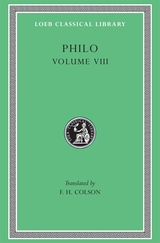 Philo, Volume VIII: On the Special Laws, Book 4. On the Virtues. On Rewards and Punishments
Philo
Harvard University Press Syncretistic exegesis.
The philosopher Philo was born about 20 BC to a prominent Jewish family in Alexandria, the chief home of the Jewish Diaspora as well as the chief center of Hellenistic culture; he was trained in Greek as well as Jewish learning. In attempting to reconcile biblical teachings with Greek philosophy he developed ideas that had wide influence on Christian and Jewish religious thought.
The Loeb Classical Library edition of the works of Philo is in ten volumes and two supplements, distributed as follows. Volume I: Creation; Interpretation of Genesis II and III. II: On the Cherubim; The Sacrifices of Abel and Cain; The Worse Attacks the Better; The Posterity and Exile of Cain; On the Giants. III: The Unchangeableness of God; On Husbandry; Noah's Work as a Planter; On Drunkenness; On Sobriety. IV: The Confusion of Tongues; The Migration of Abraham; The Heir of Divine Things; On the Preliminary Studies. V: On Flight and Finding; Change of Names; On Dreams. VI: Abraham; Joseph; Moses. VII: The Decalogue; On Special Laws Books I–III. VIII: On Special Laws Book IV; On the Virtues; Rewards and Punishments. IX: Every Good Man Is Free; The Contemplative Life; The Eternity of the World; Against Flaccus; Apology for the Jews; On Providence. X: On the Embassy to Gaius; indexes. Supplement I: Questions on Genesis. II: Questions on Exodus; index to supplements.
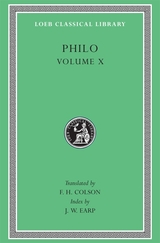 Philo, Volume X: On the Embassy to Gaius. General Indexes
Philo
Harvard University Press A diplomatic mission to the emperor Caligula.
The philosopher Philo was born about 20 BC to a prominent Jewish family in Alexandria, the chief home of the Jewish Diaspora as well as the chief center of Hellenistic culture; he was trained in Greek as well as Jewish learning. In attempting to reconcile biblical teachings with Greek philosophy he developed ideas that had wide influence on Christian and Jewish religious thought.
The Loeb Classical Library edition of the works of Philo is in ten volumes and two supplements, distributed as follows. Volume I: Creation; Interpretation of Genesis II and III. II: On the Cherubim; The Sacrifices of Abel and Cain; The Worse Attacks the Better; The Posterity and Exile of Cain; On the Giants. III: The Unchangeableness of God; On Husbandry; Noah's Work as a Planter; On Drunkenness; On Sobriety. IV: The Confusion of Tongues; The Migration of Abraham; The Heir of Divine Things; On the Preliminary Studies. V: On Flight and Finding; Change of Names; On Dreams. VI: Abraham; Joseph; Moses. VII: The Decalogue; On Special Laws Books I–III. VIII: On Special Laws Book IV; On the Virtues; Rewards and Punishments. IX: Every Good Man Is Free; The Contemplative Life; The Eternity of the World; Against Flaccus; Apology for the Jews; On Providence. X: On the Embassy to Gaius; indexes. Supplement I: Questions on Genesis. II: Questions on Exodus; index to supplements.
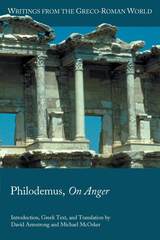 Philodemus, On Anger
David Armstrong
SBL Press, 2020 The first English translation of On Anger
This latest volume in the Writings from the Greco-Roman World series provides a translation of a newly edited Greek text of Philodemus’s On Anger, now supplemented with the help of multispectral imaging. As our sole evidence for the Epicurean view of what constitutes natural and praiseworthy anger as distinguished from unnatural pleasure in vengeance and cruelty for their own sake, this text is crucial to the study of ancient thought about the emotions. Its critique of contemporary Stoic and Peripatetic theories of anger offers crucial new information for the history of philosophy in the last two centuries BCE. The introduction and commentary also make use of newly revised texts and readings from several other ancient treatises on anger.
Features
- An apparatus representing work on the text since the papyrus was opened in 1805
- A full explication of the Epicurean theory of natural anger as an emotion without pleasure
- One of the Herculaneum papyri that survived the eruption of Vesuvius in 79 CE
Philodemus, On Death
W. Benjamin Henry
SBL Press, 2009 On Death, by the Epicurean philosopher Philodemus of Gadara, is among the most significant philosophical treatments of the theme surviving from the Greco-Roman world. The author was an influential figure in first-century B.C.E. Roman society, associated with poets such as Virgil and politicians such as the father-in-law of Julius Caesar. The surviving copies of his treatises were carbonized following the eruption of Vesuvius in 79 C.E. This edition contains the Greek text, newly reconstituted with the help of the infrared imaging technology that has revolutionized the study of Philodemus s works in the twenty-first century, and completely translated into English for the first time. An extensive introduction provides background on Philodemus and his writings, accompanying notes enrich the text, and forty-four pages of photographs illustrate the papyrus manuscript from which the translation is drawn.
Philodemus, On Property Management
Voula Tsouna
SBL Press, 2013 Philodemus was an important Epicurean philosopher active in southern Italy in the first century B.C.E. His treatise On Property Management, whose surviving part is completely translated here into English for the first time, focuses primarily on the vices or virtues involved in the acquisition and preservation of property and wealth. The extant remains of the work contain the most extensive and thorough treatment of property management found in any Hellenistic author. Philodemus criticizes rival writings by Xenophon and Theophrastus on the subject of oikonomia, or property management, and defends his own Epicurean views on the topic. More systematic and philosophical than rival approaches, the treatise clarifies many moral issues pertaining to the possession and preservation of property and wealth and provides plausible answers to a cluster of moral questions.
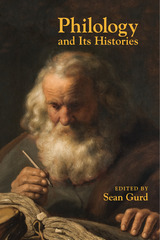 Philology and Its Histories
Sean Gurd
Ohio State University Press, 2010 There has never been any shortage of interest in philology, its status, its history, or its origins. Today, after more than twenty years of serial “returns to philology” under the banner of deconstruction, the new medieval studies, critical bibliography, and a particular kind of globally aware activist criticism, philology has again become available as a respectable posture for contemporary literary scholars. But what is “philology,” and how can we attend to it, either as a contemporary practice or as an age-old object of endorsement and critique? In this volume, edited by Sean Gurd, noted scholars discuss the history of philology from antiquity to the present. This book addresses a wide variety of authors, documents, and movements, among them Greek papyri, Latin textual traditions, the Renaissance, eighteenth-century antiquarianism, and deconstruction. It is too easy to see philology as the bearer of an antiquated but forceful authority. When philologists take up the tools of textual criticism, they contribute to the very form of texts; seeking to articulate the protocols of correct interpretation, they aspire to be the legislators of reading practice. Nonetheless, Philology and Its Histories argues that philology is not a conservative or ideologically loaded master-discourse, but a tradition of searching, fundamentally ungrounded, dealing with the insecurity of questions rather than the safety of answers. For good or ill, philology is where literature happens; we do well to pay heed to it and to its changes over the course of millennia.
 Philology in a Digital Age: Selected Papers
Gregory Crane
Harvard University Press Philology in a Digital Age: Selected Papers brings together more than four decades of scholarship by Gregory Crane documenting the evolution of Classical Studies during the rise of digital technologies—including both published and previously unpublished essays ranging from early proposals in the 1980s to recent reflections on the role of AI, open data, and multilingual inclusion in the humanities. Together, these essays trace the transformation of Greco-Roman philology as it enters a new phase of engagement with digital media.
Drawing on his unique perspective as a traditionally trained classicist, an early architect of the Perseus Digital Library, and a professor working across the disciplines of Classics, Digital Humanities, and Computer Science, Crane explores the profound implications of transitioning from physical to digital infrastructure, not only in terms of access and scale, but in rethinking the very practice and goals of philology. Emphasizing lived understanding over static texts or tools, he argues for a field that must continuously adapt to new technologies while remaining committed to open, inclusive scholarship. Philology in a Digital Age is both a record of a scholarly transformation and a call to envision the future of humanistic inquiry in a world of ubiquitous digitization.
 Philology in a Digital Age: Selected Papers
Gregory Crane
Harvard University Press Philology in a Digital Age: Selected Papers brings together more than four decades of scholarship by Gregory Crane documenting the evolution of Classical Studies during the rise of digital technologies—including both published and previously unpublished essays ranging from early proposals in the 1980s to recent reflections on the role of AI, open data, and multilingual inclusion in the humanities. Together, these essays trace the transformation of Greco-Roman philology as it enters a new phase of engagement with digital media.
Drawing on his unique perspective as a traditionally trained classicist, an early architect of the Perseus Digital Library, and a professor working across the disciplines of Classics, Digital Humanities, and Computer Science, Crane explores the profound implications of transitioning from physical to digital infrastructure, not only in terms of access and scale, but in rethinking the very practice and goals of philology. Emphasizing lived understanding over static texts or tools, he argues for a field that must continuously adapt to new technologies while remaining committed to open, inclusive scholarship. Philology in a Digital Age is both a record of a scholarly transformation and a call to envision the future of humanistic inquiry in a world of ubiquitous digitization.
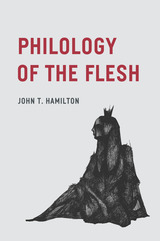 Philology of the Flesh
John T. Hamilton
University of Chicago Press, 2018 As the Christian doctrine of Incarnation asserts, “the Word became Flesh.” Yet, while this metaphor is grounded in Christian tradition, its varied functions far exceed any purely theological import. It speaks to the nature of God just as much as to the nature of language.
In Philology of the Flesh, John T. Hamilton explores writing and reading practices that engage this notion in a range of poetic enterprises and theoretical reflections. By pressing the notion of philology as “love” (philia) for the “word” (logos), Hamilton’s readings investigate the breadth, depth, and limits of verbal styles that are irreducible to mere information. While a philologist of the body might understand words as corporeal vessels of core meaning, the philologist of the flesh, by focusing on the carnal qualities of language, resists taking words as mere containers.
By examining a series of intellectual episodes—from the fifteenth-century Humanism of Lorenzo Valla to the poetry of Emily Dickinson, from Immanuel Kant and Johann Georg Hamann to Friedrich Nietzsche, Franz Kafka, and Paul Celan—Philology of the Flesh considers the far-reaching ramifications of the incarnational metaphor, insisting on the inseparability of form and content, an insistence that allows us to rethink our relation to the concrete languages in which we think and live.
 Philo's Influence on Valentinian Tradition
Risto Auvinen
SBL Press, 2024 In this book Risto Auvinen reevalutes the relationship between the exegetical and philosophical traditions found in the works of Philo and those of the Valentinian gnostic tradition, with a particular focus on the latter half of the second century, Valentinianism’s formative years. Texts examined include fragments of Valentinus, Heracleon, and Ptolemy’s Letter to Flora, in addition to the Valentinian source included in the Excerpta ex Theodoto by Clement of Alexandria and related sections in Irenaeus’s Adversus haereses. Auvinen asserts that the number of parallels with Philo in the Valentinian sources increases the likelihood that there was a historical relationship between Philo’s writings and Valentinian teachers. These connections expand our knowledge not only of the preservation and circulation of Philo’s texts in the latter part of the second century but also of the importance of the allegorical traditions of Hellenistic Judaism on Valentinus’s school of thought and on Gnosticism more broadly.
 Philo's Portrayal of Moses in the Context of Ancient Judaism
Louis H. Feldman
University of Notre Dame Press, 2007
Philo's Portrayal of Moses in the Context of Ancient Judaism presents the most comprehensive study of Philo's De Vita Mosis that exists in any language. Feldman, well known for his work on Josephus and ancient Judaism, here paves new ground using rabbinic material with philological precision to illuminate important parallels and differences between Philo's writing on Moses and rabbinic literature.
One way in which Hellenistic culture marginalized Judaism was by exposing the apparent defects in Moses’ life and character. Philo’s De vita Mosis is a counterattack to these charges and is a vital piece of his attempt to reconcile Judaism and Hellenism. Feldman rigorously examines the text and shows how Philo presents an aretalogy similar to that of a mythical divine and heroic figure, by glorifying the birth, education, and virtues of Moses. Feldman demonstrates that Philo is careful to explain in a scientific way those portions of the Bible, particularly miracles, that appear incredible to his skeptical Hellenistic readers. Through Feldman's careful analysis, Moses emerges as unique among ancient lawgivers.
Philo's Portrayal of Moses in the Context of Ancient Judaism mirrors the organization of Philo's biography of Moses, which is in two books, the first, in the style of Plutarch, proceeding chronologically, and the second, in the style of Suetonius, arranged topically. Feldman's book discusses the life of Moses chronologically and in the third chapter examines his virtues topically. Feldman compares the particular features of Philo's portrait of Moses with the way in which Moses is viewed both by Jewish sources in antiquity (including Pseudo-Philo; Josephus; Graeco-Jewish historians, poets, and philosophers; and in the Apocrypha, Pseudepigrapha, Samaritan tradition, Dead Sea Scrolls, and rabbinic tradition) and by non-Jewish sources, notably the Greek and Roman writers who mention him.
“This book is a gold mine of information. In two sections that follow the arrangement of Philo's two treatises on the life of Moses, Feldman expertly sets forth an impressive array of material from Philo, other Jewish sources, and non-Jewish sources. Each section on the life of Moses and on his virtues is clearly and helpfully organized into many subsections, and Feldman discusses each topic with characteristic erudition. This is the first book-length study to focus on these Philonic and other traditions about Moses, and readers from a variety of disciplines will find much here to appreciate.” —Ellen Birnbaum, author of The Place of Judaism in Philo's Thought: Israel, Jews, and Proselytes
“Feldman provides a characteristically thorough, even exhaustive, discussion of Philo's Life of Moses, informed by his unsurpassed knowledge of both Jewish and classical literature. This is a very substantial and welcome contribution to the detailed analysis of the major Jewish philosopher of antiquity.” —John J. Collins, Yale Divinity School
“This book represents the first full-length treatment of Philo’s portrait of Moses in the De vita Moysis. The work is erudite and careful. As is characteristic of Professor Feldman’s work as a whole, the strongest quality of this book is it comprehensive nature and encyclopedic learning. It will appeal to a significant number of scholars and students from a wide range of disciplines, including Second Temple Judaism, Rabbinic Judaism, New Testament, and the Early Church.” —Gregory E. Sterling, associate professor of theology, University of Notre Dame
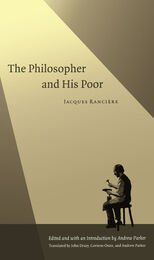 The Philosopher and His Poor
Jacques Rancière
Duke University Press, 2004 What has philosophy to do with the poor? If, as has often been supposed, the poor have no time for philosophy, then why have philosophers always made time for them? Why is the history of philosophy—from Plato to Karl Marx to Jean-Paul Sartre to Pierre Bourdieu—the history of so many figures of the poor: plebes, men of iron, the demos, artisans, common people, proletarians, the masses? Why have philosophers made the shoemaker, in particular, a remarkably ubiquitous presence in this history? Does philosophy itself depend on this thinking about the poor? If so, can it ever refrain from thinking for them? Jacques Rancière’s The Philosopher and His Poor meditates on these questions in close readings of major texts of Western thought in which the poor have played a leading role—sometimes as the objects of philosophical analysis, sometimes as illustrations of philosophical argument. Published in France in 1983 and made available here for the first time in English, this consummate study assesses the consequences for Marx, Sartre, and Bourdieu of Plato’s admonition that workers should do “nothing else” than their own work. It offers innovative readings of these thinkers’ struggles to elaborate a philosophy of the poor. Presenting a left critique of Bourdieu, the terms of which are largely unknown to an English-language readership, The Philosopher and His Poor remains remarkably timely twenty years after its initial publication.
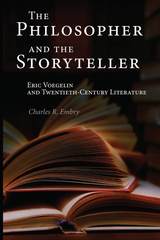 The Philosopher and the Storyteller: Eric Voegelin and Twentieth-Century Literature
Charles R. Embry
University of Missouri Press, 2018 Throughout his philosophical career, Eric Voegelin had much to say about literature in both his published work and his private letters. Many of his most trenchant comments regarding the analysis of literature appear in his correspondence with critic Robert Heilman, and, through his familiarity with that exchange, Charles Embry has gained extraordinary insight into Voegelin’s literary views. The Philosopher and the Storyteller is the first book-length study of the literary dimensions of Voegelin’s philosophy—and the first to use his philosophy to read specific novels. Bringing to bear a thorough familiarity with both Voegelin and great literature, Embry shows that novels—like myths, philosophy, and religious texts—participate in the human search for the truth of existence, and that reading literature within a Voegelinian framework exposes the existential and philosophical dimensions of those works. Embry focuses on two key elements of Voegelin’s philosophy as important for reading literature: metaxy, the in-between of human consciousness, and metalepsis, human participation in the community of being. He shows how Voegelin’s philosophy in general is rooted in literary-symbolic interpretation and, therefore, provides a foundation for the interpretation of literature. And finally he explores Voegelin’s insistence that the soundness of literary criticism lies in the consciousness of the reader. Embry then offers Voegelinian readings that vividly illustrate the principles of this approach. First he considers Graham Swift’s Waterland as an example of the human search for meaning in the modern world, then he explores the deformation and recovery of reality in Heimito von Doderer’s long and complex novel The Demons, and finally he examines how Flannery O’Connor’s The Violent Bear It Away mythically expresses the flux of divine presence in what Voegelin calls the Time of the Tale. The Philosopher and the Storyteller unites fiction and philosophy in the common quest to understand our nature, our world, and our cosmos. A groundbreaking exploration of the connection between Voegelin and twentieth-century literature, this book opens a new window on the philosopher’s thought and will motivate readers to study other novels in light of this approach.
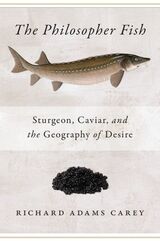 The Philosopher Fish: Sturgeon, Caviar, and the Geography of Desire
Richard Adams Carey
Brandeis University Press, 2024 An updated new edition of Richard Adams Carey’s illuminating journey across the globe to uncover the secrets of the sturgeon.
From the acclaimed eco-journalist Rick Carey comes a fascinating chronicle of a fast-disappearing fish—and of the people whose lives and livelihoods depend on it. Since the days of the Persian Empire, caviar has trumpeted status, wealth, prestige, and sex appeal. In this remarkable journey to caviar’s source, Carey immerses himself in the world of the sturgeon, the fish that lays these golden eggs. The sturgeon has a fascinating biological past—and a very uncertain future. Sturgeon populations worldwide have declined seventy percent in the last twenty years. Meanwhile, the beluga sturgeon, producer of the most coveted caviar, has climbed to number four on the World Wildlife Fund’s most-endangered species list. A high-stakes cocktail of business, crime, diplomacy, technology, and the dilemmas of conservation, The Philosopher Fish is the epic story of a 250-million-year-old fish struggling to survive.
This new edition includes new chapters bringing up to date the story of this elusive and mysterious fish, and the people involved with both preserving and exploiting it.
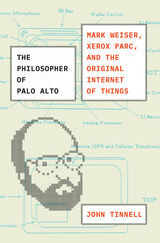 The Philosopher of Palo Alto: Mark Weiser, Xerox PARC, and the Original Internet of Things
John Tinnell
University of Chicago Press, 2023 A compelling biography of Mark Weiser, a pioneering innovator whose legacy looms over the tech industry’s quest to connect everything—and who hoped for something better.
When developers and critics trace the roots of today’s Internet of Things—our smart gadgets and smart cities—they may single out the same creative source: Mark Weiser (1952–99), the first chief technology officer at Xerox PARC and the so-called “father of ubiquitous computing.” But Weiser, who died young at age 46 in 1999, would be heartbroken if he had lived to see the ways we use technology today. As John Tinnell shows in this thought-provoking narrative, Weiser was an outlier in Silicon Valley. A computer scientist whose first love was philosophy, he relished debates about the machine’s ultimate purpose. Good technology, Weiser argued, should not mine our experiences for saleable data or demand our attention; rather, it should quietly boost our intuition as we move through the world.
Informed by deep archival research and interviews with Weiser’s family and colleagues, The Philosopher of Palo Alto chronicles Weiser’s struggle to initiate a new era of computing. Working in the shadows of the dot-com boom, Weiser and his collaborators made Xerox PARC headquarters the site of a grand experiment. Throughout the building, they embedded software into all sorts of objects—coffeepots, pens, energy systems, ID badges—imbuing them with interactive features. Their push to integrate the digital and the physical soon caught on. Microsoft’s Bill Gates flagged Weiser’s Scientific American article “The Computer for the 21st Century” as a must-read. Yet, as more tech leaders warmed to his vision, Weiser grew alarmed about where they wished to take it.
In this fascinating story of an innovator and a big idea, Tinnell crafts a poignant and critical history of today’s Internet of Things. At the heart of the narrative is Weiser’s desire for deeper connection, which animated his life and inspired his notion of what technology at its best could be.
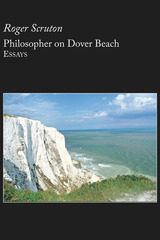 Philosopher On Dover Beach
Roger Scruton
St. Augustine's Press, 2017 “It is a great pity that we in the United States do not have our own Roger Scruton. As his . . . collection of essays reminds us, he is an accomplished philosopher who writes trenchantly about many important political, social and religious issues, who cares passionately about art and culture and who is also a brilliant conservative polemicist. . . . “Mr. Scruton has two great virtues as a critic. One is his ability to combine a delicate appreciation of culture with the robust analytical skills of a trained philosopher. . . . “Mr. Scruton’s other great virtue is his habit of assessing things from the inside, taking them on their own terms. If his judgments are often harsh, one nevertheless comes away feeling that he has made the best case possible for his subject. This makes his criticism more devastating yet also more generous than the criticism of most other commentator.” – Roger Kimball, New York Times Book Review “Each essay has been constructed with considerable care, and the positions taken are clearly stated and soundly argued. . . . He shows . . . that the philosopher-critic is alive and well. . . . Recommended for all academic libraries.” – Library Journal “[Scruton] writes eloquently of the way in which social bonds, if refashioned in contractual form. ‘become profane, a system of façade, a Disneyland version of what was formerly dignified and monumental.’” – Peter Clarke, London Review of Books
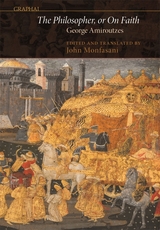 The Philosopher, or On Faith
George Amiroutzes
Harvard University Press “God necessarily exists, since it is not possible for things to be otherwise, as Aristotle shows in the Metaphysics.” So Mehmed II, the Ottoman conqueror of both Constantinople and Trebizond, tells George Amiroutzes, the Byzantine scholar and native of Trebizond, in the beginning of a conversation reported in Amiroutzes’s dialogue The Philosopher, or On Faith.
The dialogue is a literary recreation of the conversations between Mehmed, a Muslim, and Amiroutzes, a Christian. In the course of The Philosopher, the two debate the role of logic and rationality in religious debate, the nature of God, and the fate of the body and soul in the afterlife. Surprisingly complex and subtle arguments emerge, firmly situated in their fifteenth-century context but steeped in the long Greek philosophical tradition.
Previously known only from a sixteenth-century Latin translation, The Philosopher was rediscovered in a Greek manuscript in Toledo. In this volume, John Monfasani presents both the editio princeps and the first translation from the Greek, with an introduction that discusses the life of Amiroutzes and the text, the text and translation with full apparatus and notes, and two appendixes that present documents related to the relationship between Amiroutzes and Mehmed.
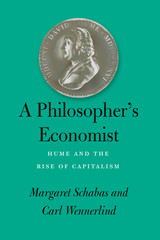 A Philosopher's Economist: Hume and the Rise of Capitalism
Margaret Schabas and Carl Wennerlind
University of Chicago Press, 2020 Reconsiders the centrality and legacy of Hume’s economic thought and serves as an important springboard for reflections on the philosophical underpinnings of economics.
Although David Hume’s contributions to philosophy are firmly established, his economics has been largely overlooked. A Philosopher’s Economist offers the definitive account of Hume’s “worldly philosophy” and argues that economics was a central preoccupation of his life and work. Margaret Schabas and Carl Wennerlind show that Hume made important contributions to the science of economics, notably on money, trade, and public finance. Hume’s astute understanding of human behavior provided an important foundation for his economics and proved essential to his analysis of the ethical and political dimensions of capitalism. Hume also linked his economic theory with policy recommendations and sought to influence people in power. While in favor of the modern commercial world, believing that it had and would continue to raise standards of living, promote peaceful relations, and foster moral refinement, Hume was not an unqualified enthusiast. He recognized many of the underlying injustices of capitalism, its tendencies to promote avarice and inequality, as well as its potential for political instability and absolutism.
Hume’s imprint on modern economics is profound and far-reaching, whether through his close friend Adam Smith or later admirers such as John Maynard Keynes and Friedrich Hayek. Schabas and Wennerlind’s book compels us to reconsider the centrality and legacy of Hume’s economic thought—for both his time and ours—and thus serves as an important springboard for reflections on the philosophical underpinnings of economics.
Philosophers of the Renaissance
Paul Richard Blum
Catholic University of America Press, 2010 Philosophers of the Renaissance introduces readers to philosophical thinking from the end of the Middle Ages through the sixteenth century.
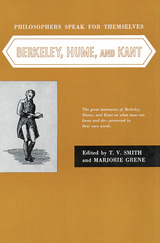 Philosophers Speak for Themselves: Berkeley, Hume, and Kant
Edited by Thomas Vernor Smith and Marjorie Grene
University of Chicago Press, 1957 The philosophic search for truth has been evident in all ages and among all peoples. The developments of each generation require new philosophies and the recasting of old ones. The eighteenth century was no exception, and the scientific advances of the times brought about many innovations in philosophic thought. At a time when scientists were reducing certain phenomena of the natural world to expressions of a few simple mathematical laws, men such as Berkeley, Hume, and Kant were trying to discover how far and on what basis human reason could be applied with similar success in other fields. The selections in this book, preceded by short biographical sketches, document this philosophic search. "The selections are liberal and well chosen, indeed only an examination of the table of contents will give an adequate idea of the value of this volume. . . . How better can one become a modern thinker than by reading and studying at first hand the writings that have made modern thought possible?"—Roger W. Holmes, The Philosophical Review
Philosophers Speak for Themselves: From Descartes to Locke
Edited by Thomas Vernor Smith and Marjorie Grene
University of Chicago Press, 1940 Modern thought and modes of living have been immeasurably influenced by the philosophers of the Enlightenment—men such as Descartes, Hobbes, Spinoza, Newton, Leibniz, and Locke. Gathered together in this book and preceded by valuable biographical sketches are selections from the basic and most significant writings of each of these men.
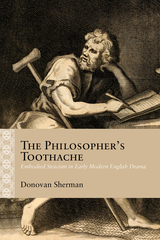 The Philosopher's Toothache: Embodied Stoicism in Early Modern English Drama
Donovan Sherman
Northwestern University Press, 2022 The Philosopher’s Toothache proposes that early modern Stoicism constituted a radical mode of performance. Stoicism—with its focus on bodily sensation, imagined spectatorship, and daily mental and physical exercise—exists as what the philosopher Pierre Hadot calls a “way of life,” a set of habits and practices. To be a Stoic is not to espouse doctrine but to act.
Informed by work in both classical philosophy and performance studies, Donovan Sherman argues that Stoicism infused the complex theatrical culture of early modern England. Plays written and performed during this period gave life to Stoic exercises that instructed audiences to cultivate their virtue, self-awareness, and creativity. By foregrounding Stoicism’s embodied nature, Sherman recovers a vital dimension too often lost in reductive portrayals of the Stoics by early modern writers and contemporary scholars alike. The Philosopher’s Toothache features readings of dramatic works by William Shakespeare, Cyril Tourneur, and John Marston alongside considerations of early modern adaptations of classical Stoics (Seneca, Epictetus, and Marcus Aurelius) and Neo-Stoics such as Justus Lipsius. These plays model Stoic virtues like unpredictability, indifference, vulnerability, and dependence—attributes often framed as negative but that can also rekindle a sense of responsible public action.
The Philosophic Thought of Ayn Rand
Edited by Douglas J. Den Uyl and Douglas B. Rasmussen
University of Illinois Press, 1984 "An excellent book that provides
a systematic account of Rand's work as a philosopher.... The Philosophic
Thought of Ayn Rand gathers contributions from professional philosophers
(some of them quite renowned) to tackle the various components --- metaphysical/epistemological,
ethical, and social/political --- of Rand's comprehensive system. All the
contributors demonstrate the particular genius of current academic philosophy:
the painstaking and meticulous analysis of assumptions with an eye toward
the coherence and consistency of the conclusions derived therefrom.... Thorough
and judicious, this book will provide the reader with the intellectual leverage
necessary to understand an often confusing, always controversial, occasionally
original, and perhaps curiously contemporary writer and thinker."
-- Lloyd Lewis, Modern Fiction Studies
The Philosophical Actor: A Practical Meditation for Practicing Theatre Artists
Donna Soto-Morettini
Intellect Books, 2010 There have been many books published on acting, actor training, and practical theories for preparing for a role, but none of these books have ever looked philosophically at the language and the concepts that we use when we talk about acting. The Philosophical Actor is the first attempt to grapple with the fundamental questions of truth, art, and human nature unexamined in past treatments, from the first great essay by Diderot to the exhaustive system described by Stanislavski. With wide appeal to actors, directors, acting students, acting teachers and trainers, Donna Soto-Morettini draws from twenty-five years of experience as an acting teacher and director to introduce innovative ways of thinking about acting.
Philosophical Approaches to Communication
Claude Mangion
Intellect Books, 2011 A comprehensive introduction to the forms and various philosophical theories of communication, this volume is composed of three sections focusing on the production of culturally relevant communication, the interpretation of communicative messages, and the effects of communication on both speaker and listener. Each section draws on the work of key philosophers—from Foucault to Derrida to Habermas—and presents a detailed critical overview of the work in relation to the field of communication. Exhaustively researched, this book presents an up-to-date overview of thinking on communication theory in one inclusive volume.
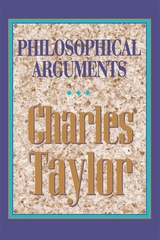 Philosophical Arguments
Charles Taylor
Harvard University Press, 1995 “Among the leading philosophers of our time, Charles Taylor stands out for the sheer breadth of his interests and influence…Illuminating and rewarding.” —David Miller, Times Literary Supplement
Charles Taylor is one of the most important English-language philosophers at work today; he is also unique in the philosophical community in applying his ideas on language and epistemology to social theory and political problems. In this book Taylor brings together some of his best essays, including “Overcoming Epistemology,” “The Validity of Transcendental Argument,” “Irreducibly Social Goods,” and “The Politics of Recognition.” As usual, his arguments are trenchant, straddling the length and breadth of contemporary philosophy and public discourse.
The strongest theme running through the book is Taylor’s critique of disengagement, instrumental reason, and atomism: that individual instances of knowledge, judgment, discourse, or action cannot be intelligible in abstraction from the outside world. By developing his arguments about the importance of “engaged agency,” Taylor simultaneously addresses themes in philosophical debate and in a broader discourse of political theory and cultural studies. The thirteen essays in this collection reflect most of the concerns with which he has been involved throughout his career—language, ideas of the self, political participation, the nature of modernity. His intellectual range is extraordinary, as is his ability to clarify what is at stake in difficult philosophical disputes. Taylor’s analyses of liberal democracy, welfare economics, and multiculturalism have real political significance, and his voice is distinctive and wise.
 Philosophical Consequences of Quantum Theory: Reflections on Bell's Theorem
James T. Cushing
University of Notre Dame Press, 1989 From the beginning, the implications of quantum theory for our most general understanding of the world have been a matter of intense debate. Einstein argues that the theory had to be regarded as fundamentally incomplete. Its inability, for example, to predict the exact time of decay of a single radioactive atom had to be due to a failure of the theory and not due to a permanent inability on our part or a fundamental indeterminism in nature itself.
In 1964, John Bell derived a theorem which showed that any deterministic theory which preserved "locality" (i.e., which rejected action at a distance) would have certain consequences for measurements performed at a distance from one another. An experimental check seems to show that these consequences are not, in fact, realized. The correlation between the sets of events is much stronger than any "local" deterministic theory could allow. What is more, this stronger correlation is precisely that which is predicted by quantum theory. The astonishing result is that local deterministic theories of the classical sort seem to be permanently excluded. Not only can the individual decay not be predicted, but no future theory can ever predict it. The contributors in this volume wrestle with this conclusion. Some welcome it; others leave open a return to at least some kind of deterministic world, one which must however allow something like action-at-a distance.
Philosophical Correspondence, 1759-1799
Immanuel Kant
University of Chicago Press, 1986 Drawn from the Prussian Academy edition of Kant's collected works, these letters make it possible to trace the development of Kant's thought from his earliest worries about the topics discussed in the Critique of Pure Reason to his attempts in later life to meet the objections of his critics and erstwhile disciples. "Perhaps the major value of these writings is their demonstration of Kant's own attitude towards his philosophical works."—Paul Arthur Schilpp, Saturday Review
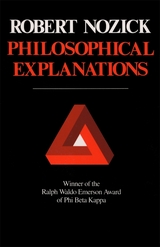 Philosophical Explanations
Robert Nozick
Harvard University Press, 1983 In this highly original work, Robert Nozick develops new views on philosophy’s central topics and weaves them into a unified philosophical perspective. It is many years since a major work in English has ranged so widely over philosophy’s fundamental concerns: the identity of the self, knowledge and skepticism, free will, the question of why there is something rather than nothing, the foundations of ethics, the meaning of life.
Writing in a distinctive and personal philosophical voice, Mr. Nozick presents a new mode of philosophizing. In place of the usual semi-coercive philosophical goals of proof, of forcing people to accept conclusions, this book seeks philosophical explanations and understanding, and thereby stays truer to the original motivations for being interested in philosophy.
Combining new concepts, daring hypotheses, rigorous reasoning, and playful exploration, the book exemplifies how philosophy can be part of the humanities.
Philosophical Fragments
Friedrich SchlegelTranslated by Peter FirchowForeword by Rodolphe Gasche
University of Minnesota Press, 1991 Philosophical Fragments was first published in 1991. Minnesota Archive Editions uses digital technology to make long-unavailable books once again accessible, and are published unaltered from the original University of Minnesota Press editions. At a time when the function of criticism is again coming under close skeptical scrutiny, Schlegel's unorthodox, highly original mind, as revealed in these foundational "fragments," provides the critical framework for reflecting on contemporary experimental texts.
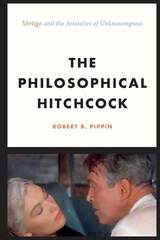 The Philosophical Hitchcock: “Vertigo” and the Anxieties of Unknowingness
Robert B. Pippin
University of Chicago Press, 2017 On the surface, The Philosophical Hitchcock: Vertigo and the Anxieties of Unknowingness, is a close reading of Alfred Hitchcock’s 1958 masterpiece Vertigo. This, however, is a book by Robert B. Pippin, one of our most penetrating and creative philosophers, and so it is also much more. Even as he provides detailed readings of each scene in the film, and its story of obsession and fantasy, Pippin reflects more broadly on the modern world depicted in Hitchcock’s films. Hitchcock’s characters, Pippin shows us, repeatedly face problems and dangers rooted in our general failure to understand others—or even ourselves—very well, or to make effective use of what little we do understand. Vertigo, with its impersonations, deceptions, and fantasies, embodies a general, common struggle for mutual understanding in the late modern social world of ever more complex dependencies. By treating this problem through a filmed fictional narrative, rather than discursively, Pippin argues, Hitchcock is able to help us see the systematic and deep mutual misunderstanding and self-deceit that we are subject to when we try to establish the knowledge necessary for love, trust, and commitment, and what it might be to live in such a state of unknowingness.
A bold, brilliant exploration of one of the most admired works of cinema, The Philosophical Hitchcock will lead philosophers and cinephiles alike to a new appreciation of Vertigo and its meanings.
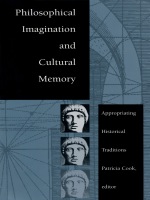 Philosophical Imagination and Cultural Memory: Appropriating Historical Traditions
Patricia Cook, ed.
Duke University Press, 1993 Does philosophy have a future? Postmodern thought, with its rejection of claims to absolute truth or moral objectivity, would seem to put the philosophical enterprise in jeopardy. In this volume some of today's most influential thinkers face the question of philosophy's future and find an answer in its past. Their efforts show how historical traditions are currently being appropriated by philosophy, how some of the most provocative questions confronted by philosophers are given their impetus and direction by cultural memory. Unlike analytic philosophy, a discipline supposedly liberated from any manifestation of cultural memory, the movement represented by these essays demonstrates how the inquiries, narratives, traditions, and events of our cultural past can mediate some of the most interesting exercises of the present-day philosophical imagination. Attesting to the power of historical tradition to enhance and redirect the prospects of philosophy these essays exemplify a new mode of doing philosophy. The product of a National Endowment for the Humanities Summer Institute in 1990, it is the task of this book to show that history can be reclaimed by philosophy and resurrected in postmodernity. Contributors. George Allan, Eva T. H. Brann, Arthur C. Danto, Lynn S. Joy, George L. Kline, George R. Lucas, Jr., Alasdair MacIntyre, Robert C. Neville, John Rickard, Stanley Rosen, J. B. Scheenwind, Donald Phillip Verene
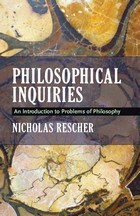 Philosophical Inquiries: An Introduction to Problems of Philosophy
Nicholas Rescher
University of Pittsburgh Press, 2010 In Philosophical Inquiries, Nicholas Rescher offers his perspectives on many of the foundational concerns of philosophy and reminds us that the purpose of philosophy is to “question the questions.” Rescher sees the need to inquire as an evolutionary tool for adapting to a hostile environment and shows how philosophy has thus developed in an evolutionary fashion, building upon acquired knowledge and upon itself. In a historical thread that informs and enriches his overview, Rescher recalls the contributions of Aristotle, Plato, Plotinus, Kant, Hegel, Leibniz, Laplace, Bertrand Russell, and others.
Among his many topics, Rescher discusses knowledge and the unattainablity of absolutes, skepticism and its self-defeating nature, the limits of science vs. the limits of cognition, refuting reality as mind-independent, and idealism and divining our role in nature. He considers the universe and intelligence as the product of intelligent design, science and religion as non-conflicting and purposeful pursuits, and determinism and other fallacies surrounding the concept of free will. Rescher views morality in its hierarchal structure, its applicability to human coexistence, and its ontological commitment to the enhancement of value for ourselves and our world. He examines questions of authority and the problem of judging past actions or knowledge by present standards. Overall, he argues for philosophy as an unavoidable tool for rational, cogent responses to large questions.
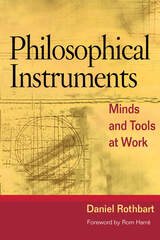 Philosophical Instruments: Minds and Tools at Work
Daniel Rothbart. Foreword by Rom Harré
University of Illinois Press, 2006 The surprising roles of instruments and experimentation in acquiring knowledge In Philosophical Instruments Daniel Rothbart argues that our tools are not just neutral intermediaries between humans and the natural world, but are devices that demand new ideas about reality. Just as a hunter's new spear can change their knowledge of the environment, so can the development of modern scientific equipment alter our view of the world. Working at the intersections of science, technology, and philosophy, Rothbart examines the revolution in knowledge brought on by recent advances in scientific instruments. Full of examples from historical and contemporary science, including electron scanning microscopes, sixteenth-century philosophical instruments, and diffraction devices used by biochemical researchers, Rothbart explores the ways in which instrumentation advances a philosophical stance about an instrument's power, an experimenter's skills, and a specimen's properties. Through a close reading of engineering of instruments, he introduces a philosophy from (rather than of) design, contending that philosophical ideas are channeled from design plans to models and from model into the use of the devices.
A Philosophical Introduction to Probability
Maria Carla Galavotti
CSLI, 2004 Not limited to merely mathematics, probability has a rich and controversial philosophical aspect. A Philosophical Introduction to Probability showcases lesser-known philosophical notions of probability and explores the debate over their interpretations. Galavotti traces the history of probability and its mathematical properties and then discusses various philosophical positions on probability, from the Pierre Simon de Laplace's “classical” interpretation of probability to the logical interpretation proposed by John Maynard Keynes. This book is a valuable resource for students in philosophy and mathematics and all readers interested in notions of probability.
The Philosophical Life
Arthur P. Urbano
Catholic University of America Press, 2013 Ancient biographies were more than accounts of the deeds of past heroes and guides for moral living. They were also arenas for debating pressing philosophical questions and establishing intellectual credentials, as Arthur P. Urbano argues in this study of biographies composed in Late Antiquity
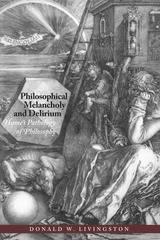 Philosophical Melancholy and Delirium: Hume's Pathology of Philosophy
Donald W. Livingston
University of Chicago Press, 1998 The Scottish philosopher David Hume is commonly understood as the original proponent of the "end of philosophy." In this powerful new study, Donald Livingston completely revises our understanding of Hume's thought through his investigation of Hume's distinction between "true" and "false" philosophy. For Hume, false philosophy leads either to melancholy over the groundlessness of common opinion or delirium over transcending it, while true philosophy leads to wisdom. Livingston traces this distinction through all of Hume's writings, providing a systematic pathology of the corrupt philosophical consciousness in history, politics, philosophy, and literature that characterized Hume's own time as well as ours.
By demonstrating how a philosophical method can be used to expose the political motivations behind intellectual positions, historical events, and their subsequent interpretations, Livingston revitalizes Hume's thought and reveals its relevance for contemporary dicussions of politics, nationalism, and ideology for the first time.
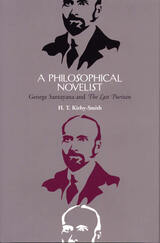 A Philosophical Novelist: George Santayana and the Last Puritan
H. T. Kirby-Smith
Southern Illinois University Press, 1997
H. T. Kirby-Smith uses Santayana’s 1936 novel, The Last Puritan, as both an occasion and a means for bringing into focus the complex relations between Santayana’s life, his personality, and his philosophy. Opening with an account of Santayana’s various literary styles and arguing for the significance of Santayana’s writing of philosophy as literature, Kirby-Smith notes that Santayana saw the rational life as a continual adjustment and accommodation of contradictory claims. And he saw a literary style as an accommodation of the author to the reader.
Chapters 2 through 5 provide the philosophical background for a consideration of The Last Puritan, summarizing exactly how Santayana assimilated other philosophies into his own.
Chapters 6 and 7 incorporate Santayana’s three-volume autobiography, his letters and memoirs, and biographical studies by others into a psychological portrait of the author. All of this is in preparation for chapters 8 and 9, which focus on The Last Puritan. Kirby-Smith closes with a chapter that serves as a legal brief in defense of the author against the harsh, sometimes malicious attacks of his critics.
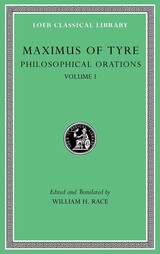 Philosophical Orations, Volume I: Orations 1–21
Maximus of Tyre
Harvard University Press, 2023 A Platonic evangelist’s lectures on the good life.
Maximus of Tyre, active probably in the latter half of the second century AD, was a devoted Platonist whose only surviving work consists of forty-one brief addresses on various topics of ethical, philosophical, and theological import including the nature of divinity, the immortality of the soul, the sources of good and evil, the injustice of vengeance, the tyranny of pleasures and desires, the contribution of the liberal arts, and the pursuit of happiness, among many others. These addresses are conveniently labeled orations, but their fluid and hybrid style resists precise generic categorization, so that they could also be called discourses, speeches, lectures, talks, inquiries, essays, or even sermons.
In his orations Maximus strove to elucidate the philosophical life of virtue, especially as exemplified in the career of Socrates and in the writings of Plato, inviting his audience, sometimes addressed as young men, to share in his knowledge, to appreciate his fresh presentation of philosophical topics, and perhaps even to join him in pursuing philosophy. Drawing on the Hellenic cultural tradition from Homer to the death of Alexander the Great, Maximus offers a rich collection of the famous philosophical, literary, and historical figures, events, ideas, successes, and failures that constituted Greek paideia in the so-called Second Sophistic era.
This edition of Maximus’ Philosophical Orations offers a fresh translation, ample annotation, and a text fully informed by current scholarship.
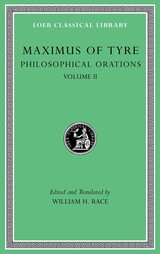 Philosophical Orations, Volume II: Orations 22–41
Maximus of Tyre
Harvard University Press, 2023 A Platonic evangelist’s lectures on the good life.
Maximus of Tyre, active probably in the latter half of the second century AD, was a devoted Platonist whose only surviving work consists of forty-one brief addresses on various topics of ethical, philosophical, and theological import including the nature of divinity, the immortality of the soul, the sources of good and evil, the injustice of vengeance, the tyranny of pleasures and desires, the contribution of the liberal arts, and the pursuit of happiness, among many others. These addresses are conveniently labeled orations, but their fluid and hybrid style resists precise generic categorization, so that they could also be called discourses, speeches, lectures, talks, inquiries, essays, or even sermons.
In his orations Maximus strove to elucidate the philosophical life of virtue, especially as exemplified in the career of Socrates and in the writings of Plato, inviting his audience, sometimes addressed as young men, to share in his knowledge, to appreciate his fresh presentation of philosophical topics, and perhaps even to join him in pursuing philosophy. Drawing on the Hellenic cultural tradition from Homer to the death of Alexander the Great, Maximus offers a rich collection of the famous philosophical, literary, and historical figures, events, ideas, successes, and failures that constituted Greek paideia in the so-called Second Sophistic era.
This edition of Maximus’ Philosophical Orations offers a fresh translation, ample annotation, and a text fully informed by current scholarship.
The Philosophical Papers of Alan Donagan, Volume 1: Historical Understanding and the History of Philosophy
Alan Donagan
University of Chicago Press, 1994 A major voice in late twentieth-century philosophy, Alan Donagan is distinguished for his theories on the history of philosophy and the nature of morality. The Philosophical Papers of Alan Donagan, volumes 1 and 2, collect 28 of Donagan's most important and best-known essays on historical understanding and ethics from 1957 to 1991.
Volume 1 includes essays on Spinoza, Descartes, Bradley, Collingwood, Russell, Moore, and Popper, as well as two previously unpublished papers on the history of philosophy as a discipline, and on Ryle and Wittgenstein's nature of philosophy. Linked by Donagan's commitment to the central importance of history for philosophy and his interest in problems of historical understanding, these essays represent the remarkable scope of Donagan's thought.
The Philosophical Papers of Alan Donagan, Volume 2: Action, Reason, and Value
Alan Donagan
University of Chicago Press, 1994 A major voice in late twentieth-century philosophy, Alan Donagan is distinguished for his theories on the history of philosophy and the nature of morality. The Philosophical Papers of Alan Donagan, volumes 1 and 2, collect 28 of Donagan's most important and best-known essays on historical understanding and ethics from 1957 to 1991.
Volume 2 addresses issues in the philosophy of action and moral theory. With papers on Kant, von Wright, Sellars, and Chisholm, this volume also covers a range of questions in applied ethics—from the morality of Truman's decision to drop atomic bombs on Hiroshima and Nagasaki to ethical questions in medicine and law.
 Philosophical Perspectives on Metaphor
Mark Johnson, Editor
University of Minnesota Press, 1981 Philosophical Perspectives on Metaphor was first published in 1981. Minnesota Archive Editions uses digital technology to make long-unavailable books once again accessible, and are published unaltered from the original University of Minnesota Press editions. "We are," says Mark Johnson, "in the midst of metaphormania." The past few years have seen an explosion of interest in metaphor as a vehicle for exploring the relations between language and thought. While a number of recent books have dealt with metaphor from the standpoints of several disciplines, there is no collection that shows the best of the work that has been done in the field of philosophy. Mark Johnson has brought together essays that define the central issues of the discussion in this field. His introductory essay offers a critical survey of historically influential treatments of figurative language (including those of Aristotle, Hobbes, Locke, Kant, and Nietzsche) and sets forth the nature of various issues that have been of interest to philosophers. Thus, it provides a context in which to understand the motivations, influences, and significance of the collected essays. An annotated bibliography serves as a catalog of all relevant literature. Philosophical Perspectives on Metaphor provides an entry point into the philosophical exploration of metaphor for students, philosophers, linguists, psychologists, artists, critics, or anyone interested in language and its relation to understanding and experience.
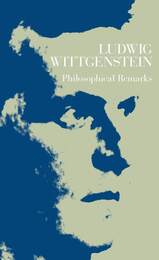 Philosophical Remarks
Ludwig Wittgenstein
University of Chicago Press, 1980 When in May 1930, the Council of Trinity College, Cambridge, had to decide whether to renew Wittgenstein's research grant, it turned to Bertrand Russell for an assessment of the work Wittgenstein had been doing over the past year. His verdict: "The theories contained in this new work . . . are novel, very original and indubitably important. Whether they are true, I do not know. As a logician who likes simplicity, I should like to think that they are not, but from what I have read of them I am quite sure that he ought to have an opportunity to work them out, since, when completed, they may easily prove to constitute a whole new philosophy."
"[Philosophical Remarks] contains the seeds of Wittgenstein's later philosophy of mind and of mathematics. Principally, he here discusses the role of indispensable in language, criticizing Russell's The Analysis of Mind. He modifies the Tractatus's picture theory of meaning by stressing that the connection between the proposition and reality is not found in the picture itself. He analyzes generality in and out of mathematics, and the notions of proof and experiment. He formulates a pain/private-language argument and discusses both behaviorism and the verifiability principle. The work is difficult but important, and it belongs in every philosophy collection."—Robert Hoffman, Philosophy
"Any serious student of Wittgenstein's work will want to study his Philosophical Remarks as a transitional book between his two great masterpieces. The Remarks is thus indispensible for anyone who seeks a complete understanding of Wittgenstein's philosophy."—Leonard Linsky, American Philosophical Association
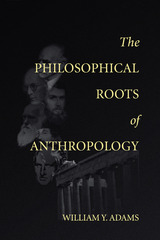 The Philosophical Roots of Anthropology
William Adams
CSLI, 1998 Anthropologists claim to have made mankind aware of its own prehistory and its importance to human self-understanding. Yet, anthropologists seem hardly to have discovered their own discipline's prehistory or to have realized its importance. William Y. Adams attempts to rectify this myopic self-awareness by applying anthropology's own tools on itself and uncovering the discipline's debt to earlier thinkers.
Like most anthropologists, Adams had previously accepted the premise that anthropology's intellectual roots go back no further than the moral philosophy of the Enlightenment, or perhaps at the earliest to the humanism of the Renaissance. In this volume, Adams recognizes that many good ideas were anticipated in antiquity and that these ideas have had a lasting influence on anthropological models in particular. He has chosen five philosophical currents whose influence has been, and is, very widespread, particularly in North American anthropology: progressivism, primitivism, natural law, German idealism, and "Indianology". He argues that the influences of these currents in North American anthropology occur in a unique combination that is not found in the anthropologies of other countries. Without neglecting the anthropologies of other countries, this work serves as the basis for the explanation of the true historical and philosophical underpinnings of anthropology and its goals.
Philosophical Standardism: An Empiricist Approach to Philosophical Methodology
Nicholas Rescher
University of Pittsburgh Press, 2000 Philosophical Standardism is ideal for bringing one of the field’s preeminent scholars into the classroom. In this novel empirical treatment of fundamental issues in philosophy, Nicholas Rescher propounds an unorthodox approach to philosophical doctrines that is predicated on the idea of standardism.
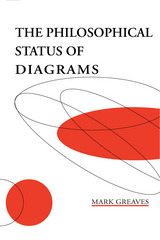 The Philosophical Status of Diagrams
Mark Greaves
CSLI, 2001 The use of diagrams in logic and geometry has encountered resistance in recent years. For a proof to be valid in geometry, it must not rely on the graphical properties of a diagram. In logic, the teaching of proofs depends on sentenial representations, ideas formed as natural language sentences such as "If A is true and B is true...." No serious formal proof system is based on diagrams.
This book explores the reasons why structured graphics have been largely ignored in contemporary formal theories of axiomatic systems. In particular, it elucidates the systematic forces in the intellectual history of mathematics which have driven the adoption of sentential representational styles over diagrammatic ones. In this book, the effects of historical forces on the evolution of diagrammatically-based systems of inference in logic and geometry are traced from antiquity to the early twentieth-century work of David Hilbert. From this exploration emerges an understanding that the present negative attitudes towards the use of diagrams in logic and geometry owe more to implicit appeals to their history and philosophical background than to any technical incompatibility with modern theories of logical systems.
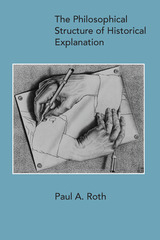 The Philosophical Structure of Historical Explanation
Paul A. Roth
Northwestern University Press, 2019 In The Philosophical Structure of Historical Explanation, Paul A. Roth resolves disputes persisting since the nineteenth century about the scientific status of history. He does this by showing why historical explanations must take the form of a narrative, making their logic explicit, and revealing how the rational evaluation of narrative explanation becomes possible. Roth situates narrative explanations within a naturalistic framework and develops a nonrealist (irrealist) metaphysics and epistemology of history—arguing that there exists no one fixed past, but many pasts. The book includes a novel reading of Thomas S. Kuhn’s The Structure of Scientific Revolutions, showing how it offers a narrative explanation of theory change in science. This book will be of interest to researchers in historiography, philosophy of history, philosophy of science, philosophy of social science, and epistemology.
Philosophical Topics 22: The Philosophy of Daniel Dennett
Christopher S. Hill
University of Arkansas Press, 1995 Contributors: Lynne Rudder Baker, Ned Block, Fred Dretske, Ivan Fox, Joseph Levine, Eric Lormand, Jeff McConnell, Brian P. McLaughlin, John O’Leary-Hawthorne, Georges Rey, Mark Richard, David M. Rosenthal, Carol Rovane, Michael Slote, Joseph Thomas Tolliver, Robert Van Gulick, Stephen Webb, Stephen L. White, and Daniel Dennett.
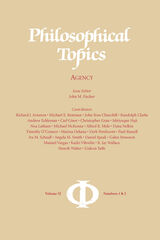 Philosophical Topics 32.1-2: Agency
John M. Fischer
University of Arkansas Press, 2004 Contents
Luck Egalitarianism Interpreted and Defended
Richard J. Arneson
Three Theories of Self-Governance
Michael E. Bratman
Reflections on an Argument from Luck
Randolph Clarke
Responsibility for Character
Andrew Eshleman
Internally Doing and Intentionally Not Doing
Carl Ginet
Irreplaceability and Unique Value
Christopher Grau
Freedom, Hedonism, and the Intrinsic Value of Lives
Ishtiyaque Haji
Determinism, Randomness, and Value
Noa Latham
Responsibility and Globally Manipulated Agents
Michael McKenna
The Illusion of Conscious Will and the Causation of Intentional Actions
Alfred R.Mele
Deliberative Alternatives
Dana Nelkin
Reasons Explanation and Agent Control: In Search of an Integrated Account
Timothy O’Connor and John Ross Churchill
Moral Accountability
Marina Oshana
Is Our Conception of Agent-Causation Coherent?
Derk Pereboom
Responsibility and the Condition of Moral Sense
Paul Russell
Ignorance and Blame
Ira M. Schnall
Conflicting Attitudes,Moral Agency, and Conceptions of the Self
Angela M. Smith
Toward an Axiological Defense of Libertarianism
Daniel Speak
Free Agents
Galen Strawson
Libertarianism and Skepticism about Free Will: Some Arguments against Both
Manuel Vargas
Free Will Demystified: A Dispositional Account
Kadri Vihvelin
Constructing Normativity
R. Jay Wallace
Neurophilosophy of Moral Responsibility: The Case for Revisionist Compatibilism
Henrik Walter
Trying, Intending, and Attempted Crimes
Gideon Yaffe
Philosophical Topics 34.1 and 34.2: Analytic Kantianism
James Conant
University of Arkansas Press, 2006 Analytic Kantianism Issue Editor: James Conant Contributors: Robert Brandom, Eli Friedlander, Michael Friedman, Hannah Ginsborg, Arata Hamawaki, Andrea Kern, Michael Kremer, Thomas Land, Thomas Lockhart, Béatrice Longuenesse, John McDowell, A.W. Moore, Sebastian Rödl, and Clinton Tolley.
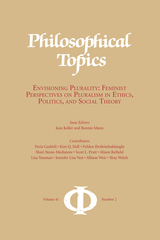 Philosophical Topics 41.2: Envisioning Plurality: Feminist Perspectives on Pluralism in Ethics, Politics, and Social Theory
Jean Keller
University of Arkansas Press, 2015 Contents:
Why a Feminist Volume on Pluralism? – Bonnie Mann and Jean Keller
PLURALISM ’S FAILURES AND CERTAIN CONDITIONS FOR THE POSSIBILITY OF SUCCESS
Indigenous Agencies and the Pluralism of Empire – Scott L. Pratt
What Would Philosophic Pluralism Look Like?: True Dialogue, Epistemic Credibility, Rational Parity, and Death in the University – Jennifer Lisa Vest
Asking Too Much? Civility vs. Pluralism – Alison Reiheld
Attending to Others: Simone Weil and Epistemic Pluralism – Shari Stone-Mediatore
FEMINIST PLURALISM AND RELIGIOUS WORLDVIEWS
Islamic Feminisms and Freedom – Allison Weir
Is an “Islamic Feminism” Possible?: Gender Politics in the Contemporary Islamic Republic of Iran – Paria Gashtili
Beyond the Modern/Religious Dichotomy: The Veil and Feminist Solidarity in Contemporary Turkey – Fulden Ibrahimhakkioglu
Philosophy, Religion, Race, and Queerness: A Question of Accommodation or Access – Kim Q. Hall
FEMINIST PLURALISM AND FUNDAMENTAL VALUES
Value Pluralism, Intuitions, and Reflective Equilibrium – Lisa Tessman
Radical-cum-Relation: Bridging Feminist Ethics and Native Individual Autonomy – Shay Welch
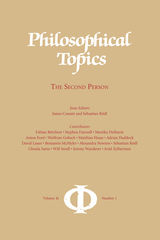 Philosophical Topics 42.1: The Second Person
James Conant
University of Arkansas Press, 2016 Contents:
Introduction – James Conant and Sebastian Rödl
THE FUNDAMENTAL CHARACTER OF THE SECOND PERSON AS A FORM OF CONSCIOUSNESS
Action and Passion – Anton Ford
What Binds Us Together: Normativity and the Second Person – Glenda Satne
Alethic Holdings – Jeremy Wanderer
THE SECOND PERSON AS A FORM OF PRACTICAL CONSCIOUSNESS
The Transmission of Skill – Will Small
For Oneself and Toward Another: The Puzzle about Recognition – Matthias Haase
THE SECOND PERSON AS THE FORM OF PRIVATE LAW
The Very Thought of (Wronging) You – Ariel Zylberman
The Idea of an Ethical Community: Kant and Hegel on the Necessity of Human Evil and the Love to Overcome It – Wolfram Gobsch
The Social and the Sociable – Stephen Darwall
THE PLACE OF THE SECOND PERSON IN THEORETICAL KNOWLEDGE
Theoretical Anarchism – Benjamin McMyler
Darwall on Action and the Idea of a Second-Personal Reason – Fabian Börchers
Kant on Testimony and the Communicability of Empirical Knowledge – Alexandra Newton
Testimony and Generality – Sebastian Rödl
ADDRESS AND ACKNOWLEDGMENT
Understanding Others in Social Interactions – Monika Dullstein
What Is It to Know Someone? – David Lauer
On Address – Adrian Haddock
Philosophical Topics 42.2: Contemporary Tractatus
Edward Minar
University of Arkansas Press, 2016 Contents:
Eliminating Ethics: Wittgenstein, Ethics, and the Limits of Sense – Edmund Dain
Addressing Russell Resolutely? – Cora Diamond
Missing a Step Up the Ladder – Eli Friedlander
Wittgenstein and “Tonk”: Inference and Representation in the Tractatus (and Beyond) – Martin Gustafsson
Resolute Reading – Kelly Dean Jolley
The Method of Language-Games as a Method of Logic – Oskari Kuusela
Austerity, Psychology, and the Intelligibility of Nonsense – Denis McManus
Showing, the Medium Voice, and the Unity of the Tractatus – Jean-Philippe Narboux
Analysis, Independence, Simplicity, and the General Sentence-Form – Thomas Ricketts
In What Way Does Logic Involve Necessity? – Sanford Shieh
Solipsism and the Limits of Sense in the Tractatus – Jônadas Techio
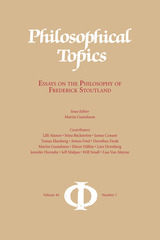 Philosophical Topics 44.1: Essays on the Philosophy of Frederick Stoutland
Martin Gustafsson
University of Arkansas Press, 2016 Contents: Introduction – Martin Gustafsson
Self-Awareness and Cognitive Agency in Descartes’s Meditations – Lilli Alanen
Why an Aristotelian Account of Truth Is (More or Less) All We Need – Jeff Malpas
The Social Aspects of Aristotle’s Theory of Action – Dorothea Frede
Voluntarism, Intellectualism, and Anselm on Motivation – Tomas Ekenberg
Why Kant is not a Kantian – James Conant
“A Contrast between Two Pictures”: The Case of Perception – Jennifer Hornsby
On What Is in Front of Your Nose – Anton Ford
Expression and Self-Consciousness – Stina Bäckström
Bodily Movement and Its Significance – Will Small
Anscombe’s Bird, Wittgenstein’s Cat: Intention, Expression, and Convention – Martin Gustafsson
Film Noir and Weakly Intentional Actions: An Anscombian Analysis – Elinor Hållén
Theory, Interpretation, and Law: Some Worries about Dworkin’s Account of Their Relation – Lisa Van Alstyne
Stoutland vs. Metaphysics – Lars Hertzberg
Philosophical Topics 45.2: Philosophy of Language
Jason Stanley
University of Arkansas Press, 2017 Contributors: Luvell Anderson, Keota Fields, Justin Khoo, Carlotta Pavese, Brian Rabern, Jennifer M. Saul, Una Stojnic, Eric Swanson, Lynne Tirrell Contents:
Hermeneutical Impasses – Luvell Anderson
Intensional Liar – Keota Fields
Code Words in Political Discourse – Justin Khoo
A Theory of Practical Meaning – Carlotta Pavese
Racial Figleaves, the Shifting Boundaries of the Permissible, and the Rise of Donald Trump – Jennifer M. Saul
Omissive Implicature – Eric Swanson
Toxic Speech: Toward an Epidemiology of Discursive Harm – Lynne Tirrell
SYMPOSIUM ON TWO DIMENSIONAL SEMANTICS
On the Connection between Semantic Content and the Objects of Assertion – Una Stojnić
A Bridge from Semantic Value to Content – Brian Rabern
The Philosophical Vision of John Duns Scotus: An Introduction
Mary Beth Ingham
Catholic University of America Press, 2004 In this much-anticipated work, distinguished authors Mary Beth Ingham and Mechthild Dreyer present an accessible introduction to the philosophy of the thirteenth century Franciscan John Duns Scotus
Philosophical Witnessing: The Holocaust as Presence
Berel Lang
Brandeis University Press, 2012 In this volume, eminent scholar Berel Lang brings the perspective of philosophical analysis to bear on issues related to the Holocaust. Setting out from a conception of philosophical “witnessing” that expands and illuminates the standard view of the witness, he confronts the question of what philosophy can add to the views of the Holocaust provided in other disciplines. Drawing on the philosophical areas of political theory, ethics, aesthetics, and the philosophy of history, he draws attention especially to the post-Holocaust emphasis on the concepts of genocide and “group rights.” Lang’s study, which emphasizes the moral choices that now face post-Holocaust thought, inspires the reader to think of the Holocaust in new ways, showing how its continued presence in contemporary consciousness affects areas of thought and practice not directly associated with that event.
 Philosophical Writing: Locke, Berkeley, Hume
John J. Richetti
Harvard University Press, 1983 Locke, Berkeley, and Hume have profoundly influenced moral and political thought. Yet part of their persuasiveness and stature is inextricably bound to their skill with words. In Philosophical Writing, John Richetti suspends purely philosophical questions in order to analyze the writing strategies of the three great eighteenth-century British philosophers.
In place of recent analysis that finds philosophical writing undermined by its rhetorical operations, this assessment explores the self-conscious attempts of Locke, Berkeley, and Hume to strike a balance between the rational demonstration they adhere to as philosophers and the powerful persuasiveness they manage in their writing. Richetti shows that, though the three share a deep distrust of language and rhetoric, they also share a confidence in crafted writing and a dependence on its techniques for dramatizing and promoting their thought. Placing each in context of the thought and literature of the times, he describes their differing approaches to the problem of a suitable rhetorical mode for philosophy.
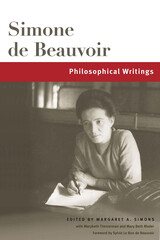 Philosophical Writings
Simone de Beauvoir; Edited by Margaret A. Simons with Marybeth Timmermann and Mary Beth Mader;Foreword by Sylvie Le Bon de Beauvoir
University of Illinois Press, 2021 Despite growing interest in her philosophy, Simone de Beauvoir remains widely misunderstood. She is typically portrayed as a mere intellectual follower of her companion, Jean-Paul Sartre. In Philosophical Writings, Beauvoir herself shows that nothing could be further from the truth. Beauvoir's philosophical work suffers from a lack of English-language translation or, worse, mistranslation into heavily condensed popular versions. Philosophical Writings provides an unprecedented collection of complete, scholarly editions of philosophical texts that cover the first twenty-three years of Beauvoir's career, including a number of recently discovered works. Ranging from metaphysical literature to existentialist ethics, Philosophical Writings brings together diverse elements of Beauvoir's work while highlighting continuities in the development of her thought. Each of the translations features detailed notes and a scholarly introduction explaining its larger significance. Revelatory and long overdue, Philosophical Writings adds to the ongoing resurgence of interest in Beauvoir's thought and to her growing influence on today's philosophical curriculum.
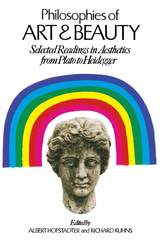 Philosophies of Art and Beauty: Selected Readings in Aesthetics from Plato to Heidegger
Albert Hofstadter and Richard Kuhns
University of Chicago Press, 1976 A remarkably wide-ranging anthology that covers the major philosophical works on art and aesthetics from the ancients to today
This anthology of primary texts gathers an incredibly large number of the most important philosophical writings on art and aesthetics from the ancient Greeks to contemporary thought. Albert Hofstadter and Richard Kuhns present English-language translations of works of - Plato
- Aristotle
- Plotinus
- Augustine
- Marsilio Ficino
- Earl of Shaftesbury
- Kant
- Schelling
- Hegel
- Schopenhauer
- Nietzsche
- Benedetto Croce
- John Dewey
- Heidegger
This anthology is remarkable not only for those selections, but also for the editors' general introduction and the introductory essays for each selection, which make this volume an invaluable aid to the study of the powerful, recurrent ideas concerning art, beauty, critical method, and the nature of representation. Because this collection makes clear the ways in which the philosophy of art relates to and is part of general philosophical positions, it will be an essential sourcebook to students of philosophy, art history, and literary criticism.
 Philosophies of Sex: Critical Essays on The Hermaphrodite
Edited and with an introduction by Renée Bergland and Gary Williams
Ohio State University Press, 2012 Philosophies of Sex: Critical Essays on The Hermaphrodite is the first collection of critical studies of Julia Ward Howe’s long-secret novel that, since its initial publication in 2004, has caused a seismic shift in how we understand gender awareness and sexuality in antebellum America. Howe figures in the history of the nineteenth-century American literature primarily as a poet, most famous for having written the lyrics to “Battle Hymn of the Republic.” Renée Bergland and Gary Williams have assembled a luminous array of essays by eminent scholars of the nineteenth-century American literature, providing fascinating—and widely differing—contexts in which to understand Howe’s venture into territory altogether foreign to American writers in her day. An introduction by Bergland and Williams traces the (re)discovery of Howe’s manuscript and the beginnings of commentary as word spread about this remarkable text. Mary Grant, an early reader, invokes the excitement and frontier spirit of women’s history in the 1970s. Marianne Noble and Laura Saltz place the narrative within the frames of European and American Romanticism and of Howe’s other writings. Betsy Klimasmith, Williams, Bethany Schneider, and Joyce Warren explore connections between Howe’s novel and other ground-breaking nineteenth-century works on gender, sexuality, and relationship. Bergland and Suzanne Ashworth explore The Hermaphrodite’s suggestive invocations of two other kinds of “texts”: sculpture and theology.
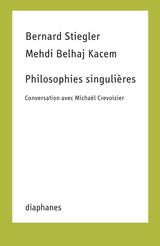 Philosophies singulières: Conversation avec Michaël Crevoisier
Mehdi Belhaj Kacem and Bernard Stiegler
Diaphanes, 2021 Rarement les philosophes dont la formation s’est faite à l'écart de l’université se sont entretenus. Le temps d’une conversation Mehdi Belhaj Kacem et Bernard Stiegler se sont prêtés au jeu, échangeant à propos de ce qui les lie à la philosophie. Inévitablement, la mort tragique de Bernard Stiegler survenue un an plus tard, donne à lire ce texte avec un regard affecté. D’autant plus qu’ici, l’enthousiasme des échanges nous fait sentir le mouvement vivant de philosophies à l’œuvre, continuant de se constituer en système.
En effet, bien que les œuvres de ces deux auteurs soient singulières, l’une et l’autre procèdent d’une même exigence qui les place au centre de la tradition philosophique : produire un système conceptuel qui donne à penser la nouveauté de la situation historique. À quoi bon la cohérence d’une philosophie qui ne nous dirait rien de ce qu’est devenu le monde ? Que vaudrait l’abstraction conceptuelle si celle-ci n’était pas au service de la compréhension de ce qui nous transforme ? Ainsi, les deux auteurs nous appellent à ne pas oublier : l’enjeu de la philosophie n’est pas la philosophie. Cette exigence critique, la présente conversation la réfléchit à bras le corps, non sans détours et tourments, mais avec franchise et esprit de liberté.
 Philosophizing the Everyday: Revolutionary Praxis and the Fate of Cultural Theory
John Roberts
Pluto Press, 2006 After modernism and postmodernism, it is argued, the everyday supposedly is where a democracy of taste is brought into being - the place where art goes to recover its customary and collective pleasures, and where the shared pleasures of popular culture are indulged, from celebrity magazines to shopping malls.
John Roberts argues that this understanding of the everyday downgrades its revolutionary meaning and philosophical implications. Bringing radical political theory back to the centre of the discussion, he shows how notions of cultural democratization have been oversimplified. Asserting that the everyday should not be narrowly identified with the popular, Roberts critiques the way in which the concept is now overly associated with consumption and 'ordinariness'.
Engaging with the work of key thinkers including, Lukács, Arvatov, Benjamin, Lefebvre, Gramsci, Barthes, Vaneigem, and de Certeau, Roberts shows how the concept of the everyday continues to be central to debates on ideology, revolution and praxis. He offers a lucid account of different approaches that developed over the course of the twentieth century, making this an ideal book for anyone looking for a politicised approach to cultural theory.
John Roberts is a Senior Research Fellow in Fine Art at the University of Wolverhampton. He is the author of The Art of Interruption: Realism, Photography and the Everyday (Manchester University Press, 1997) and The Philistine Controversy (Verso, with Dave Beech, 2002), plus other books and numerous articles, in Radical Philosophy and elsewhere.
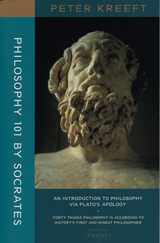 Philosophy 101 by Socrates: An Introduction to Philosophy via Plato's Apology
Peter Kreeft
St. Augustine's Press, 2002 Philosophy means “the love of wisdom.” Kreeft uses the dialogues of Socrates to help the reader grow in that love. He says that no master of the art of philosophizing has ever been more simple, clear, and accessible to beginners as has Socrates. He focuses on Plato’s dialogues, the Apology of Socrates, as a lively example to imitate, and a model partner for the reader for dialogue. Kreeft calls it “the Magna Carta of philosophy,” a timeless classic that is “a portable classroom.” “If only every introductory course were as engaging as Philosophy 101 by Peter Kreeft! Kreeft offers a marvelous way of using Plato’s Apology both to introduce the whole scope of philosopher and to evoke a personal response. Even the diffident freshman, prone to keeping a new subject like philosopher as arm’s length, will feel the enchantment of love-for-wisdom that philosophy is supposed to be.” – Joseph W. Koterski, S.J., chair, Department of Philosophy, Fordham University “A terrific introduction to philosophy through this not uncontroversial commentary on Plato’s Apology. Not everyone will agree that Socrates provided the best possible defense for himself nor that he intended to. But Kreeft’s is an eminently defensible reading of the Apology and will awaken many a student to the delights of Plato and Philosophy. The comparisons of Socrates with Christ are fascinating. This book will go a long way to consoling those who are not privileged to have Socrates or Kreeft as teachers in the flesh.” – Janet Smith, Sacred Heart Major Seminary, Detroit
Philosophy and Art
Daniel O. Dahlstrom
Catholic University of America Press, 2018 The 13 essays in this collection are marked by a diversity of philosophical styles and perspectives on art. While some authors focus on specific forms of art, others are more concerned with the interpretation given to art by past and contemporary philosop
 Philosophy and Non-Philosophy
François Laruelle
University of Minnesota Press, 2013
Each generation invents new practices and new writings of philosophy. Ours should have been able to introduce certain mutations that would at least be equivalent with those of cubism, abstract art, and twelve-tone serialism: it has only partially done so. But after all the deconstructions, after Wittgenstein, Heidegger, and Derrida, this demand takes on a different dimension: What do we do with philosophy itself? How do we globally change our relation to this thought, which keeps indicating that it is increasingly conservative and repetitive? These two questions together have prompted what we call “non-philosophy.”
Non-philosophy is not the negation of philosophy. It is the suspension of philosophy’s claim to think the real (Principle of Sufficient Philosophy), and it is the invention of new usages of thought and language that disrupt the rational narrative of the real, which is precisely what every philosophy is. Non-philosophy should rather be understood à la the “non-Euclidean,” namely, as a generalization of the philosophical beyond its traditional limitation by the unitary or “Heraclitean” postulate. From then on, an infinite number of philosophical decisions that are no longer mutually exclusive will correspond with any real phenomenon. Philosophy and Non-Philosophy is widely considered the first fully explicit elaboration of non-philosophy and one of its most important introductory texts.
Philosophy and Non-Philosophy since Merleau-Ponty
Hugh J. Silverman
Northwestern University Press, 1997 In Philosophy and Non-Philosophy since Merleau-Ponty, editor Hugh J. Silverman has collected essays from the leading scholars in Continental philosophy, creating a forum for the discussion of contemporary writings and differing perspectives on the role of philosophy (and its relation to "non-philosophy") since the death of Merleau-Ponty: Sartre, Barthes, Heidegger, Lacan, Levinas, Deleuze, Foucault, Lyotard, Habermas, and Derrida.
Included in this volume is Silverman's translation of Merleau-Ponty's last course at the Collège de France in 1960-61 and an extensive research bibliography. Originally published in 1988, Philosophy and Non-Philosophy since Merleau-Ponty is a fascinating inquiry into the developments, directions, and ruptures in Continental philosophy since Merleau-Ponty's death in 1961.
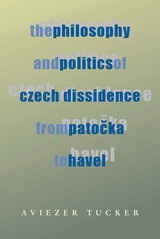 The Philosophy and Politics of Czech Dissidence from Patocka to Havel
Aviezer Tucker
University of Pittsburgh Press, 2000
A critical study of the philosophy and political practice of the Czech dissident movement Charter 77. Aviezer Tucker examines how the political philosophy of Jan Patocka (1907–1977), founder of Charter 77, influenced the thinking and political leadership of Vaclav Havel as dissident and president.
Presents the first serious treatment of Havel as philosopher and Patocka as a political thinker. Through the Charter 77 dissident movement in Czechoslovakia, opponents of communism based their civil struggle for human rights on philosophic foundations, and members of the Charter 77 later led the Velvet Revolution. After Patocka’s self-sacrifice in 1977, Vaclav Havel emerged a strong philosophical and political force, and he continued to apply Patocka’s philosophy in order to understand the human condition under late communism and the meaning of dissidence. However, the political/philosophical orientation of the Charter 77 movement failed to provide President Havel with an adequate basis for comprehending and responding to the extraordinary political and economic problems of the postcommunist period.
In his discussion of Havel's presidency and the eventual corruption of the Velvet Revolution, Tucker demonstrates that the weaknesses in Charter 77 member's understanding of modernity, which did not matter while they were dissidents, seriously harmed their ability to function in a modern democratic system. Within this context, Tucker also examines Havel’s recent attempt to topple the democratic but corrupt government in 1997–1998. The Philosophy and Politics of Czech Dissidence from Patocka to Havel will be of interest to students of philosophy and politics, scholars and students of Slavic studies, and historians, as well as anyone fascinated by the nature of dissidence.
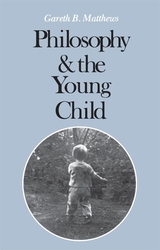 Philosophy and the Young Child
Gareth Matthews
Harvard University Press, 1980 Philosophy and the Young Child presents striking evidence that young children naturally engage in a brand of thought that is genuinely philosophical. In a series of exquisite examples that could only have been gathered by a professional philosopher with an extraordinary respect for young minds, Gareth Matthews demonstrates that children have a capacity for puzzlement and mental play that leads them to tackle many of the classic problems of knowledge, value, and existence that have traditionally formed the core of philosophical thought. Matthews’s anecdotes reveal children reasoning about these problems in a way that must be taken seriously by anyone who wants to understand how children think.
Philosophy and the Young Child provides a powerful antidote to the widespread tendency to underestimate children’s mental ability and patronize their natural curiosity. As Matthews shows, even child psychologists as insightful as Piaget have failed to grasp the subtlety of children’s philosophical frame of mind. Only in children’s literature does Matthews find any sensitivity to children’s natural philosophizing. Old favorites like Winnie the Pooh, the Oz books, and The Bear That Wasn’t are full of philosophical puzzlers that amuse and engage children. More important, these stories manage to strip away the mental defensiveness and conventionality that so often prevent adults from appreciating the way children begin to think about the world.
Gareth Matthews believes that adults have much to gain if they can learn to “do philosophy” with children, and his book is a rich source of useful suggestions for parents, teachers, students, and anyone else who might like to try.
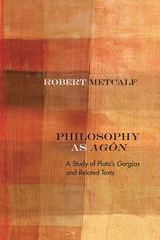 Philosophy as Agôn: A Study of Plato’s Gorgias and Related Texts
Robert Metcalf
Northwestern University Press, 2018 In Philosophy as Agôn: A Study of Plato's Gorgias and Related Texts, Robert Metcalf offers a fresh interpretation of Plato's dialogues as dramatic texts whose philosophy is not so much a matter of doctrine as it is a dynamic, nondogmatic, and open-ended practice of engaging others in agonistic dialogue. Metcalf challenges prevailing interpretations according to which the agôn (contest or struggle) between the interlocutors in the dialogues is inessential to Plato's philosophical purpose, or simply a reflection of the cultural background of ancient Greek life. Instead, he argues that Plato understands philosophy as essentially agonistic—involving the adversarial engagement of others in dialogue such that one's integrity is put to the test through this engagement, and where the agôn is structured so as to draw adversaries together in agreement about the matters at issue, though that agreement is always open to future contest. Based on a careful reading of the Gorgias and related Socratic dialogues, such as Apology and Theaetetus, Metcalf contends that agôn is indispensable to the critique of prevailing opinions, to the transformation of the interlocutor through shame-inducing refutation, and to philosophy as a lifelong training (askêsis) of oneself in relation to others.
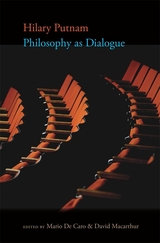 Philosophy as Dialogue
Hilary Putnam
Harvard University Press, 2022 A collection of Hilary Putnam’s stimulating, incisive responses to such varied and eminent thinkers as Richard Rorty, Jürgen Habermas, Noam Chomsky, Martha Nussbaum, W. V. Quine, Wilfrid Sellars, John McDowell, and Cornel West.
Hilary Putnam (1926–2016) was renowned—some would say infamous—for changing his philosophical positions over the course of his long and much-admired career. This collection of essays, the first of its kind, showcases how his ideas evolved as he wrestled with the work of his contemporaries.
Divided into five thematic sections, Philosophy as Dialogue begins with questions of language and formal logic, tracing Putnam’s reactions to the arguments of Wilfrid Sellars, Noam Chomsky, Charles Travis, and Tyler Burge. Next, it brings together Putnam’s responses to realists and antirealists, philosophers of science and of perception, followed by forays into pragmatism and skepticism. While Putnam devoted most of his efforts to logic, mathematics, and the philosophy of mind, he also took up issues in moral philosophy, politics, and religion. Here we read him in conversation with giants of these fields, including Martha Nussbaum, Jürgen Habermas, Elizabeth Anscombe, Cora Diamond, Richard Rorty, and Franz Rosenzweig. Finally, Philosophy as Dialogue presents Putnam’s deeply personal and largely unknown writing on philosophical method that reveals the influence of W. V. Quine, Michael Dummett, and Stanley Cavell on his work.
Once more, Mario De Caro and David Macarthur have presented and introduced a choice selection of Hilary Putnam’s writings that will change the way he is understood. Most of all, these thirty-six replies and responses to his contemporaries showcase the extraordinary—perhaps even unparalleled—breadth of his work, and his capacity to engage deeply with seemingly every mode of philosophy.
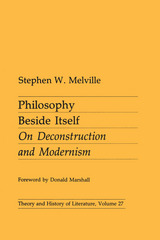 Philosophy Beside Itself: On Deconstruction and Modernism
Stephen W. MelvilleForeword by Donald Marshall
University of Minnesota Press, 1986 Philosophy Beside Itself was first published in 1986. Minnesota Archive Editions uses digital technology to make long-unavailable books once again accessible, and are published unaltered from the original University of Minnesota Press editions. The writings of French philosopher Jacques Derrida have been the single most powerful influence on critical theory and practice in the United States over the past decade. But with few exceptions American philosophers have taken little or no interest in Derrida's work, and the task of reception, translation, and commentary has been left to literary critics. As a result, Derrida has appeared as a figure already defined by essentially literary critical activities and interests. Stephen Melville's aim in Philosophy Beside Itself is to insist upon and clarify the distinctions between philosophy and criticism. He argues that until we grasp Derrida's philosophical project as such, we remain fundamentally unable to see his significance for criticism. In terms derived from Stanley Cavell's writings on modernism, Melville develops a case for Derrida as a modernist philosopher, working at once within and against that tradition and discipline. Melville first places Derrida in a Hegelian context, the structure of which he explores by examining the work of Heidegger, Lacan, and Bataille. With this foundation, he is able to reappraise the project of deconstructive criticism as developed in Paul de Man's Blindness and Insight and further articulated by other Yale critics. Central to this critique is the ambivalent relationship between deconstructive criticism and Lacanian psychoanalysis. Criticism—radical self-criticism—is a central means through which the difficult facts of human community come to recognition, and Melville argues for criticism as an activity intimately bound to the ways in which we do and do not belong in time and in community. Derrida's achievement has been to find a new and necessary way to assert that the task of philosophy is criticism; the task of literary criticism is to assume the burden of that achievement. Stephen Melville is an assistant professor of English at Syracuse University, and Donald Marshall is a professor of English at the University of Iowa.
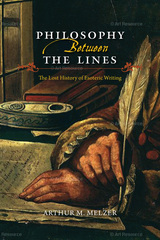 Philosophy Between the Lines: The Lost History of Esoteric Writing
Arthur M. Melzer
University of Chicago Press, 2014 Philosophical esotericism—the practice of communicating one’s unorthodox thoughts “between the lines”—was a common practice until the end of the eighteenth century. The famous Encyclopédie of Diderot, for instance, not only discusses this practice in over twenty different articles, but admits to employing it itself. The history of Western thought contains hundreds of such statements by major philosophers testifying to the use of esoteric writing in their own work or others’. Despite this long and well-documented history, however, esotericism is often dismissed today as a rare occurrence. But by ignoring esotericism, we risk cutting ourselves off from a full understanding of Western philosophical thought.
Arthur M. Melzer serves as our deeply knowledgeable guide in this capacious and engaging history of philosophical esotericism. Walking readers through both an ancient (Plato) and a modern (Machiavelli) esoteric work, he explains what esotericism is—and is not. It relies not on secret codes, but simply on a more intensive use of familiar rhetorical techniques like metaphor, irony, and insinuation. Melzer explores the various motives that led thinkers in different times and places to engage in this strange practice, while also exploring the motives that lead more recent thinkers not only to dislike and avoid this practice but to deny its very existence. In the book’s final section, “A Beginner’s Guide to Esoteric Reading,” Melzer turns to how we might once again cultivate the long-forgotten art of reading esoteric works.
Philosophy Between the Lines is the first comprehensive, book-length study of the history and theoretical basis of philosophical esotericism, and it provides a crucial guide to how many major writings—philosophical, but also theological, political, and literary—were composed prior to the nineteenth century.
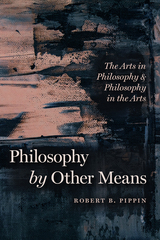 Philosophy by Other Means: The Arts in Philosophy and Philosophy in the Arts
Robert B. Pippin
University of Chicago Press, 2021 Throughout his career, Robert B. Pippin has examined the relationship between philosophy and the arts. With his writings on film, literature, and visual modernism, he has shown that there are aesthetic objects that cannot be properly understood unless we acknowledge and reflect on the philosophical concerns that are integral to their meaning. His latest book, Philosophy by Other Means, extends this trajectory, offering a collection of essays that present profound considerations of philosophical issues in aesthetics alongside close readings of novels by Henry James, Marcel Proust, and J. M. Coetzee.
The arts hold a range of values and ambitions, offering beauty, playfulness, and craftsmanship while deepening our mythologies and enriching the human experience. Some works take on philosophical ambitions, contributing to philosophy in ways that transcend the discipline’s traditional analytic and discursive forms. Pippin’s claim is twofold: criticism properly understood often requires a form of philosophical reflection, and philosophy is impoverished if it is not informed by critical attention to aesthetic objects. In the first part of the book, he examines how philosophers like Kant, Hegel, and Adorno have considered the relationship between art and philosophy. The second part of the book offers an exploration of how individual artworks might be considered forms of philosophical reflection. Pippin demonstrates the importance of practicing philosophical criticism and shows how the arts can provide key insights that are out of reach for philosophy, at least as traditionally understood.
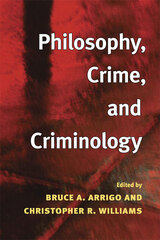 Philosophy, Crime, and Criminology
Edited by Bruce A. Arrigo and Christopher R. Williams
University of Illinois Press, 2006 Philosophy, Crime, and Criminology represents the first systematic attempt to unpack the philosophical foundations of crime in Western culture. Utilizing the insights of ontology, epistemology, aesthetics, and ethics, contributors demonstrate how the reality of crime is informed by a number of implicit assumptions about the human condition and unstated values about civil society. Charting a provocative and original direction, editors Bruce A. Arrigo and Christopher R. Williams couple theoretically oriented chapters with those centered on application and case study. In doing so, they develop an insightful, sensible, and accessible approach for a philosophical criminology in step with the political and economic challenges of the twenty-first century. Revealing the ways in which philosophical conceits inform prevailing conceptions of crime, Philosophy, Crime, and Criminology is required reading for any serious student or scholar concerned with crime and its impact on society and in our lives.
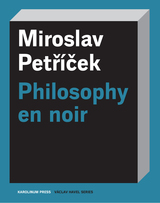 Philosophy en noir
Miroslav Petrícek
Karolinum Press, 2020 Thought necessarily reflects the times. Following the tragedy of the Holocaust, this fact became ever more clear. And it may be the reason postwar philosophical texts are so difficult to understand, since they confront incomprehensibly traumatic experiences. In this first English-language translation of any of his books, Miroslav Petříček—one of the most influential and erudite Czech philosophers, and a student of Jan Patočka—argues that to exist in the second half of the twentieth century and beyond, Western philosophy has had to rewrite its tradition and its discourse, radically transforming itself. Should philosophy be capable of bearing witness to the time, Petříček contends, this metamorphosis in philosophy is necessary. Offering an original Central European perspective on postwar philosophical discourse that reflects upon the historical underpinnings of pop culture phenomena and complex philosophical schools—including Adorno, Agamben, Benjamin, Derrida, Husserl, Kracauer, and many others—Philosophy en noir is a record of this transformation.
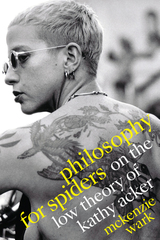 Philosophy for Spiders: On the Low Theory of Kathy Acker
McKenzie Wark
Duke University Press, 2021 It's time to recognize Kathy Acker as one of the great postwar American writers. Over the decades readers have found a punk Acker, a feminist Acker, a queer Acker, a kink Acker, and an avant-garde Acker. In Philosophy for Spiders, McKenzie Wark adds a trans Acker. Wark recounts her memories of Acker (with whom she had a passionate affair) and gives a comprehensive reading of her published and archived works. Wark finds not just an inventive writer of fiction who pressed against the boundaries of gender but a theorist whose comprehensive philosophy of life brings a conceptual intelligence to the everyday life of those usually excluded from philosophy's purview. As Wark shows, Acker's engagement with topics such as masturbation, sadism, body-building, and penetrative sex are central to her distinct phenomenology of the body that theorizes the body's relation to others, the city, and technology.
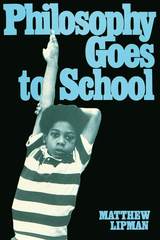 Philosophy Goes To School
Matthew Lipman
Temple University Press, 1988 Ten years ago Philosophy in the Classroom, by Lipman, Sharp, and Oscanyan, hailed the emergence of philosophy as a novel, although in some ways highly traditional, elementary school discipline. In this sequel, Matthew Lipman examines the impact that elementary school philosophy has had, and may yet have, upon the process of education. Going beyond his earlier work to describe the contribution that training in philosophy can make in the teaching of values, he shows the applications of ethics in civics education and the ways in which aesthetics can be incorporated into areas of the curriculum related to the development of creativity. Making reference to the contemporary educational scene, Lipman compares the K-12 Philosophy for Children curriculum to the many unsatisfactory solutions being offered in our current drive for educational excellence. He addresses the relationship of elementary school philosophy to educational reform in the areas of science, language, social studies, and writing. And he shows how philosophy can be instrumental in the difficult task of teaching values to children while avoiding both ideological indoctrination and mindless relativism.
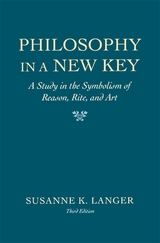 Philosophy in a New Key: A Study in the Symbolism of Reason, Rite, and Art, Third Edition
Susanne K. Langer
Harvard University Press, 1985 Modern theories of meaning usually culminate in a critique of science. This book presents a study of human intelligence beginning with a semantic theory and leading into a critique of music.
By implication it sets up a theory of all the arts; the transference of its basic concepts to other arts than music is not developed, but it is sketched, mainly in the chapter on artistic import. Thoughtful readers of the original edition discovered these far-reaching ideas quickly enough as the career of the book shows: it is as applicable to literature, art and music as to the field of philosophy itself.
The topics it deals with are many: language, sacrament, myth, music, abstraction, fact, knowledge--to name only the main ones. But through them all goes the principal theme, symbolic transformation as the essential activity of human minds. This central idea, emphasizing as it does the notion of symbolism, brings Mrs. Langer's book into line with the prevailing interest in semantics. All profound issues of our age seem to center around the basic concepts of symbolism and meaning. The formative, creative, articulating power of symbols is the tonic chord which thinkers of all schools and many diverse fields are unmistakably striking; the surprising, far-reaching implications of this new fundamental conception constitute what Mrs. Langer has called "philosophy in a new key."
Mrs. Langer's book brings the discussion of symbolism into a wider general use than criticism of word meaning. Her volume is vigorous, effective, and well written and will appeal to everyone interested in the contemporary problems of philosophy.
Philosophy in a Time of Terror: Dialogues with Jurgen Habermas and Jacques Derrida
Giovanna Borradori
University of Chicago Press, 2003 The idea for Philosophy in a Time of Terror was born hours after the attacks on 9/11 and was realized just weeks later when Giovanna Borradori sat down with Jürgen Habermas and Jacques Derrida in New York City, in separate interviews, to evaluate the significance of the most destructive terrorist act ever perpetrated. This book marks an unprecedented encounter between two of the most influential thinkers of our age as here, for the first time, Habermas and Derrida overcome their mutual antagonism and agree to appear side by side. As the two philosophers disassemble and reassemble what we think we know about terrorism, they break from the familiar social and political rhetoric increasingly polarized between good and evil. In this process, we watch two of the greatest intellects of the century at work.
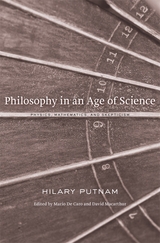 Philosophy in an Age of Science: Physics, Mathematics, and Skepticism
Hilary Putnam
Harvard University Press, 2012 Hilary Putnam’s unceasing self-criticism has led to the frequent changes of mind he is famous for, but his thinking is also marked by considerable continuity. A simultaneous interest in science and ethics—unusual in the current climate of contention—has long characterized his thought. In Philosophy in an Age of Science, Putnam collects his papers for publication—his first volume in almost two decades.
Mario De Caro and David Macarthur’s introduction identifies central themes to help the reader negotiate between Putnam past and Putnam present: his critique of logical positivism; his enduring aspiration to be realist about rational normativity; his anti-essentialism about a range of central philosophical notions; his reconciliation of the scientific worldview and the humanistic tradition; and his movement from reductive scientific naturalism to liberal naturalism. Putnam returns here to some of his first enthusiasms in philosophy, such as logic, mathematics, and quantum mechanics. The reader is given a glimpse, too, of ideas currently in development on the subject of perception.
Putnam’s work, contributing to a broad range of philosophical inquiry, has been said to represent a “history of recent philosophy in outline.” Here it also delineates a possible future.
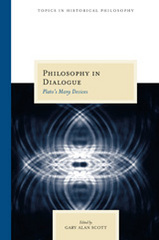 Philosophy in Dialogue: Plato's Many Devices
Gary Alan Scott
Northwestern University Press, 2007 Traditional Plato scholarship, in the English-speaking world, has assumed that Platonic dialogues are merely collections of arguments. Inevitably, the question arises: If Plato wanted to present collections of arguments, why did he write dialogues instead of treatises? Concerned about this question, some scholars have been experimenting with other, more contextualized ways of reading the dialogues. This anthology is among the first to present these new approaches as pursued by a variety of scholars. As such, it offers new perspectives on Plato as well as a suggestive view of Plato scholarship as something of a laboratory for historians of philosophy generally.
The essays gathered here each examine vital aspects of Plato’s many methods, considering his dialogues in relation to Thucydides and Homer, narrative strategies and medical practice, images and metaphors. They offer surprising new research into such much-studied works as The Republic as well as revealing views of lesser-known dialogues like the Cratylus and Philebus. With reference to thinkers such as Heidegger, Gadamer, and Sartre, the authors place the Platonic dialogues in an illuminating historical context. Together, their essays should reinvigorate the scholarly examination of the way Plato’s dialogues “work”—and should prompt a reconsideration of how the form of Plato’s philosophical writing bears on the Platonic conception of philosophy.
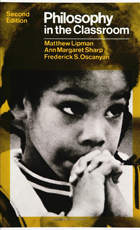 Philosophy in the Classroom
Matthew Lipman, Ann Margaret Sharp and Frederick S. Oscanyan
Temple University Press, 1980 This is a textbook for teachers that demonstrates how philosophical thinking can be used in teaching children. It begins with the assumption that what is taught in schools is not (and should not be) subject matter but rather ways of thinking. The main point is that the classroom should be converted into a community of inquiry, and that one can begin doing that with children. Based on the curriculum that Matt Lipman has developed at the Institute for the Advancement of Philosophy for Children, which he heads, this book describes the curriculum and explains its use. The text is self-contained, however. This revision is thorough-going and incorporates new chapters, as well as new material in old chapters. Part One focuses on the need of educational change and the importance of philosophical inquiry in developing new approaches. Part Two discusses curriculum and teaching methodology, including teacher behavior conducive to helping children. Part Three deals with developing logic skills and moral judgment. It concludes with a chapter on the sorts of philosophical themes pertinent to ethical inquiry for children: the right and the fair, perfect and right, free will and determinism, change and growth, truth, caring, standards and rules, thinking and thinking for oneself. Education, in this sense, is not a matter of dispensing information; it is the process of assisting in the growth of the whole individual.
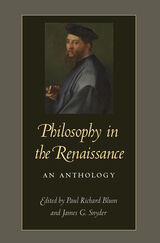 Philosophy in the Renaissance: An Anthology
Paul Richard Blum
Catholic University of America Press, 2022 The Renaissance was a period of great intellectual change and innovation as philosophers rediscovered the philosophy of classical antiquity and passed it on to the modern age. Renaissance philosophy is distinct both from the medieval scholasticism, based on revelation and authority, and from philosophers of the seventeenth and eighteenth centuries who transformed it into new philosophical systems.
Despite the importance of the Renaissance to the development of philosophy over time, it has remained largely understudied by historians of philosophy and professional philosophers. This anthology aims to correct this by providing scholars and students of philosophy with representative translations of the most important philosophers of the Renaissance. Its purpose is to help readers appreciate philosophy in the Renaissance and its importance in the history of philosophy. The anthology includes translations from philosophers from the thirteenth to the seventeenth centuries, and it ranges from works on moral and political philosophy, to metaphysics, epistemology, and natural philosophy, thereby providing historians and students of philosophy with a sense for the nature, breadth, and complexity of philosophy in the Renaissance. Each translation is accompanied by an introduction by a historian of Renaissance philosophy, as well as select secondary sources, in order to encourage further study.
This anthology is a companion to Philosophers of the Renaissance, edited by Paul Richard Blum and published by Catholic University of America Press in 2010, which included essays on the writings of the same group of philosophers of the Renaissance: Raymond Llull, Gemistos Plethon, George of Trebizond, Basil Bessarion, Lorenzo Valla, Nicholas of Cusa, Leon Battista Alberti, Giovanni Pico della Mirandola, Marsilio Ficino, Pietro Pomponazzi, Niccolò Machiavelli, Heinrich Cornelius Agrippa von Nettesheim, Juan Luis Vives, Philipp Melanchthon, Petrus Ramus, Bernardino Telesio, Jacopo Zabarella, Michel de Montaigne, Francesco Patrizi, Giordano Bruno, Francisco Suàrez, Tommaso Campanella.
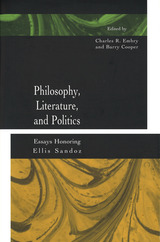 Philosophy, Literature, and Politics: Essays Honoring Ellis Sandoz
Edited by Charles R. Embry & Barry Cooper
University of Missouri Press, 2005
The essays in this collection honor Professor Ellis Sandoz, Hermann Moyse Jr. Distinguished Professor of Political Science, Louisiana State University, and founding director of the Eric Voegelin Institute for American Renaissance Studies, an institute located at Louisiana State University and devoted to research and publication in the fields of political philosophy, constitutional law, and Voegelin studies. Without the tireless leadership—both academic and economic—of Ellis Sandoz, who was one of Eric Voegelin’s early students and his first American doctoral candidate at the University of Munich, the thirty-four volumes of The Collected Works of Eric Voegelin would never have neared completion within only twenty years of Voegelin’s death.
The authors of the essays, some of the most respected scholars in the field of political philosophy, hail from Austria, Canada, the Czech Republic, Germany, Ireland, and the United States. They have known Sandoz in a variety of ways: as former students, as beneficiaries of his work on constitutionalism, as fellow participants in the publication of The Collected Works of Eric Voegelin, as philosophical colleagues, as participating members of the Eric Voegelin Society, and finally as friends.
The essays, each written especially for this volume, are grouped into the disciplines of philosophy, literature, and politics and range widely across these subjects, exploring writers as diverse as Xenophon, Natsume Soseki, Freud, and George Santayana and topics ranging from the leadership style of François Mitterrand and the Velvet Revolution to the nature of the Law and of the Political.
Philosophy, Literature, and Politics is a fitting tribute to a man whose life’s work has been formed by commitment to the philosophical enterprise and by a conviction in Eric Voegelin’s contribution to that enterprise. The seventeen essays in this collection will be of particular interest to scholars of politics, comparative government, Japanese studies, political philosophy, and literary criticism.
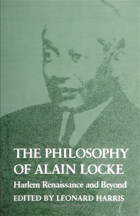 The Philosophy of Alain Locke: Harlem Renaissance and Beyond
edited by Leonard Harris
Temple University Press, 1991 This collection of essays by American philosopher Alain Locke (1885-1954) makes readily available for the first time his important writings on cultural pluralism, value relativism, and critical relativism. As a black philosopher early in this century, Locke was a pioneer: having earned both undergraduate and doctoral degrees at Harvard, he was a Rhodes scholar at Oxford, studied at the University of Berlin, and chaired the Philosophy Department at Howard University for almost four decades. He was perhaps best known as a leading figure in the Harlem Renaissance. Locke’s works in philosophy—many previously unpublished—conceptually frame the Harlem Renaissance and New Negro movement and provide an Afro-American critique of pragmatism and value absolutism, and also offer a view of identity, communicative competency, and contextualism. In addition, his major works on the nature of race, race relations, and the role of race-conscious literature are presented to demonstrate the application of his philosophy. Locke’s commentaries on the major philosophers of his day, including James, Royce, Santayana, Perry, and Ehrenfels help tell the story of his relationship to his former teachers and his theoretical affinities. In his substantial Introduction and interpretive concluding chapter, Leonard Harris describes Locke’s life, evaluates his role as an American philosopher and theoretician of the Harlem Renaissance, situates him in the pragmatist tradition, and outlines his affinities with modern deconstructionist ideas. A chronology of the philosopher’s life and bibliography of his works are also provided. Although much has been written about Alain Locke, this is the first book to focus on his philosophical contributions.
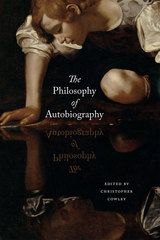 The Philosophy of Autobiography
Edited by Christopher Cowley
University of Chicago Press, 2015 We are living through a boom in autobiographical writing. Every half-famous celebrity, every politician, every sports hero—even the non-famous, nowadays, pour out pages and pages, Facebook post after Facebook post, about themselves. Literary theorists have noticed, as the genres of “creative nonfiction” and “life writing” have found their purchase in the academy. And of course psychologists have long been interested in self-disclosure. But where have the philosophers been? With this volume, Christopher Cowley brings them into the conversation.
Cowley and his contributors show that while philosophers have seemed uninterested in autobiography, they have actually long been preoccupied with many of its conceptual elements, issues such as the nature of the self, the problems of interpretation and understanding, the paradoxes of self-deception, and the meaning and narrative structure of human life. But rarely have philosophers brought these together into an overarching question about what it means to tell one’s life story or understand another’s. Tackling these questions, the contributors explore the relationship between autobiography and literature; between story-telling, knowledge, and agency; and between the past and the present, along the way engaging such issues as autobiographical ethics and the duty of writing. The result bridges long-standing debates and illuminates fascinating new philosophical and literary issues.
The Philosophy of Baruch Spinoza
Richard Kennington
Catholic University of America Press, 2018 This volume is a collection of articles that looks at the work of Baruch Spinoza through his metaphysics, his philosophy of politics and religion, and alternative approaches to Spinoza.
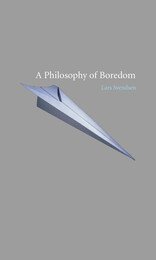 A Philosophy of Boredom
Lars Svendsen
Reaktion Books, 2005 It has been described as a "tame longing without any particular object" by Schopenhauer, "a bestial and indefinable affliction" by Dostoevsky, and "time's invasion of your world system" by Joseph Brodsky, but still very few of us today can explain precisely what boredom is. A Philosophy of Boredom investigates one of the central preoccupations of our age as it probes the nature of boredom, how it originated, how and why it afflicts us, and why we cannot seem to overcome it by any act of will.
Lars Svendsen brings together observations from philosophy, literature, psychology, theology, and popular culture, examining boredom's pre-Romantic manifestations in medieval torpor, philosophical musings on boredom from Pascal to Nietzsche, and modern explorations into alienation and transgression by twentieth-century artists from Beckett to Warhol. A witty and entertaining account of our dullest moments and most maddening days, A Philosophy of Boredom will appeal to anyone curious to know what lies beneath the overwhelming inertia of inactivity.
The Philosophy of Character
Edgar Pierce
Harvard University Press How to reconcile the religious and ethical point of view regarding character with the scientific point of view is the problem to which Dr. Pierce addresses himself in this book. It is an attempt to give a provisional, but intelligible, account of how ideals act in the world, preserving both the ethical value of the notions of God, freedom, and immortality, and the validity of scientific laws, so that a scientific psychology of character as the expression of purpose may be eventually developed.
 The Philosophy of Childhood
Gareth Matthews
Harvard University Press, 1996 So many questions, such an imagination, endless speculation: the child seems to be a natural philosopher--until the ripe old age of eight or nine, when the spirit of inquiry mysteriously fades. What happened? Was it something we did--or didn't do? Was the child truly the philosophical being he once seemed? Gareth Matthews takes up these concerns in The Philosophy of Childhood, a searching account of children's philosophical potential and of childhood as an area of philosophical inquiry. Seeking a philosophy that represents the range and depth of children's inquisitive minds, Matthews explores both how children think and how we, as adults, think about them.
Adult preconceptions about the mental life of children tend to discourage a child's philosophical bent, Matthews suggests, and he probes the sources of these limiting assumptions: restrictive notions of maturation and conceptual development; possible lapses in episodic memory; the experience of identity and growth as "successive selves," which separate us from our own childhoods. By exposing the underpinnings of our adult views of childhood, Matthews, a philosopher and longtime advocate of children's rights, clears the way for recognizing the philosophy of childhood as a legitimate field of inquiry. He then conducts us through various influential models for understanding what it is to be a child, from the theory that individual development recapitulates the development of the human species to accounts of moral and cognitive development, including Piaget's revolutionary model.
The metaphysics of playdough, the authenticity of children's art, the effects of divorce and intimations of mortality on a child--all have a place in Matthews's rich discussion of the philosophical nature of childhood. His book will prompt us to reconsider the distinctions we make about development and the competencies of mind, and what we lose by denying childhood its full philosophical breadth.
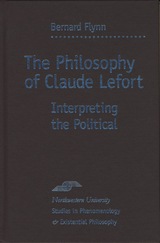 The Philosophy of Claude Lefort: Interpreting the Political
Bernard Flynn
Northwestern University Press, 2005 From the beginning the French philosopher Claude Lefort has set himself the task of interpreting the political life of modern society-and over time he has succeeded in elaborating a distinctive conception of modern democracy that is linked to both historical analysis and a novel form of philosophical reflection. This book, the first full-scale study of Lefort to appear in English, offers a clear and compelling account of Lefort's accomplishment-its unique merits, its relation to political philosophy within the Continental tradition, and its great relevance today.
Much of what passes for political philosophy in our day is merely politicized philosophical concepts, a distinction author Bernard Flynn underscores as he describes the development of Lefort's truly political philosophy-its ideas formed in response to his own political experience and to the work of certain major figures within the tradition of political thought. Beginning with Lefort's most important single work, his book on Machiavelli, Flynn presents the philosopher's conceptions of politics, modernity, and interpretation in the context within which they took shape. He then draws on a wide variety of Lefort's works to explicate his notions of premodern and modern democracy in which totalitarianism, in Lefort's singular and highly influential theory, is identified as a permanent problem of modernity.
A valuable exposition of one of the most important Continental philosophers of the post-World War II period, Flynn's book is itself a noteworthy work of interpretive philosophy, pursuing the ideas and issues addressed by Lefort to a point of unparalleled clarity and depth.
A Philosophy of Crisis
Miguel de Beistegui
University of Chicago Press, 2024 A philosopher excavates the origins of our state of permanent crisis and charts a more promising path forward.
Crises abound—so many that it can be easy to lose perspective. In A Philosophy of Crisis, Miguel de Beistegui traces the intellectual development of ideas about crisis and identifies four distinct forms a crisis might take: crises of deviation, exception, contradiction, and extinction. Drawing on a range of examples (from economic crises to social uprisings, pandemics, and ecological devastation) and discourses (from ancient medicine to legal theory, political economy, philosophy, the earth sciences, and ecocriticism), A Philosophy of Crisis offers new conceptual tools for both understanding and avoiding the dangers of our crisis-saturated time.
The Philosophy of Edmund Burke: A Selection from His Speeches and Writings
Edmund Burke
University of Michigan Press, 1960 Edmund Burke, the greatest Whig spokesman of his day in the British Parliament, was one of the most forceful and rational political thinkers of all time. This selection from his speeches and writings reveals a political philosophy which is viable, even prophetic, in our own time. Burke's distrust of disembodied reason, his vision of the law of all nations, and his wise pragmatism speak to everyone concerned with maintaining the democratic freedoms in an age when millions are subject to the tyranny of abstract political ideas.
The Philosophy of Epicurus: Letters, Doctrines, and Parallel Passages from Lucretius
Epicurus, translated with commentary and introduction by George K. Strodach
Northwestern University Press, 1963 The teachings of Epicurus, whose philosophy focused on the pursuit of happiness, attracted adherents throughout the ancient Mediterranean world and deeply influenced later European thought. The Philosophy of Epicurus contains a long introductory essay on the philosophy of Epicurus and a selection of primary texts. In in George K. Strodach translates excerpts from “The Life of Epicurous” by Diogenes Laertius, letters to Herodotus, Pythocles, and Menoeceus with parallel passages from Lucretius, and the Vatican collection of Epicurus’s aphorisms. These have become the standard English translations of these classic texts that are foundational to Western philosophy.
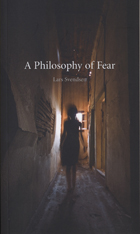 A Philosophy of Fear
Lars Svendsen
Reaktion Books, 2008 Surveillance cameras. Airport security lines. Barred store windows. We see manifestations of societal fears everyday, and daily news reports on the latest household danger or raised terror threat level continually stoke our sense of impending doom. In A Philosophy of Fear, Lars Svendsen now explores the underlying ideas and issues behind this powerful emotion, as he investigates how and why fear has insinuated itself into every aspect of modern life.
Svendsen delves into science, politics, sociology, and literature to explore the nature of fear. He examines the biology behind the emotion, from the neuroscience underlying our “fight or flight” instinct to how fear induces us to take irrational actions in our attempts to minimize risk. The book then turns to the political and social realms, investigating the role of fear in the philosophies of Machiavelli and Hobbes, the rise of the modern “risk society,” and how fear has eroded social trust. Entertainment such as the television show “Fear Factor,” competition in extreme sports, and the political use of fear in the ongoing “War on Terror” all come under Svendsen’s probing gaze, as he investigates whether we can ever disentangle ourselves from the continual state of alarm that defines our age.
Svendsen ultimately argues for the possibility of a brighter, less fearful future that is marked by a triumph of humanist optimism. An incisive and thought-provoking meditation, A Philosophy of Fear pulls back the curtain that shrouds dangers imagined and real, forcing us to confront our fears and why we hold to them.
The Philosophy of Franz Rosenzweig
Edited by Paul Mendes-Flohr
University Press of New England, 2002 Eleven essays on the life and thought of the Jewish philosopher and theologian Franz Rosenzweig.
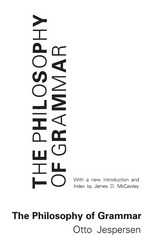 The Philosophy of Grammar
Otto Jespersen
University of Chicago Press, 1992 This study grew out of a series of lectures Jespersen gave at Columbia
University in 1909-10, called “An Introduction to English Grammar.”
It is the connected presentation of Jespersen's views of the general
principles of grammar based on years of studying various languages
through both direct observation of living speech and written and
printed documents.
“[The Philosophy of Grammar and Analytic Syntax] set
forth the most extensive and original theory of universal grammar
prior to the work of Chomsky and other generative grammarians of the
last thirty years.”—Arne Juul and Hans F. Nielsen, in Otto
Jespersen: Facets of His Life and Work
“Besides being one of the most perceptive observers and original
thinkers that the field of linguistics has ever known, Jespersen was
also one of its most entertaining writers, and reading The
Philosophy of Grammar is fun. Read it, enjoy it.”—James D.
McCawley, from the Introduction
Otto Jespersen (1860-1943), an authority on the growth and structure
of language, was the Chair of the English Department at the University
of Copenhagen. Among his many works are A Modern English
Grammar and Analytic Syntax, the latter published by the
University of Chicago Press.
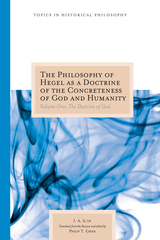 The Philosophy of Hegel as a Doctrine of the Concreteness of God and Humanity: Volume One: The Doctrine of God
I. A. Il’in, Translated by Philip T. Grier
Northwestern University Press, 2010 This landmark two-volume translation from Russian of The Philosophy of Hegel as a Doctrine of the Concreteness of God and Humanity marks the first appearance in English of any of the works of Russian philosopher Ivan Aleksandrovich Il’in (Ilyin). Originally published in 1918, on the eve of the Russian civil war, Il'in's commentary on Hegel marked both an apogee of Russian Silver Age philosophy and a significant manifestation of the resurgence of interest in Hegel that began in the early twentieth century. A. F. Losev accurately observed in the same year it appeared: “Neither the study of Hegel nor the study of contemporary Russian philosophical thought is any longer thinkable without this book of I. A. Il’in’s.” Some Hegel scholars may know this work through the abridged translation into German that Il’in produced himself in 1946. However, that edition omitted most of the original volume two. Noted Hegel scholar Philip T. Grier’s edition—with an introduction setting Il’in’s work in its proper historical, cultural, and philosophical contexts and annotation throughout—represents the first opportunity for non-Russian-speaking readers to acquaint themselves with the full scope of Il’in’s still provocative interpretation of Hegel.
Volume 1 is "The Doctrine of God." Volume 2 is "The Doctrine of Humanity."
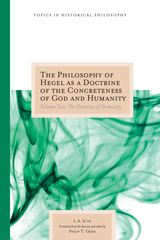 The Philosophy of Hegel as a Doctrine of the Concreteness of God and Humanity: Volume Two: The Doctrine of Humanity
I. A. Il’in, Translated by Philip T. Grier
Northwestern University Press, 2011 The publication of volume 2 of Philip T. Grier’s translation of The Philosophy of Hegel as a Doctrine of the Concreteness of God and Humanity completes the first appearance in English of any of the works of Russian philosopher I. A. Il’in (Ilyin). Most of the contents of volume 2 will be unknown even to those who have read the 1946 German version prepared by Il’in, because in that version he omitted eight of the original ten chapters. These omitted chapters provide an extended reflection on the central categories of Hegel’s moral, legal, and political philosophies, as well as of the philosophy of history. The topics examined are, in order: freedom, humanity, will, right, morality, ethical life, personhood and its virtue, and the state. Contained within these chapters are some notably insightful expositions of core doctrines in Hegel’s philosophy. Il’in’s colleague A. F. Losev accurately observed in the same year the text first appeared: “Neither the study of Hegel nor the study of contemporary Russian philosophical thought is any longer thinkable without this book of I. A. Il’in’s.”
The Philosophy of Immanuel Kant
Richard Kennington
Catholic University of America Press, 2018 A collection devoted to mark the bicentennial of the publication of Kant's Critique of Pure Reason.
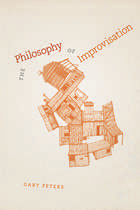 The Philosophy of Improvisation
Gary Peters
University of Chicago Press, 2009 Improvisation is usually either lionized as an ecstatic experience of being in the moment or disparaged as the thoughtless recycling of clichés. Eschewing both of these orthodoxies, The Philosophy of Improvisation ranges across the arts—from music to theater, dance to comedy—and considers the improvised dimension of philosophy itself in order to elaborate an innovative concept of improvisation. Gary Peters turns to many of the major thinkers within continental philosophy—including Heidegger, Nietzsche, Adorno, Kant, Benjamin, and Deleuze—offering readings of their reflections on improvisation and exploring improvisational elements within their thinking. Peters’s wry, humorous style offers an antidote to the frequently overheated celebration of freedom and community that characterizes most writing on the subject. Expanding the field of what counts as improvisation, The Philosophy of Improvisation will be welcomed by anyone striving to comprehend the creative process.
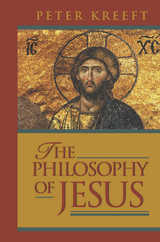 The Philosophy of Jesus
Peter Kreeft
St. Augustine's Press, 2007 Amazingly, no one ever seems to have looked at Jesus as a philosopher, or his teaching as philosophy. Yet no one in history has ever had a more radically new philosophy, or made more of a difference to philosophy, than Jesus. He divided all human history into two, into "B.C." and "A.D."; and the history of philosophy is crucial to human history, since philosophy is crucial to man; so how could He not also divide philosophy? This book (1) looks at Jesus as a complete human being (as well as divine), therefore also as a philosopher; (2) looks at philosophy as Jesus' pre-modern contemporaries did, as a wisdom, a world-view, and a way of life rather than as a super-science (Descartes, Hegel) or as a servant-science (Hobbes, Hume); and (3) looks at philosophy in light of Jesus rather than at Jesus in light of philosophy. It explores the consequences of Etienne Gilson's point that when St. John brought Christianity and Greek philosophy into contact and identified the Messiah the Jews had most deeply sought with the logos that the Greeks had most deeply sought, nothing happened to Christ but something happened to the logos. This book explores the most radical revolution in the history of philosophy, the differences Jesus made to metaphysics (the philosophy of being), to epistemology (the philosophy of knowing), to anthropology (the philosophy of man), and to philosophical ethics and politics. And, besides, it has the greatest ending of any philosophy book in a century. Contents Introduction 1: Who Is It For? Introduction 2: How Is Jesus a Philosopher? Introduction 3: What Are the Four Great Questions of Philosophy? I. Jesus’ Metaphysics (What is real?) * Jesus’ Jewish Metaphysics * Jesus’ New Name for God * The Metaphysics of Love * The Moral Consequences of Metaphysics * Sanctity as the Key to Ontology * The Metaphysics of “I AM” II. Jesus’ Epistemology (How do we know what is real?) III. Jesus’ Anthropology (Who are we who know what is real?) IV. Jesus’ Ethics (What should we be to be more real?) * Christian Personalism: Seeing “Jesus only” * Jesus and Legalism * Jesus and Relativism * Jesus and the Secret of Moral Success * Jesus and Sex * Jesus and Social Ethics: Solidarity * Jesus and Politics: Is He Left or Right? Conclusion Index Peter Kreeft, Professor of Philosophy at Boston College, is author of over forty books, including two from St. Augustine’s Press, Socratic Logic and The Sea Within.
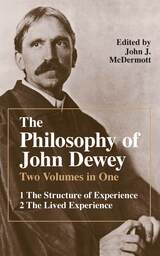 The Philosophy of John Dewey: Volume 1. The Structure of Experience. Volume 2: The Lived Experience
John Dewey
University of Chicago Press, 1981 The most important of John Dewey's landmark writings on philosophy in a single volume
John J. McDermott's anthology, The Philosophy of John Dewey, provides the best general selection available of the writings of America's most distinguished philosopher and social critic. This comprehensive collection, ideal for use in the classroom and indispensable for anyone interested in the wide scope of Dewey's thought and works, affords great insight into his role in the history of ideas and the basic integrity of his philosophy.
This edition combines in one book the two volumes previously published separately. Volume 1, "The Structure of Experience," contains essays on metaphysics, the logic of inquiry, the problem of knowledge, and value theory. In volume 2, "The Lived Experience," Dewey's writings on pedagogy, ethics, the aesthetics of the "live creature," politics, and the philosophy of culture are presented. McDermott has prefaced each essay with a helpful explanatory note and has written an excellent general introduction to the anthology.
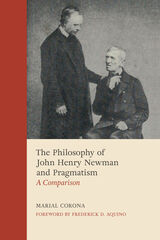 The Philosophy of John Henry Newman and Pragmatism: A Comparison
Marial Corona
Catholic University of America Press, 2023 In recent years, interest in John Henry Newman as a philosopher has gained momentum. This work places his philosophical insights in conversation with philosophers from the pragmatic tradition, particularly with C. S. Peirce, the classical pragmatists, and those who have followed their line, and shows several lines of concurrence. It argues that Newman overcame the modern philosophy of his time by reconnecting to the Aristotelian tradition in a very similar way to how Peirce did it fifty years later and the new pragmatists a century after.
Without claiming that Newman is a pragmatist philosopher, pragmatism is used as a foil, or point of access, to delve into Newman’s philosophy and bring forth the richness of his thought while placing him in the canon of philosophy. This approach deepens the understanding of his philosophical contributions and widens their reach to circles that have previously not engaged with him. Further, this study provides a means to understand pragmatism’s resources from a seldom-used vantage point and perhaps appreciate its fruitfulness in a new way.
Much emphasis is placed in Newman’s texts that refer to his search for and commitment to the truth. The particular nuances of his thought that are brought to light showcase the effective intellectual resources that his writings contain. Newman does not provide ready-made answers to today’s questions, but the way he analyzes and engages with the quandaries of his time can point us to creative and fruitful ways of engaging with those of our times.
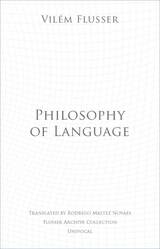 Philosophy of Language
Vilém Flusser
University of Minnesota Press, 2016 In 1963 Vilém Flusser presented a series of lectures at the Brazilian Institute of Philosophy (IBF) in São Paulo concerning the philosophy of language. The resulting ten essays would eventually be published in 1965 in the annual magazine of the Brazilian Institute of Technology and Aeronautics (ITA), and published here for the first time in book form. Flusser prepared each lecture as a response to the dialogs that followed the preceding lecture, thereby expanding and explicating his philosophy of language in an intense dialogical process. Despite the fact that the other side of the dialogue was not recorded, it becomes clear to the reader that the resulting discussions and polemics generated by the lectures progressively and profoundly changed Flusser’s intended trajectory for the course. This kind of philosophy in fieri was in part the result of a group effort between all of those present, and subsequently synthesized by Flusser in every essay. As a result of this experience, Flusser adopted this dialogic method as an integral part of his future work.
The Philosophy of Law in Historical Perspective
Carl Joachim Friedrich
University of Chicago Press, 1963 Mr. Friedrich develops his own position within the framework of the history of Western legal philosophy from the Old Testament down to contemporary writers. In addition, he highlights some important problems of the present day, including certain aspects of legal realism. First published in 1958, this book has been revised and enlarged.
The Philosophy of Living
François Jullien
Seagull Books, 2015 This volume asks poignant questions about what it means to be alive and inhabit the present.
Living holds us between two places. It expresses what is most elementary—to be alive—and the absoluteness of our aspiration—finally living! But could we desire anything other than to live? In The Philosophy of Living, François Jullien meditates on Far Eastern thought and philosophy to analyze concepts that can be folded into a complete philosophy of living, including the idea of the moment, the ambiguity of the in-between, and what he calls the “transparency of morning.” Jullien here develops a strategy of living that goes beyond morality and dwells in the space between health and spirituality.
The Philosophy of Living Nature
Zdenek Kratochvíl
Karolinum Press, 2016 The Philosophy of Living Nature focuses on the approach of the Western philosophical tradition to physis, or nature. Zdenek Kratochvíl reveals, on a philosophical level, the roots of today’s environmental crisis, presenting an etymological investigation of the concept of “nature” itself and arguing for the necessity of focusing on the world and its plurality as the background for phenomena and the context of things, as a unity of horizons, as a paradigm for understanding nature. However, as Kratochvíl makes clear, questions about the natural world have stakes far beyond the realm of philosophy: chapters in this wide-ranging and richly nuanced book deal with the identity of living organisms and the relation of life and being. Together, they provide an analysis of Darwinian and neo-Darwinian evolution and question in what sense we may know living beings.
Philosophy of Logic: Second Edition
W. V. Quine
Harvard University Press, 1986 With his customary incisiveness, W. V. Quine presents logic as the product of two factors, truth and grammar—but argues against the doctrine that the logical truths are true because of grammar or language. Rather, in presenting a general theory of grammar and discussing the boundaries and possible extensions of logic, Quine argues that logic is not a mere matter of words.
The Philosophy of Loyalty
Josiah Royce
Vanderbilt University Press, 1995 A transitional book in the development of Royce's thought, originally published in 1908, The Philosophy of Loyalty is a key to understanding his influence on the development of pragmatism. Royce's basic argument is clear. Individual wills are a given, and social training is a natural aspect of community.
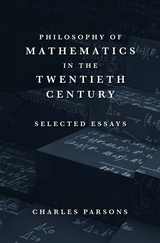 Philosophy of Mathematics in the Twentieth Century: Selected Essays
Charles Parsons
Harvard University Press, 2014 In this illuminating collection, Charles Parsons surveys the contributions of philosophers and mathematicians who shaped the philosophy of mathematics over the course of the past century.
Parsons begins with a discussion of the Kantian legacy in the work of L. E. J. Brouwer, David Hilbert, and Paul Bernays, shedding light on how Bernays revised his philosophy after his collaboration with Hilbert. He considers Hermann Weyl’s idea of a “vicious circle” in the foundations of mathematics, a radical claim that elicited many challenges. Turning to Kurt Gödel, whose incompleteness theorem transformed debate on the foundations of mathematics and brought mathematical logic to maturity, Parsons discusses his essay on Bertrand Russell’s mathematical logic—Gödel’s first mature philosophical statement and an avowal of his Platonistic view.
Philosophy of Mathematics in the Twentieth Century insightfully treats the contributions of figures the author knew personally: W. V. Quine, Hilary Putnam, Hao Wang, and William Tait. Quine’s early work on ontology is explored, as is his nominalistic view of predication and his use of the genetic method of explanation in the late work The Roots of Reference. Parsons attempts to tease out Putnam’s views on existence and ontology, especially in relation to logic and mathematics. Wang’s contributions to subjects ranging from the concept of set, minds, and machines to the interpretation of Gödel are examined, as are Tait’s axiomatic conception of mathematics, his minimalist realism, and his thoughts on historical figures.
 The Philosophy of Medicine Reborn: A Pellegrino Reader
Edmund D. Pellegrino
University of Notre Dame Press, 2008
Edmund D. Pellegrino has played a central role in shaping the fields of bioethics and the philosophy of medicine. His writings encompass original explorations of the healing relationship, the need to place humanism in the medical curriculum, the nature of the patient’s good, and the importance of a virtue-based normative ethics for health care.
In this anthology, H. Tristram Engelhardt, Jr., and Fabrice Jotterand have created a rich presentation of Pellegrino’s thought and its development. Pellegrino’s work has been dedicated to showing that bioethics must be understood in the context of medical humanities, and that medical humanities, in turn, must be understood in the context of the philosophy of medicine. Arguing that bioethics should not be restricted to topics such as abortion, third-party-assisted reproduction, physician-assisted suicide, or cloning, Pellegrino has instead stressed that such issues are shaped by foundational views regarding the nature of the physician-patient relationship and the goals of medicine, which are the proper focus of the philosophy of medicine.
This volume includes a preface (“Apologia”) by Dr. Pellegrino and a comprehensive Introduction by the editors. Of interest to medical ethicists as well as students, scholars, and physicians, The Philosophy of Medicine Reborn offers fascinating insights into the emergence of a field and the work of one of its pioneers.
“After a long period of dormancy, philosophy of medicine has blossomed with new life. The single most important physician-philosopher in that rebirth has been Edmund Pellegrino. His contributions to virtue theory, the concept of beneficence, the dispute over the internal and external sources of a morality for medicine, and the role of the Hippocratic tradition are all critical. The essays collected in this volume have changed the history of the philosophy of medicine. He shows that philosophy of medicine can be done with both passion and compassion.” —Robert M. Veatch, Kennedy Institute of Ethics, Georgetown University
“Edmund Pellegrino's words have helped medical students, faculty, scholars and patients address the challenges they encounter in medicine and medical practice. His personal support has also been critical for many of us in developing programs in medical ethics and philosophy of medicine in our universities. Dr. Pellegrino combines the wisdom of a great physician with those of a great philosopher to produce a body of writing that will continue to inspire us all. This volume contains some of his best and most influential work.” —Loretta Kopelman, The Brody School of Medicine, East Carolina University
“Edmund Pellegrino has been a leading light in the philosophy of medicine for a generation. He was instrumental in the birth of bioethics, founded one of the leading journals, and provided able leadership in organizing early activities of the profession. He has served as department chairman, dean, and university president. Most recently, he chairs the President’s Council on Bioethics. In all this, first and foremost, he has been a physician. Those who are ill and suffering make a claim upon him. To respond to this claim, Pellegrino creatively brings together the worlds of science and of the humanities. For him, that is what medicine is about, making it the most scientific of the humanities and the most humane of the sciences. Fortunately for us, Pellegrino brings these worlds together in thought, as well as in practice. In this selection from his writings, Engelhardt and Jotterand have captured the heart of Pellegrino’s project, both in depth and breadth, so we can also hear that claim of the ill and so we can see what worlds must come together if we are to respond in the appropriate way.” —George Khushf, University of South Carolina
“Pellegrino’s work is both a treasure and important for understanding bioethics. His work in philosophy of medicine addresses the crucial questions that are so important to understanding the practice of medicine and the ethics of health care.” —Kevin Wildes, President, Loyola University
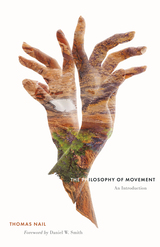 The Philosophy of Movement: An Introduction
Thomas Nail
University of Minnesota Press, 2024 An influential thinker distills years of work on the philosophy of movement into one accessible account
Why are city dwellers worldwide walking on average ten percent faster than they were a decade ago? Why are newcomer immigrant groups so often maligned when migration has always constituted civilization? To analyze and understand the depth of the reasons, Thomas Nail suggests that it serves us well to turn to a philosophy of movement. Synthesizing and extending many years of his influential work, The Philosophy of Movement is a comprehensive argument for how motion is the primary force in human and natural history. Nail critiques the bias toward stasis at the core of Western thought, asking: what would a philosophy that began with the primacy of movement look like? Interrogating the consequences of movement throughout history and in daily life in the twenty-first century, he draws connections and traces patterns between scales of reality, periods of history, and fields of knowledge. In our age of rapid movements shaped by accelerating climate change and ensuing mass global migration, as well as ubiquitous digital media, Nail provides a contemporary philosophy that helps us understand how we got here and how to grapple with these interlocking challenges. With a foreword by philosopher Daniel W. Smith, The Philosophy of Movement: An Introduction is a must-read for scholars and students not only of philosophy but also history, anthropology, science and technology studies, mobility studies, and other fields across the humanities and social sciences.
The Philosophy of Nature
Ivor Leclerc
Catholic University of America Press, 2018 The philosophy of nature is a field of inquiry which had been a casualty of the increasing and dominant acceptance from the early 19th century of the conception of physics as a mechanics.
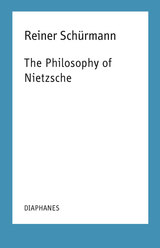 The Philosophy of Nietzsche: Reiner Schürmann Lecture Notes
Reiner Schürmann
Diaphanes, 2018 Nietzsche praised Kant for having “annihilated Socratism,” for exhibiting all ideals as essentially unattainable, and for having exposed himself to the despair of truth—all essential traits Nietzsche claimed for his own thinking. At the same time, the existentialist philosopher remained highly critical of Kant.
This volume of Reiner Schürmann’s lectures unpacks Nietzsche’s ambivalence towards Kant, in particular positioning Nietzsche’s claim to have brought an end to German idealism against the backdrop of the Kantian transcendental-critical tradition. Rather than simply compare the two philosophers, Schürmann’s lectures help us to understand the consequences Nietzsche derived from Kantian concepts, as well as the wider horizon within which Nietzsche’s ideas arose and can best be shown to apply. According to Schürmann’s trenchant reading: if Nietzsche was indeed “fatal” to Western philosophy, as he claimed, he was so in large part because of the Kantian transcendental thinking from which he inherited the very elements and tools of his criticism.
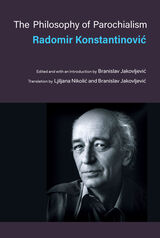 The Philosophy of Parochialism
Radomir Konstantinovic, Edited and with an Introduction by Branislav Jakovljevic, Translation by Ljiljana Nikolic and Branislav Jakovljevic
University of Michigan Press, 2021 The Philosophy of Parochialism is Radomir Konstantinović’s (1928–2011) most celebrated and reviled book. First published in Belgrade as Filosofija palanke in 1969, it attracted keen attention and controversy through its unsparing critique of Serbian and any other nationalism in Yugoslavia and beyond. The book was prophetic, seeming to anticipate not only the bloody disintegration of Yugoslavia in the 1990s, but also the totalitarian turn in politics across the globe in the first decades of the new century. With this translation, English-speaking audiences can at last discover one of the most original writers of eastern European late modernism, and gain an important and original perspective into contemporary politics and culture in the West and beyond. This is a book that seems to age in reverse, as its meanings become deeper and more universal with the passage of time. Konstantinović’sbookresists easy classification, mixing classical, Montaigne-like essay, prose poetry, novel, and literary history. The word “philosophy” in the book’s title refers to the solitary activity of reflection and critical thinking, and is also paradoxical: according to the author, a defining characteristic of parochialism is precisely its intolerance toward this kind of self-reflexivity. In Konstantinović’s analysis, parochialism is not a simply a characteristic of a geographical region or a cultural, political, and historical formation—these are all just manifestations of the parochial spirit as the spirit of insularity. His book illuminates the current moment, in which insularity undergirds not only ethnic and national divisions, but also dictates the very structure of everyday life, and where individuals can easily find themselves locked in an echo chamber of social media. The Philosophy of Parochialism can help us understand better not only the dead ends of ethnic nationalism and other atavistic ideologies, but also of those cultural forces such as digital technologies that have been built on the promise of overcoming those ideologies.
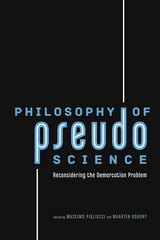 Philosophy of Pseudoscience: Reconsidering the Demarcation Problem
Edited by Massimo Pigliucci and Maarten Boudry
University of Chicago Press, 2013 What sets the practice of rigorously tested, sound science apart from pseudoscience? In this volume, the contributors seek to answer this question, known to philosophers of science as “the demarcation problem.” This issue has a long history in philosophy, stretching as far back as the early twentieth century and the work of Karl Popper. But by the late 1980s, scholars in the field began to treat the demarcation problem as impossible to solve and futile to ponder. However, the essays that Massimo Pigliucci and Maarten Boudry have assembled in this volume make a rousing case for the unequivocal importance of reflecting on the separation between pseudoscience and sound science. Moreover, the demarcation problem is not a purely theoretical dilemma of mere academic interest: it affects parents’ decisions to vaccinate children and governments’ willingness to adopt policies that prevent climate change. Pseudoscience often mimics science, using the superficial language and trappings of actual scientific research to seem more respectable. Even a well-informed public can be taken in by such questionable theories dressed up as science. Pseudoscientific beliefs compete with sound science on the health pages of newspapers for media coverage and in laboratories for research funding. Now more than ever the ability to separate genuine scientific findings from spurious ones is vital, and The Philosophy of Pseudoscience provides ground for philosophers, sociologists, historians, and laypeople to make decisions about what science is or isn’t.
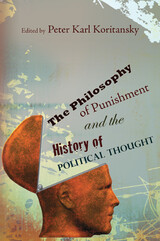 The Philosophy of Punishment and the History of Political Thought
Edited by Peter Karl Koritansky
University of Missouri Press, 2011 What does the institution of punishment look like in an ideal political system? Is punishment merely an exercise of violence of the strong against the weak? And what does the phenomenon of revealed religion add to the understanding of punishment? These are some of the many questions contemplated in The Philosophy of Punishment and the History of Political Thought, which provides a provocative exploration of the contributions of nine major thinkers and traditions regarding the question of punitive justice.
For the last half century, the philosophical debates over punishment have been deadlocked at two schools of thought: Utilitarianism and Retributivism. In his introduction, Koritansky provides an overview of the stymied debate by analyzing H. L. A. Hart’s argument for a philosophy unifying the theories of Utilitarianism and Retributivism. While Koritansky allows that both theories have contributed substantially to the contemporary understanding of punishment, he points out that Hart’s lack of success in combining these theories proves that both are less than ideal. From this starting point, Koritansky urges transcendence from these two theories in order to respond to new developments and circumstances surrounding the enactment of punishment today.
Conveniently divided into three sections, the book explores pagan and Christian premodern thought; early modern thought, culminating in chapters on Kant and classic Utilitarianism; and postmodern thought as exemplified in the theories of Nietzsche and Foucault. In all, the essays probe the work of Plato, Saint Augustine, Saint Thomas Aquinas, Thomas Hobbes, Immanuel Kant, Cesere Beccaria, Jeremy Bentham, John Stuart Mill, Friedrich Nietzsche, and Michel Foucault.
These essays devoted to the philosophy of punishment from the perspective of political thought delve deep into key contributions from thinkers of all eras to help further debates on punishment, provide the history of political thought in order to trace changes and effects on future theories, as well as expose the roots of the two prevailing schools of thought. This collection will engage all social scientists interested in the issue of punishment and energize the ongoing debate surrounding this complex issue.
Philosophy of Religion: A Guide to the Subject
Brian Davies, OP, Editor
Georgetown University Press Authoritative and accessible, this book is a concise and comprehensive introduction to the philosophy of religion. It shows how philosophers have used the tools of philosophy to examine the validity of religious ideas and values. Distinguished North American, British, and Australian authors explain how philosophers of the past and present have approached key concepts of religious faith: Does God exist? Can God’s existence be proved? If so, what might God be like? Is there life after death? Is faith in an unseen God rationally tenable at all in a post-Enlightenment, postmodern, scientific age in which different faith traditions coexist and make claims to the ownership of eternal truths? This book is an essential reader and reference for scholars, teachers, and students of religion and for anyone who seeks to answer key questions challenging the life of faith today.
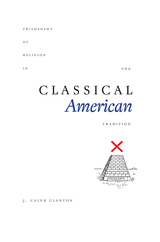 Philosophy of Religion in the Classical American Tradition
J. Caleb Clanton
University of Tennessee Press, 2017 "Always clear and lucid, there are moments in the text that read like intellectual history, and other moments that read like technical analytic philosophy of religion. Yet, and this is truly impressive, these different moments do not conflict with each other. Instead, they contribute to a seamless whole that is as argumentatively compelling as it is relatable."—J. Aaron Simmons, author of God and the Other: Ethics and Politics after the Theological Turn
The years between the end of the Civil War and the beginning of World War II are often seen as a golden age of philosophical thought in the United States, thanks in part to the early development of pragmatism. Together, the pragmatists and other classical American philosophers of the time period addressed many of the issues still under debate in philosophy today, and their influence is still evident. Yet many of their contributions to philosophy of religion have not yet received the critical analysis they deserve.
In Philosophy of Religion in the Classical American Tradition, J. Caleb Clanton reconstructs, evaluates, and extends a variety of views in philosophy of religion drawn from, inspired by, or developed in response to the classical American philosophical tradition. Problem-based and argument-driven, each chapter explores a salient issue in philosophy of religion by engaging with such thinkers as C. S. Peirce, William James, Josiah Royce, George Santayana, John Dewey, and Edward Scribner Ames, as well as two prominent contemporary inheritors of the classical American philosophical tradition, Cornel West and Richard Rorty. Clanton addresses a wide variety of topics, including the reality of God, the veridicality of mystical experience, the problem of evil, the efficacy of petitionary prayer, religious naturalism, and the role of religion in the democratic public square.
For scholars and teachers of philosophy and religious studies, Philosophy of Religion in the Classical American Tradition will serve as a valuable resource for engaging with the history of philosophy of religion in the United States.
J. CALEB CLANTON is professor of philosophy and University Research Professor at Lipscomb University in Nashville. He is the author or editor of several books, including The Classical American Pragmatists and Religion and The Philosophy of Religion of Alexander Campbell, winner of the Lester McAllister Prize.
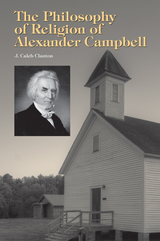 The Philosophy of Religion of Alexander Campbell
Caleb J. Clanton
University of Tennessee Press, 2013 Well known for the important role he played in the American Restoration Movement, Alexander Campbell was one of the most respected and influential religious figures of 19th-century America. Although Campbell’s legacy as a religious leader and theologian has been widely acknowledged and documented, his contributions as a philosopher of religion have been largely neglected.
The Philosophy of Religion of Alexander Campbell reintroduces readers to Campbell as a philosopher of religion and explores the philosophical basis for the views underlying his religious movement. It begins with a highly readable discussion of Campbell’s role in antebellum American religion and proceeds to an exploration of his philosophical influences. J. Caleb Clanton then reconstructs, explains, and evaluates Campbell’s philosophy of religion. He critically examines Campbell’s unique, revealed-idea argument for the existence of God—that is, if God did not exist, we could not form the distinct idea of God. Clanton goes on to explore Campbell’s defense of miracles, including the resurrection of Christ, and his responses to the problem of evil and the problem of divine hiddenness. The final and most speculative chapter collects and synthesizes from scattered writings Campbell’s view on morality and religion— namely that there is no morality without God—which has proven difficult to defend on philosophical grounds.
With this book, the author makes a unique and important contribution to the literature of the Stone-Campbell movement. Clanton presents Campbell’s views strictly in philosophical terms and evaluates them from a philosophical perspective without regard to religious apologetics. In doing so, he illuminates previously unexplored dimensions of Campbell and his work, both historically and theologically, and clearly validates Campbell’s inclusion in contemporary discussions of the philosophy of religion.
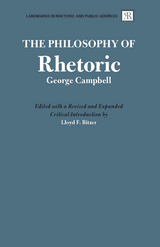 The Philosophy of Rhetoric
George Campbell. Edited by Lloyd F. Bitzer
Southern Illinois University Press, 1988 Here, after a quarter century of additional study and reflection, Bitzer presents a new critical edition of George Campbell’s classic. Bitzer provides a more complete review and assessment of Campbell’s work, giving particular emphasis to Campbell’s theological views, which he demonstrates played an important part in Campbell’s overall view of reasoning, feeling, and moral and religious truth. The Rhetoric is widely regarded as the most important statement of a theory of rhetoric produced in the 18th century. Its importance lies, in part, in the fact that the theory is informed by the leading assumptions and themes of the Scottish Enlightenment—the prevailing empiricism, the theory of the association of ideas, the effort to explain natural phenomena by reference to principles and processes of human nature. Campbell’s work engages such themes in an attempt to formulate a universal theory of human communication. Campbell attempts to develop his theory by discovering deep principles in human nature that account for all instances and kinds of human communication. He seeks to derive all communication principles and processes empirically. In addition, all statements in discourse that have to do with matters of fact and human affairs are likewise to be empirically derived. Thus, his theory of rhetoric is vastly wider than, and different from, such classical theories as those proposed by Aristotle, Cicero, and Quintilian, whose theories focused on discourse related to civic affairs. Bitzer shows that, by attempting to elaborate a general theory of rhetoric through empirical procedures, Campbell’s project reveals the limitations of his method. He cannot ground all statements empirically and it is at this point that his theological position comes into play. Inspection of his religious views shows that God’s design of human nature, and God’s revelations to humankind, make moral and spiritual truths known and quite secure to human beings, although not empirically.
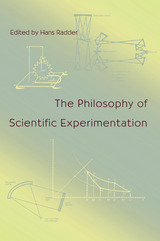 The Philosophy Of Scientific Experimentation
Hans Radder
University of Pittsburgh Press, 2003
Since the late 1980s, the neglect of experiment by philosophers and historians of science has been replaced by a keen interest in the subject. In this volume, a number of prominent philosophers of experiment directly address basic theoretical questions, develop existing philosophical accounts, and offer novel perspectives on the subject, rather than rely exclusively on historical cases of experimental practice.
Each essay examines one or more of six interconnected themes that run throughout the collection: the philosophical implications of actively and intentionally interfering with the material world while conducting experiments; issues of interpretation regarding causality; the link between science and technology; the role of theory in experimentation involving material and causal intervention; the impact of modeling and computer simulation on experimentation; and the philosophical implications of the design, operation, and use of scientific instruments.
 Philosophy of Spinoza: Unfolding the Latent Process of His Reasoning
Harry Austryn Wolfson
Harvard University Press The object of this work is to apply the historico-critical method to Spinoza’s Ethics. Starting with the assumption that the Ethics is primarily a criticism of the fundamental problems of mediaeval philosophy, the work proceeds to analyze these problems, to set forth their salient features, to construct hypothetically the arguments of which the criticism is made up, and to show how these arguments and criticism underlie the statements which we have before us in the Ethics. The Ethics thus emerges as a logically constructed work, throughout which there is order and sequence and continuity; propositions apparently disconnected group themselves into unified and coherent chapters; words, phrases, and passages, apparently meaningless or commonplace, assume meaning and significance; and the philosophy of Spinoza, as a systematic whole and in all its fullness of detail, appears in a new light and in its true historical setting. Within the framework of this study of the Ethics are woven interpretations of relevant passages from the other writings of Spinoza.
 The Philosophy of the Church Fathers: Volume 1: Faith, Trinity, Incarnation, Third Revised Edition
Harry Austryn Wolfson
Harvard University Press Harvard University Press takes pride in publishing the third edition of a work whose depth, scope, and wisdom have gained it international recognition as a classic in its field. Harry Austryn Wolfson, world-renowned scholar and most lucid of scholarly writers, here presents in ordered detail his long-awaited study of the philosophic principles and reasoning by which the Fathers of the Church sought to explain the mysteries of the Trinity and the Incarnation.
Professor Wolfson first discusses the problem of the relation of faith and reason. Starting with Paul, who, differentiating between the wisdom of God and the wisdom of the world, averred that he was not going to adorn his teachings with persuasive arguments based on the wisdom of the world, Professor Wolfson describes the circumstances and influences which nevertheless brought about the introduction of philosophy into matters of faith and analyzes the various attitudes of the Fathers towards philosophy.
The Trinity and the Incarnation are Professor Wolfson’s next concern. He analyzes the various ways in which these topics are presented in the New Testament, and traces the attempts on the part of the Fathers to harmonize these presentations. He shows how the ultimate harmonized formulation of the two doctrines was couched in terms of philosophy; how, as a result of philosophic treatment, there arose with regard to the Trinity the problem of three and one and with regard to the Incarnation the problem of two and one; and how, in their attempts to solve these problems, the Fathers drew upon principles which in philosophy were made use of in the solution of certain aspects of the problem of the one and the many. In the final part of this volume, entitled “The Anathematized,” he deals with Gnosticism and other heresies which arose during the Patristic period with regard to the Trinity and the Incarnation.
 The Philosophy of the Kalam
Harry Austryn Wolfson
Harvard University Press, 1976 Harry Wolfson was renowned throughout the world for the depth, scope, and wisdom of his monumental volumes on the structure and growth of philosophic systems from Plato to Spinoza. It was not only his extraordinary erudition that commanded respect, his awesome mastery of all the primary sources, Greek, Christian, Judaic, and Muslim; it was also his penetrating insight and his original and groundbreaking interpretations.
In this long-awaited volume, on which he worked for twenty years, Wolfson describes the body of doctrine known as the Kalam. Kalam, an Arabic term meaning "speech" and hence "discussion," was applied to early attempts in Islam to adduce philosophic proofs for religious beliefs. It later came to designate a system of religious philosophy which reached its highest point in the eleventh century; the masters of Kalam, known as Mutakallimum, were in many respects the Muslim equivalent of the Christian Church Fathers. Wolfson studies the Kalam systematically, unfolding its philosophic origins and implications and observing its repercussions in other religions. He scrutinizes the texts of Muslim writers for their treatment of such crucial problems as the attributes of God, the Creation, causality, predestination and free will. In the process he shows how the teachings of the Koran were constantly interwoven with ideas from Greek and Oriental philosophies, Judaism, and Christianity as Islamic thought developed.
As lucidly written and intellectually stimulating as all the author's earlier books, this volume is a fitting capstone to a notable career.
 A Philosophy of the Unsayable
William Franke
University of Notre Dame Press, 2014 In A Philosophy of the Unsayable, William Franke argues that the encounter with what exceeds speech has become the crucial philosophical issue of our time. He proposes an original philosophy pivoting on analysis of the limits of language. The book also offers readings of literary texts as poetically performing the philosophical principles it expounds. Franke engages with philosophical theologies and philosophies of religion in the debate over negative theology and shows how apophaticism infiltrates the thinking even of those who attempt to deny or delimit it.
In six cohesive essays, Franke explores fundamental aspects of unsayability. In the first and third essays, his philosophical argument is carried through with acute attention to modes of unsayability that are revealed best by literary works, particularly by negativities of poetic language in the oeuvres of Paul Celan and Edmond Jabès. Franke engages in critical discussion of apophatic currents of philosophy both ancient and modern, focusing on Hegel and French post-Hegelianism in his second essay and on Neoplatonism in his fourth essay. He treats Neoplatonic apophatics especially as found in Damascius and as illuminated by postmodern thought, particularly Jean-Luc Nancy’s deconstruction of Christianity. In the last two essays, Franke treats the tension between two contemporary approaches to philosophy of religion—Radical Orthodoxy and radically secular or Death-of-God theologies. A Philosophy of the Unsayable will interest scholars and students of philosophy, literature, religion, and the humanities. This book develops Franke's explicit theory of unsayability, which is informed by his long-standing engagement with major representatives of apophatic thought in the Western tradition.
"William Franke is an articulate spokesman for what cannot be said not only with regards to modern European poetry but also with respect to contemporary theology. A Philosophy of the Unsayable is essential reading for everyone working in religion and literature and in modern theology."
—Kevin Hart, Edwin B. Kyle Professor of Christian Studies, University of Virginia
"By now, it would seem that there could be no more to say about not-saying. Apophatic language and negative theology have been accused of meaninglessness, nihilism, and even ill-concealed ontologies. In this lovely and surprising book, William Franke not only deftly undoes these criticisms but shows that apophasis underlies and strangely grounds all language and thought, even of those very discourses that most vigorously reject it. A Philosophy of the Unsayable demonstrates with elegance that there is indeed more to say, and more that is both meaningful and important." —Karmen MacKendrick, Le Moyne College
"William Franke is an eminent scholar in comparative literature, who is schooled in philosophy and religion. He is recognized as one of the most creative contemporary thinkers working at the double intersection of philosophy and literature and philosophy and theology. A Philosophy of the Unsayable shows an intellectual grasp of a dizzying array of discourses and sheds real light on all thinkers who are discussed." —Cyril O'Regan, Huisking Professor of Theology, University of Notre Dame
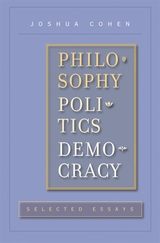 Philosophy, Politics, Democracy: Selected Essays
Joshua Cohen
Harvard University Press, 2009 Over the past twenty years, Joshua Cohen has explored the most controversial issues facing the American public: campaign finance and political equality, privacy rights and robust public debate, hate speech and pornography, and the capacity of democracies to address important practical problems. In this highly anticipated volume, Cohen draws on his work in these diverse topics to develop an argument about what he calls, following John Rawls, “democracy’s public reason.” He rejects the conventional idea that democratic politics is simply a contest for power, and that philosophical argument is disconnected from life. Political philosophy, he insists, is part of politics, and its job is to contribute to the public reasoning about what we ought to do.At the heart of Cohen’s normative vision for our political life is an ideal of democracy in which citizens and their representatives deliberate about the requirements of justice and the common good. It is an idealistic picture, but also firmly grounded in the debates and struggles in which Cohen has been engaged over nearly three decades. Philosophy, Politics, Democracy explores these debates and considers their implications for the practice of democratic politics.
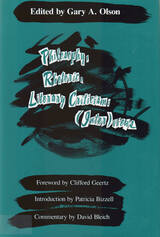 Philosophy, Rhetoric, Literary Criticism: (Inter)views
Gary A. Olson
Southern Illinois University Press, 1994
Gary A. Olson presents six in-depth interviews with internationally prominent scholars outside of the discipline and twelve response essays written by noted rhetoric and composition scholars on subjects related to language, rhetoric, writing, philosophy, feminism, and literary criticism. The interviews are with philosopher of language Donald Davidson, literary critic and critical legal studies scholar Stanley Fish, cultural studies and African American studies scholar bell hooks, internationally renowned deconstructionist J. Hillis Miller, feminist literary critic Jane Tompkins, and British logician and philosopher of science Stephen Toulmin.
Susan Wells and Reed Way Dasenbrock provide distinctly divergent assessments of the application of Donald Davidson’ s language theory to rhetoric and composition, and especially to writing pedagogy. Patricia Bizzell and John Trimbur explore how Stanley Fish’ s neopragmatism might be useful both to composition theory and to literacy education. And Joyce Irene Middleton and Tom Fox discuss bell hooks’ s notions of how race and gender affect pedagogy. In two frank and sometimes angry responses, Patricia Harkin and Jasper Neel take J. Hillis Miller to task for seeming to support rhetoric and composition while continuing to maintain the political status quo. Similarly, Susan C. Jarratt and Elizabeth A. Flynn express skepticism about Jane Tompkins’ s vocal support of composition and of radical pedagogy particularly. And Arabella Lyon and C. Jan Swearingen analyze Stephen Toulmin’ s thoughts on argumentation and postmodernism.
Internationally respected anthropologist Clifford Geertz provides a foreword; literacy expert Patricia Bizzell contributes an introduction to the text; and noted reader-response critic David Bleich supplies critical commentary.
This book is a follow-up to the editor’ s (Inter)views: Cross-Disciplinary Perspectives on Rhetoric and Literacy, already a major work of scholarship in the field.
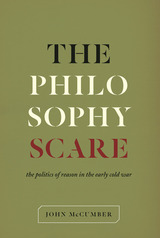 The Philosophy Scare: The Politics of Reason in the Early Cold War
John McCumber
University of Chicago Press, 2016 From the rise of formalist novels that championed the heroism of the individual to the proliferation of abstract art as a counter to socialist realism, the years of the Cold War had a profound impact on American intellectual life. As John McCumber shows in this fascinating account, philosophy, too, was hit hard by the Red Scare. Detailing the immense political pressures that reshaped philosophy departments in midcentury America, he shows just how radically politics can alter the course of intellectual history.
McCumber begins with the story of Max Otto, whose appointment to the UCLA Philosophy Department in 1947 was met with widespread protest charging him as an atheist. Drawing on Otto’s case, McCumber details the hugely successful conservative efforts that, by 1960, had all but banished the existentialist and pragmatist paradigms—not to mention Marxism—from philosophy departments all across the country, replacing them with an approach that valorized scientific objectivity and free markets and which downplayed the anti-theistic implications of modern thought. As he shows, while there have since been many instances of definitive and even explosive rejection of this conservative trend, its effects can still be seen at American universities today.
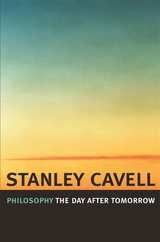 Philosophy the Day after Tomorrow
Stanley Cavell
Harvard University Press, 2005 Nietzsche characterized the philosopher as the man of tomorrow and the day after tomorrow--a description befitting Stanley Cavell, with his longtime interest in freedom in the face of an uncertain future. This interest, particularly in the role of language in freedom of the will, is fully engaged in this volume, a collection of retrospective and forward-thinking essays on performative language and on performances in which the question of freedom is the underlying concern.
Seeking for philosophy the same spirit and assurance conveyed by an artist like Fred Astaire, Cavell presents essays that explore the meaning of grace and gesture in film and on stage, in language and in life. Cavell's range is broad--from Astaire to Shakespeare's soulful Cordelia. He also analyzes filmic gestures that bespeak racial stereotypes, opening a key topic that runs through the book: What is the nature of praise? The theme of aesthetic judgment, viewed in the light of "passionate utterance," is everywhere evident in Cavell's effort to provoke a renaissance in American thought. Critical to such a rebirth is a recognition of the centrality of the "ordinary" to American life. Here Cavell, who has alluded to Thoreau throughout, takes up the quintessential American philosopher directly, and in relation to Heidegger; he also returns to his great philosophical love, Wittgenstein. His collection of essays ends, appropriately enough, with an essay on collecting.
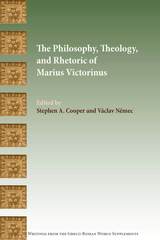 The Philosophy, Theology, and Rhetoric of Marius Victorinus
Stephen A. Cooper
SBL Press, 2022 Pagan rhetor, (Neo-)Platonist philosopher, Christian theologian
This collection of essays is devoted to the rhetoric, Neoplatonic philosophy, and Christian theology of Marius Victorinus, a mid-fourth-century professor of rhetoric and philosopher who converted to Christianity late in life. Scholars from eight different countries, some of whom have not previously published in English, reflect on debates about his writings and theological development. These topics include Victorinus's deployment of philosophical sources for trinitarian theology, possible connections in his work to Origen, Augustine, Plotinus, Porphyry, and Gnosticism, as well as his contributions to Latin rhetoric and dialectic. Contributors include Jan Dominik Bogataj, Michael Chase, Nello Cipriani, Stephen A. Cooper, Volker Henning Drecoll, Lenka Karfíková, Josef Lössl, Václav Němec, Thomas Riesenweber, Guadalupe Lopetegui Semperena, Miran Špelič, Chiara O. Tommasi, John D. Turner, and Florian Zacher. The chapters in this volume are of great interest to students of late antique philosophy, Christian theology, and Latin rhetoric.
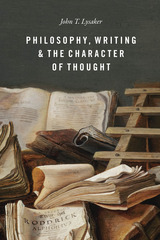 Philosophy, Writing, and the Character of Thought
John T. Lysaker
University of Chicago Press, 2018 Lysaker examines the relationship between philosophical thought and the act of writing to explore how this dynamic shapes the field of philosophy.
Philosophy’s relation to the act of writing is John T. Lysaker’s main concern in Philosophy, Writing, and the Character of Thought. Whether in Plato, Montaigne, Nietzsche, Wittgenstein, or Derrida, philosophy has come in many forms, and those forms—the concrete shape philosophizing takes in writing—matter. Much more than mere adornment, the style in which a given philosopher writes is often of crucial importance to the point he or she is making, part and parcel of the philosophy itself.
Considering how writing influences philosophy, Lysaker explores genres like aphorism, dialogue, and essay, as well as logical-rhetorical operations like the example, irony, and quotation. At the same time, he shows us the effects of these rhetorical devices through his own literary experimentation. In dialogue with such authors as Benjamin, Cavell, Emerson, and Lukács, he aims to revitalize philosophical writing, arguing that philosophy cannot fulfill its intellectual and cultural promise if it keeps to professional articles and academic prose. Instead, philosophy must embrace writing as an essential, creative activity, and deliberately reform how it approaches its subject matter, readership, and the evolving social practices of reading and reflection.
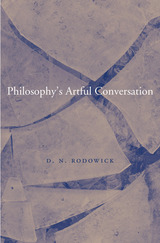 Philosophy’s Artful Conversation
D. N. Rodowick
Harvard University Press, 2014 Theory has been an embattled discourse in the academy for decades. But now it faces a serious challenge from those who want to model the analytical methods of all scholarly disciplines on the natural sciences. What is urgently needed, says D. N. Rodowick, is a revitalized concept of theory that can assess the limits of scientific explanation and defend the unique character of humanistic understanding.
Philosophy’s Artful Conversation is a timely and searching examination of theory’s role in the arts and humanities today. Expanding the insights of his earlier book, Elegy for Theory, and drawing on the diverse thought of Ludwig Wittgenstein, G. H. von Wright, P. M. S. Hacker, Richard Rorty, and Charles Taylor, Rodowick provides a blueprint of what he calls a “philosophy of the humanities.” In a surprising and illuminating turn, he views the historical emergence of theory through the lens of film theory, arguing that aesthetics, literary studies, and cinema studies cannot be separated where questions of theory are concerned. These discourses comprise a conceptual whole, providing an overarching model of critique that resembles, in embryonic form, what a new philosophy of the humanities might look like.
Rodowick offers original readings of Gilles Deleuze and Stanley Cavell, bringing forward unexamined points of contact between two thinkers who associate philosophical expression with film and the arts. A major contribution to cross-disciplinary intellectual history, Philosophy’s Artful Conversation reveals the many threads connecting the arts and humanities with the history of philosophy.
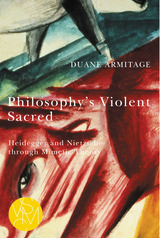 Philosophy's Violent Sacred: Heidegger and Nietzsche through Mimetic Theory
Duane Armitage
Michigan State University Press, 2021 Continental and postmodern thinking has misidentified the source of violence as originating from Western metaphysics. It has further failed to acknowledge the Judeo- Christian source of its ethic—the ethic of concern for victims. In this volume Duane Armitage attempts a critique of continental philosophy and postmodernism through the lens of René Girard’s mimetic theory. This critique is directed primarily at the philosophies of Nietzsche and Heidegger, both among the foremost representatives of continental and postmodern thought. Armitage argues that Girard’s engagement with Heidegger and Nietzsche radically alters many of the axioms of current postmodern continental philosophy, in particular the overcoming of metaphysics on the theoretical level and continental philosophy’s tacit commitments to (neo-)Marxism on the practical level. Detailed attention to the implications of Girard’s philosophical thought results in a paradigm shift that deals perhaps a deadly blow to continental and postmodern thinking. Armitage further argues that Girard’s thinking solves the very problems that continental and postmodern thinking sought (but failed) to solve, namely the problems of violence and victimization, particularly within the context of the aftermath of the Second World War. Ultimately, this volume shows that at the heart of postmodern thinking lies an entanglement with the violent sacred.
Phishing for Answers: Risk identification and mitigation strategies
Terry R. Merz
The Institution of Engineering and Technology, 2024 In the context of information security, social engineering is the manipulation of people into performing actions or divulging information for the purpose of gathering, defrauding, or gaining unauthorized system access. While some of the most common forms of social engineering involve telephone or social networks where criminals pose as employees of targeted organizations, phishing accounts for 96% of all successful cyber-attacks. Governments and private organizations have responded through various means such as training employees, executing internal vulnerability assessments, and ad campaigns. Despite all these efforts, phishing continues to provide the primary cyber-attack vector for nefarious entities.
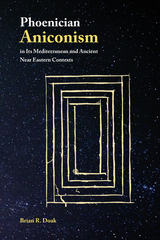 Phoenician Aniconism in Its Mediterranean and Ancient Near Eastern Contexts
Brian R. Doak
SBL Press, 2015 A close look at Phoenician religion
The Hebrew Bible contains a prohibition against divine images (Exod 20:2-5a). Explanations for this command are legion, usually focusing on the unique status of Israel's deity within the context of the broader Near Eastern and Mediterranean worlds. Doak explores whether or not Israel was truly alone in its severe stance against idols. This book focuses on one particular aspect of this iconographic context in Israel's Iron Age world: that of the Phoenicians. The question of whether Phoenicians employed aniconic (as opposed to iconic) representational techniques has significance not only for the many poorly understood aspects of Phoenician religion generally, but also for the question of whether aniconism can be considered a broader trend among the Semitic populations of the ancient Near East.
Features:
- More than fifty images and illustrations
- Examination of textual and archaeological evidence
- Application of art historical methods
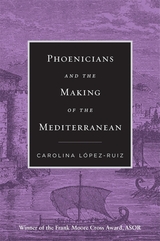 Phoenicians and the Making of the Mediterranean
Carolina López-Ruiz
Harvard University Press, 2021 “An important new book…offers a powerful call for historians of the ancient Mediterranean to consider their implicit biases in writing ancient history and it provides an example of how more inclusive histories may be written.”
—Denise Demetriou, New England Classical Journal
“With a light touch and a masterful command of the literature, López-Ruiz replaces old ideas with a subtle and more accurate account of the extensive cross-cultural exchange patterns and economy driven by the Phoenician trade networks that ‘re-wired’ the Mediterranean world. A must read.”
—J. G. Manning, author of The Open Sea
“[A] substantial and important contribution…to the ancient history of the Mediterranean. López-Ruiz’s work does justice to the Phoenicians’ role in shaping Mediterranean culture by providing rational and factual argumentation and by setting the record straight.”
—Hélène Sader, Bryn Mawr Classical Review
Imagine you are a traveler sailing to the major cities around the Mediterranean in 750 BC. You would notice a remarkable similarity in the dress, alphabet, consumer goods, and gods from Gibraltar to Tyre. This was not the Greek world—it was the Phoenician. Propelled by technological advancements of a kind unseen since the Neolithic revolution, Phoenicians knit together diverse Mediterranean societies, fostering a literate and sophisticated urban elite sharing common cultural, economic, and aesthetic modes.
Following the trail of the Phoenicians from the Levant to the Atlantic coast of Iberia, Carolina López-Ruiz offers the first comprehensive study of the cultural exchange that transformed the Mediterranean in the eighth and seventh centuries BC. Greeks, Etruscans, Sardinians, Iberians, and others adopted a Levantine-inflected way of life, as they aspired to emulate Near Eastern civilizations. López-Ruiz explores these many inheritances, from sphinxes and hieratic statues to ivories, metalwork, volute capitals, inscriptions, and Ashtart iconography.
Meticulously documented and boldly argued, Phoenicians and the Making of the Mediterranean revises the Hellenocentric model of the ancient world and restores from obscurity the true role of Near Eastern societies in the history of early civilizations.
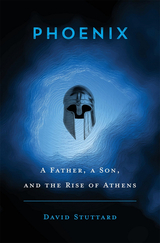 Phoenix: A Father, a Son, and the Rise of Athens
David Stuttard
Harvard University Press, 2021 A Times Literary Supplement Best Book of the Year
A vivid, novelistic history of the rise of Athens from relative obscurity to the edge of its golden age, told through the lives of Miltiades and Cimon, the father and son whose defiance of Persia vaulted Athens to a leading place in the Greek world.
When we think of ancient Greece we think first of Athens: its power, prestige, and revolutionary impact on art, philosophy, and politics. But on the verge of the fifth century BCE, only fifty years before its zenith, Athens was just another Greek city-state in the shadow of Sparta. It would take a catastrophe, the Persian invasions, to push Athens to the fore. In Phoenix, David Stuttard traces Athens’s rise through the lives of two men who spearheaded resistance to Persia: Miltiades, hero of the Battle of Marathon, and his son Cimon, Athens’s dominant leader before Pericles.
Miltiades’s career was checkered. An Athenian provincial overlord forced into Persian vassalage, he joined a rebellion against the Persians then fled Great King Darius’s retaliation. Miltiades would later die in prison. But before that, he led Athens to victory over the invading Persians at Marathon. Cimon entered history when the Persians returned; he responded by encouraging a tactical evacuation of Athens as a prelude to decisive victory at sea. Over the next decades, while Greek city-states squabbled, Athens revitalized under Cimon’s inspired leadership. The city vaulted to the head of a powerful empire and the threshold of a golden age. Cimon proved not only an able strategist and administrator but also a peacemaker, whose policies stabilized Athens’s relationship with Sparta.
The period preceding Athens’s golden age is rarely described in detail. Stuttard tells the tale with narrative power and historical acumen, recreating vividly the turbulent world of the Eastern Mediterranean in one of its most decisive periods.
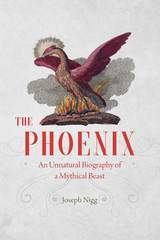 The Phoenix: An Unnatural Biography of a Mythical Beast
Joseph Nigg
University of Chicago Press, 2016 Arising triumphantly from the ashes of its predecessor, the phoenix has been an enduring symbol of resilience and renewal for thousands of years. But how did this mythical bird become so famous that it has played a part in cultures around the world and throughout human history? How much of its story do we actually know? Here to offer a comprehensive biography and engaging (un)natural history of the phoenix is Joseph Nigg, esteemed expert on mythical creatures—from griffins and dragons to sea monsters.
Beginning in ancient Egypt and traveling around the globe and through the centuries, Nigg’s vast and sweeping narrative takes readers on a brilliant tour of the cross-cultural lore of this famous, yet little-known, immortal bird. Seeking both the similarities and the differences in the phoenix’s many myths and representations, Nigg describes its countless permutations over millennia, including legends of the Chinese “phoenix,” which was considered one of the sacred creatures that presided over China’s destiny; classical Greece and Rome, where it can be found in the writings of Herodotus and Ovid; nascent and medieval Christianity, in which it came to embody the resurrection; and in Europe during the Renaissance, when it was a popular emblem of royals. Nigg examines the various phoenix traditions, the beliefs and tales associated with them, their symbolic and metaphoric use, the skepticism and speculation they’ve raised, and their appearance in religion, bestiaries, and even contemporary popular culture, in which the ageless bird of renewal is employed as a mascot and logo, including for our own University of Chicago.
Never bested by hardship or defeated by death, the phoenix is the ultimate icon of hope and rebirth. And in The Phoenix: An Unnatural Biography of a Mythical Beast, it finally has its due—a complete chronicle worthy of such a fantastic and phantasmal creature. This entertaining and informative look at the
life and transformation of the phoenix will be the authoritative source for anyone fascinated by folklore and mythology, re-igniting our curiosity about one of myth’s greatest beasts.
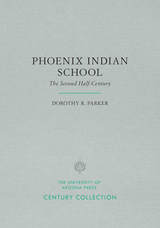 Phoenix Indian School: The Second Half-Century
Dorothy R. Parker
University of Arizona Press, 1996 The Phoenix Indian School was a boarding school founded in 1891 with the goal of fostering the assimilation of Native Americans into white society. The school served as a federal educational institution for Native American children from tribes in Arizona and elsewhere in the Southwest.
This book provides a history of the school from 1930 until the graduation of its final class of nineteen students in 1990. Dorothy Parker tells how the Phoenix Indian School not only adapted to policy changes instituted by the federal government but also had to contend with events occurring in the world around it, such as the Great Depression, World War II, and the advent of the "red power" movement.
Although the Phoenix Indian School has closed its doors forever, the National Park Service has undertaken an archaeological analysis of the site and an architectural documentation of the school's buildings. This history of its final years further attests to the legacy of this institution.
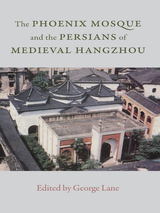 The Phoenix Mosque and the Persians of Medieval Hangzhou
Edited by George Lane
Gingko, 2018 In the early 1250s, Möngke Khan, grandson and successor of the mighty Mongol emperor, Genghis Khan, sent out his younger brothers Qubilai and Hulegu to consolidate his power. Hulegu was welcomed into Iran while his older brother, Qubilai, continued to erode the power of the Song emperors of southern China. In 1276, he finally forced their submission and peacefully occupied the Song capital, Hangzhou. The city enjoyed a revival as the cultural capital of a united China and was soon filled with traders, adventurers, artists, entrepreneurs, and artisans from throughout the great Mongol Empire—including a prosperous, influential, and seemingly welcome community of Persians. In 1281, one of the Persian settlers, Ala al-Din, built the Phoenix Mosque in the heart of the city where it still stands today. This study of the mosque and the Ju-jing Yuan cemetery, which today is a lake-side public park, casts light on an important and transformative period in Chinese history, and perhaps the most important period in Chinese-Islamic history. The book is published in the Persian Studies Series of the British Institute of Persian Studies (BIPS) edited by Charles Melville.
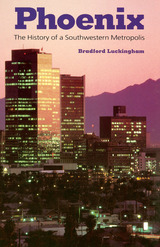 Phoenix: The History of a Southwestern Metropolis
Bradford Luckingham
University of Arizona Press, 1989 More than half of all Arizonans live in Phoenix, the center of one of the most urbanized states in the nation. This history of the Sunbelt metropolis traces its growth from its founding in 1867 to its present status as one of the ten largest cities in the United States. Drawing on a wide variety of archival materials, oral accounts, promotional literature, and urban historical studies, Bradford Luckingham presents an urban biography of a thriving city that for more than a century has been an oasis of civilization in the desert Southwest. First homesteaded by pioneers bent on seeing a new agricultural empire rise phoenix-like from ancient Hohokam Indian irrigation ditches and farming settlements, Phoenix became an agricultural oasis in the desert during the late 1800s. With the coming of the railroads and the transfer of the territorial capital to Phoenix, local boosters were already proclaiming it the new commercial center of Arizona. As the city also came to be recognized as a health and tourist mecca, thanks to its favorable climate, the concept of "the good life" became the centerpiece of the city's promotional efforts. Luckingham follows these trends through rapid expansion, the Depression, and the postwar boom years, and shows how economic growth and quality of life have come into conflict in recent times.
 Phoenix Zones: Where Strength Is Born and Resilience Lives
Hope Ferdowsian, MD
University of Chicago Press, 2018 Few things get our compassion flowing like the sight of suffering. But our response is often shaped by our ability to empathize with others. Some people respond to the suffering of only humans or to one person’s plight more than another’s. Others react more strongly to the suffering of an animal. These divergent realities can be troubling—but they are also a reminder that trauma and suffering are endured by all beings, and we can learn lessons about their aftermath, even across species.
With Phoenix Zones, Dr. Hope Ferdowsian shows us how. Ferdowsian has spent years traveling the world to work with people and animals who have endured trauma—war, abuse, displacement. Here, she combines compelling stories of survivors with the latest science on resilience to help us understand the link between violence against people and animals and the biological foundations of recovery, peace, and hope. Taking us to the sanctuaries that give the book its title, she reveals how the injured can heal and thrive if we attend to key principles: respect for liberty and sovereignty, a commitment to love and tolerance, the promotion of justice, and a fundamental belief that each individual possesses dignity. Courageous tales show us how: stories of combat veterans and wolves recovering together at a California refuge, Congolese women thriving in one of the most dangerous places on earth, abused chimpanzees finding peace in a Washington sanctuary, and refugees seeking care at Ferdowsian’s own medical clinic.
These are not easy stories. Suffering is real, and recovery is hard. But resilience is real, too, and Phoenix Zones shows how we can foster it. It reveals how both people and animals deserve a chance to live up to their full potential—and how such a view could inspire solutions to some of the greatest challenges of our time.
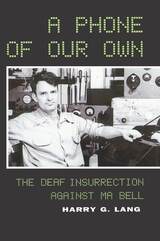 A Phone of Our Own: The Deaf Insurrection Against Ma Bell
Harry G. Lang
Gallaudet University Press, 2000 In 1964, of the more than 85 million telephones in the United States and Canada, less than one percent were used regularly by deaf people. If they didn’t ask their hearing neighbors for help, they depended upon their hearing children, some as young as three years old, to act as intermediaries for business calls or medical consultations. In that same year, three enterprising deaf men, Robert H. Weitbrecht, James C. Marsters, and Andrew Saks, started the process that led to deaf people around the world having an affordable phone system that they could use. Weitbrecht, a successful physicist with the Stanford Research Institute, had been experimenting with a teletypewriter (TTY) used with shortwave radios. When Marsters, a prominent deaf orthodontist, met Weitbrecht and saw his TTY, he immediately suggested the possibility of resolving deaf people’s decades-long struggle to have access to telecommunications without relying totally upon hearing people as go-betweens. Andrew Saks brought his business acumen to the group, which soon set to work overcoming the daunting problems they faced. Harry G. Lang’s A Phone of Our Own: The Deaf Insurrection Against Ma Bell tells how these three men collaborated to solve the technical difficulties of developing a coupling device for TTYs that would translate sounds into discernible letters. More remarkably, and with the help of an expanding corps of Deaf advocates, they successfully assaulted the American Telephone and Telegraph Company (AT&T), which in its efforts to protect its monopoly, smashed old TTYs to keep them from being used for potentially competitive purposes. The Federal Communications Commission (FCC) also resisted efforts to build a telephone system for deaf people that was available, affordable, portable, and fully accessible. Lang recounts in vivid terms how many other Deaf individuals and groups from all walks of life joined Weitbrecht, Marsters, and Saks against these forces. A Phone of Our Own is an entertaining and engrossing story of how they fought and won, and changed the world for the better for deaf people everywhere.
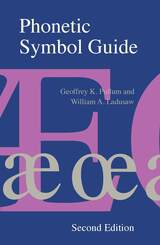 Phonetic Symbol Guide
Geoffrey K. Pullum and William A. Ladusaw
University of Chicago Press, 1996 Phonetic Symbol Guide is a comprehensive and authoritative encyclopedia of phonetic alphabet symbols, providing a complete survey of the hundreds of characters used by linguists and speech scientists to record the sounds of the world's languages.
This fully revised second edition incorporates the major revisions to the International Phonetic Alphabet made in 1989 and 1993. Also covered are the American tradition of transcription stemming from the anthropological school of Franz Boas; the Bloch/Smith/Trager style of transcription; the symbols used by dialectologists of the English language; usages of specialists such as Slavicists, Indologists, Sinologists, and Africanists; and the transcription proposals found in all major textbooks of phonetics.
With sixty-one new entries, an expanded glossary of phonetic terms, added symbol charts, and a full index, this book will be an indispensable reference guide for students and professionals in linguistics, phonetics, anthropology, philology, modern language study, and speech science.
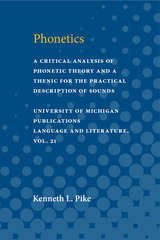 Phonetics: A Critical Analysis of Phonetic Theory and a Technique for the Practical Description of Sounds
Kenneth L. Pike
University of Michigan Press, 1943 Phonetics by Kenneth L. Pike is a comprehensive investigation into the nuances of phonetic theory, rooted in years of practical experience analyzing non-Indo-European languages. Pike's work critically examines existing phonetic classifications and introduces a new framework for describing sounds, emphasizing the distinction between speech and non-speech sounds. The book meticulously defines and classifies phonetic elements such as phones, syllables, and vowels, providing a structured method for sound description based on their productive mechanisms. Pike's approach aims to strip away assumptions that have traditionally clouded phonetic analysis, advocating for a clearer, more precise exploration of sound production. This critical analysis extends to establishing a technic capable of dealing with both nonsense sounds and syllables, broadening the scope of phonetics beyond conventional boundaries. As part of a broader trilogy, Phonetics lays the groundwork for understanding the physical formation of sounds, positioning it as an essential resource for linguists and researchers committed to developing a deeper grasp of phonetic phenomena.
 Phonetics and Diction in Singing: Italian, French, Spanish, German
Kurt Adler
University of Minnesota Press, 1967 Phonetics and Diction in Singing was first published in 1967. Minnesota Archive Editions uses digital technology to make long-unavailable books once again accessible, and are published unaltered from the original University of Minnesota Press editions. This book provides rules and illustrative examples for the study of songs and operas in the leading foreign languages of musical literature. The author is conductor and chorus master of the Metropolitan Opera. He has drawn the material from his larger book, The Art of Accompanying and Coaching,to provide a handbook or textbook especially suitable for use by voice teachers, singers, students in high schools, colleges, and schools of music, and members of choruses, church choirs, and opera workshops and their directors. Following a general discussion of phonetics and diction in singing there are separate chapters on Italian, French, Spanish, and German phonetics and diction. The text is illustrated with drawings and diagrams of vocal techniques and musical examples.
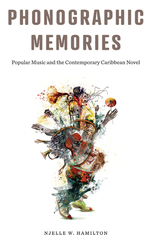 Phonographic Memories: Popular Music and the Contemporary Caribbean Novel
Njelle W. Hamilton
Rutgers University Press, 2019 Phonographic Memories is the first book to perform a sustained analysis of the narrative and thematic influence of Caribbean popular music on the Caribbean novel. Tracing a region-wide attention to the deep connections between music and memory in the work of Lawrence Scott, Oscar Hijuelos, Colin Channer, Daniel Maximin, and Ramabai Espinet, Njelle Hamilton tunes in to each novel’s soundtrack while considering the broader listening cultures that sustain collective memory and situate Caribbean subjects in specific localities. These “musical fictions” depict Caribbean people turning to calypso, bolero, reggae, gwoka, and dub to record, retrieve, and replay personal and cultural memories. Offering a fresh perspective on musical nationalism and nostalgic memory in the era of globalization, Phonographic Memories affirms the continued importance of Caribbean music in providing contemporary novelists ethical narrative models for sounding marginalized memories and voices. Njelle W. Hamilton's Spotify playlist to accompany Phonographic Memories: https://spoti.fi/2tCQRm8
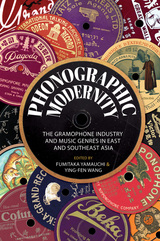 Phonographic Modernity: The Gramophone Industry and Music Genres in East and Southeast Asia
Edited by Fumitaka Yamauchi and Ying-fen Wang
University of Illinois Press, 2024 Histories of phonographic technologies and industries have long overlooked the East and Southeast Asian contributions to the sonic dimension of global modernity. Fumitaka Yamauchi and Ying-fen Wang address this one-side perspective with a collection of essays that show the nations of East and Southeast Asia as vibrant contributors to and participants in human audible history. A roster of experts on countries from Japan to Indonesia explores the complicated relationship between the gramophone industry and music genres in East and Southeast Asia. Extending the boundaries of their research across multiple disciplines, the contributors connect the gramophone industry to theories surrounding phonography and modernity. Their focus on phonography combines an interest in discs with an interest in the sounds contributing to the recent sonic-auditory turn in sound studies. Ambitious and expansive, Phonographic Modernity examines the bloc of East and Southeast Asia within the larger global history of sound recording.
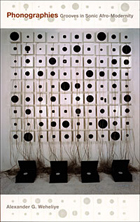 Phonographies: Grooves in Sonic Afro-Modernity
Alexander G. Weheliye
Duke University Press, 2005 Phonographies explores the numerous links and relays between twentieth-century black cultural production and sound technologies from the phonograph to the Walkman. Highlighting how black authors, filmmakers, and musicians have actively engaged with recorded sound in their work, Alexander G. Weheliye contends that the interplay between sound technologies and black music and speech enabled the emergence of modern black culture, of what he terms “sonic Afro-modernity.” He shows that by separating music and speech from their human sources, sound-recording technologies beginning with the phonograph generated new modes of thinking, being, and becoming. Black artists used these new possibilities to revamp key notions of modernity—among these, ideas of subjectivity, temporality, and community. Phonographies is a powerful argument that sound technologies are integral to black culture, which is, in turn, fundamental to Western modernity. Weheliye surveys literature, film, and music to focus on engagements with recorded sound. He offers substantial new readings of canonical texts by W. E. B. Du Bois and Ralph Ellison, establishing dialogues between these writers and popular music and film ranging from Louis Armstrong’s voice to DJ mixing techniques to Darnell Martin’s 1994 movie I Like It Like That. Looking at how questions of diasporic belonging are articulated in contemporary black musical practices, Weheliye analyzes three contemporary Afro-diasporic musical acts: the Haitian and African American rap group the Fugees, the Afro- and Italian-German rap collective Advanced Chemistry, and black British artist Tricky and his partner Martina. Phonographies imagines the African diaspora as a virtual sounding space, one that is marked, in the twentieth century and twenty-first, by the circulation of culture via technological reproductions—records and tapes, dubbing and mixing, and more.
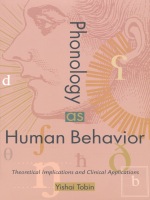 Phonology as Human Behavior: Theoretical Implications and Clinical Applications
Yishai Tobin
Duke University Press, 1997 Phonology as Human Behavior brings work in human cognition, behavior, and communication to bear on the study of phonology—the theory of sound systems in language. Yishai Tobin extends the ideas of William Diver—an influential linguist whose investigations into phonology reflect the principle that language represents a constant search for maximum communication with minimal effort—as a part of a new theory of phonology as human behavior. Showing the far-reaching psycho- and sociolinguistic utility of this theory, Tobin demonstrates its applicability to the teaching of phonetics, text analysis, and the theory of language acquisition.
Tobin describes the methodological connection between phonological theory and phonetics by way of a comprehensive and insightful survey of phonology’s controversial role in twentieth-century linguistics. He reviews the work of Saussure, Jakobson, Troubetzkoy, Martinet, Zipf, and Diver, among others, and discusses issues in distributional phonology through analyses of English, Italian, Latin, Hebrew, and Yiddish. Using his theory to explain various functional and pathological speech disorders, Tobin examines a wide range of deviant speech processes in aphasia, the speech of the hearing-impaired, and other syndromes of organic origin. Phonology as Human Behavior provides a unique set of principles connecting the phylogeny, ontogeny, and pathology of sound systems in human language.
The Phonology of Arizona Yaqui with Texts
Lynne S. Crumrine
University of Arizona Press, 1961 Literal and free translations of conversational responses flesh out this analysis including stress, tone, and pause of the phonemics of an Arizona dialect of Yaqui.
Phony Culture: Confidence and Malaise in Contemporary America
James Combs
University of Wisconsin Press, 1994
As the United States nears the twenty-first century, many of its citizens are troubled by the sense that something is wrong. Even though it is argued that our national situation is good, there persists the widespread feeling that somehow we are on the wrong social and historical track. It is the contention of this book that much of this dis-ease stems from our construction of a phony culture, a culture dominated by the value of the confidence man and woman.
 Phormio. The Mother-in-Law. The Brothers
Terence
Harvard University Press, 2001 The Roman comic playwright “whose every word delights.”
Terence brought to the Roman stage a bright comic voice and a refined sense of style. His six comedies—first produced in the half dozen years before his premature death in 159 BC—imaginatively reformulated in Latin plays that were originally written by Greek playwrights, especially Menander. For this new Loeb Classical Library edition of Terence, John Barsby gives us a faithful and lively translation with full explanatory notes, facing a freshly edited Latin text.
Volume I contains a substantial introduction and three plays: The Woman of Andros, a romantic comedy; The Self-Tormentor, which looks at contrasting father-son relationships; and The Eunuch, whose characters include the most sympathetically drawn courtesan in Roman comedy. The other three plays are in Volume II: Phormio, a comedy of intrigue with an engaging trickster; The Mother-in-Law, unique among Terence’s plays in that the female characters are the admirable ones; and The Brothers, which explores contrasting approaches to parental education of sons.
The Romans highly praised Terence—“whose speech can charm, whose every word delights,” in Cicero’s words. This new edition of his plays, which replaces the now outdated Loeb translation by John Sargeaunt (first published in 1912), succeeds in capturing his polished style and appeal.
 Photo Obscura: The Photographic in Post-Photography
Natasha Chuk
Intellect Books, 2025 As images become infinite and untethered from cameras, Natasha Chuk traces the evolving influence of photography in a world saturated with digital art.
Photo Obscura brings a much-needed reflection on the radical transformations of photography in the digital age, where AI, computational media, and hybrid art practices challenge traditional definitions of the photographic image. Moving beyond nostalgia for analog or the simple embrace of digital, this book positions post-photography as a movement reshaping our visual culture. It is a movement in which images may no longer look like photographs but remain deeply influenced by photography’s logic and history.
Through discussions of key artworks and a variety of artists, the book explores themes including AI-generated imagery and the blurred line between representation and perception. Grounded in art history and media studies, Photo Obscura offers a new outlook on photography’s evolving role in contemporary art. Particularly suited for students, artists, and scholars of photography, digital arts, and visual culture, this work redefines what it means to see and believe in an era of infinite images.
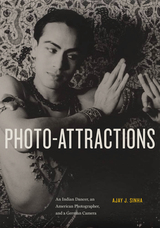 Photo-Attractions: An Indian Dancer, an American Photographer, and a German Camera
Ajay Sinha
Rutgers University Press, 2022 In Spring 1938, an Indian dancer named Ram Gopal and an American writer-photographer named Carl Van Vechten came together for a photoshoot in New York City. Ram Gopal was a pioneer of classical Indian dance and Van Vechten was reputed as a prominent white patron of the African-American movement called the Harlem Renaissance. Photo-Attractions describes the interpersonal desires and expectations of the two men that took shape when the dancer took pose in exotic costumes in front of Van Vechten’s Leica camera. The spectacular images provide a rare and compelling record of an underrepresented history of transcultural exchanges during the interwar years of early-20th century, made briefly visible through photography.
Art historian Ajay Sinha uses these hitherto unpublished photographs and archival research to raise provocative and important questions about photographic technology, colonial histories, race, sexuality and transcultural desires. Challenging the assumption that Gopal was merely objectified by Van Vechten’s Orientalist gaze, he explores the ways in which the Indian dancer co-authored the photos. In Sinha’s reading, Van Vechten’s New York studio becomes a promiscuous contact zone between world cultures, where a “photo-erotic” triangle is formed between the American photographer, Indian dancer, and German camera.
A groundbreaking study of global modernity, Photo-Attractions brings scholarship on American photography, literature, race and sexual economies into conversation with work on South Asian visual culture, dance, and gender. In these remarkable historical documents, it locates the pleasure taken in cultural difference that still resonates today.
 Photocinema: The Creative Edges of Photography and Film
Edited by Neil Campbell and Alfredo Cramerotti
Intellect Books, 2013 Taking as its starting point the notion of photocinema—or the interplay of the still and moving image—the photographs, interviews, and critical essays in this volume explore the ways in which the two media converge and diverge, expanding the boundaries of each in interesting and unexpected ways. The book’s innovative approach to film and photography produces what might be termed a hybrid “third space,” where the whole becomes much more than the sum of its individual parts, encouraging viewers to expand their perceptions to begin to understand the bigger picture. The latest edition in Intellect’s Critical Photography series, Photocinema represents a nuanced theoretical and practical exploration of the experimental cinematic techniques exemplified by artists like Wim Wenders and Hollis Frampton. In addition to new critical essays by Victor Burgin and David Campany, the book includes interviews with Martin Parr, Hannah Starkey, and Aaron Schumann, and a portfolio of photographs from various new and established artists.
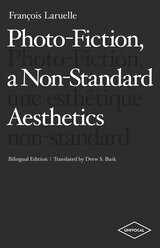 Photo-Fiction, a Non-Standard Aesthetics
François Laruelle
University of Minnesota Press, 2012
Twenty years after cultivating a new orientation for aesthetics via the concept of non-photography, François Laruelle returns, having further developed his notion of a non-standard aesthetics. Published for the first time in a bilingual edition, Photo-Fiction, a Non-Standard Aesthetics expounds on Laruelle’s current explorations into a photographic thinking as an alternative to the worn-out notions of aesthetics based on an assumed domination of philosophy over art. He proposes a new philosophical photo-fictional apparatus, or philo-fiction, that strives for a discursive mimesis of the photographic apparatus and the flash of the Real entailed in its process of image making. “A bit like if an artisan, to use a Socratic example, instead of making a camera based off of diagrams found in manuals, on the contrary had as his or her project the designing of a completely new apparatus of philo-fiction, thus capable of producing not simply photos, but photo-fictions.” One must enter into a space for seeing the vectorial and the imaginary number. Laruelle’s philo-fictions become not art installations, but “theoretical installations” calling for the consideration of the possibility of a non-standard aesthetics being of an equal or superior power to art and philosophy, an aesthetics in-the-last-instance that is itself an inventive and creative act of the most contemporary kind.
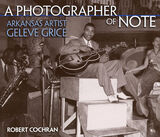 A Photographer of Note: Arkansas Artist Geleve Grice
Geleve Grice
University of Arkansas Press, 2003 In a selection of more than one hundred black and white images taken over a period of sixty years, this book bears witness to the life of a remarkable photographer and to small-town African American life in the middle of the twentieth century. Geleve Grice was born and raised near Pine Bluff, and he has documented the ordinary life of his community: parades, graduations, weddings, club events, and whatever else brought people together. In the process he has created a remarkable historical portrait of an African American community. Through his lens we glimpse the daily patterns of segregated Pine Bluff, and we also participate in the excitement of greeting extraordinary visitors. Martin Luther King Jr., Mary McLeod Bethune, Harry S. Truman, and others all came through town. Folklorist Robert Cochran worked with Grice to select these photographs from the thousands he has taken across a lifetime. They organized the work chronologically, reflecting Grice’s early years in small-town Arkansas, his travel as a serviceman in World War II, and his long career in Pine Bluff. Cochran’s accompanying chapters link Grice to the great tradition of American community photographers. He also shows how work for pay-at the Arkansas Agricultural, Mechanical and Normal College in Pine Bluff; at the Arkansas State Press daily newspaper; through his own studio-shaped Grice’s work. Cochran shows that Grice not only made his living taking photographs for jobs, but that he also made his own life by making photographs for himself-and now for history.
 A Photographer’s Guide to Ohio
Ian Adams
Ohio University Press, 2011 In A Photographer’s Guide to Ohio Ian Adams, Ohio’s foremost landscape photographer, guides you to some of the most photogenic sites in the Buckeye State. With 3,600 buildings on the National Register of Historic Places, more than 120 state parks and nature preserves, and the world’s largest Amish community, Ohio’s photographic subjects are nearly endless. In more than 150 color photographs, Adams shows you how to capture the beauty of the seasons when photographing Ohio’s scenic vistas, nature preserves, waterfalls, public gardens, historic barns and bridges, landmark buildings, and town murals. Accompanied by regional maps, each entry includes clear directions and GPS locations, related websites, and historical facts about the area, as well as Adams’s detailed suggestions for capturing the best images. Both beginners and experienced photographers will find expert guidance in Adams’s clear advice on digital landscape photography and will be inspired to create their own stunning Ohio scenic images.
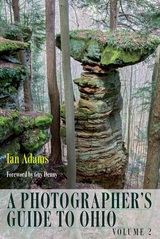 A Photographer’s Guide to Ohio, Volume 2: Volume 2
Ian Adams
Ohio University Press, 2015 Ian Adams is perhaps the best-known landscape photographer in Ohio, and in the first volume of A Photographer’s Guide to Ohio, he shared his knowledge of what to photograph in the Buckeye State and how to photograph it. Now, in this second volume, Adams expands on his previous work, adding over 120 natural features, scenic rivers and byways, zoos and public gardens, historic buildings and murals, and even winter lighting displays to the list of places to visit and photograph in Ohio. In addition to advice on photographing landscapes, he offers tips for capturing excellent images of butterflies and dragonflies. Recognizing the rapid development of new technologies, Adams includes pointers on smartphone photography, lighting and composition, digital workflow, and sharing images across a variety of platforms. The book is illustrated with more than 100 color photographs. Comprehensive and concise, these two volumes make up a travel and photography guide to almost 300 of Ohio’s most noteworthy and beautiful outdoor places.
 The Photographic Fix: Memory, Ideology, and the First World War in the Weimar Republic
Justin Court
University of Michigan Press, 2026 The Photographic Fix explores how photographs from World War I were used in personal photo albums and mass-market picture books to determine the meaning and legacy of the postwar Weimar Republic. Due to their publication success and wide reception, picture books should be considered no small part of this broad struggle of ideas to cement the war’s legacy in the Weimar era. Drawing from a large archive of photographs created during the war by amateur soldier-photographers and professional reporters alike, Justin Court explores how visual depictions of the war were used to construct and distort memory in the highly contested realm of war commemoration in the Weimar. These books of photography reveal an effort to shape how the war was visually remembered in order to influence public opinion on myriad matters following in the war’s wake, including notions of German guilt and responsibility, the legitimacy of the Republic, and the political future of the German nation. By utilizing relatively neglected sources, The Photographic Fix expands scholarship on German war photography to illuminate how images from the war and Weimar period reflected the public’s understanding of the medium at the time.
A Photographic Guide to the Ethnographic North American Indian Basket Collection, Peabody Museum of Archaeology and Ethnology: Second Edition
Madeline W. Fang
Harvard University Press This photographic guidebook catalogs more than 2,500 ethnographic North American Indian baskets, dating from the late eighteenth century to 1984. In this expanded second edition, the volume includes an index that significantly enhances the book’s value as a research tool. Basket photographs and descriptions are grouped by geographic region, then subdivided by tribal affiliation. Collection dates and descriptions of basic technology are provided, and provenance, function, materials, and maker are referenced when known.
 The Photographic Legacy of Frances Benjamin Johnston
Maria Elizabeth Ausherman
University of Alabama Press, 2022 An illustrated account of the life and work of the pioneering photographer
The Photographic Legacy of Frances Benjamin Johnston (1864–1952) draws on original papers and photographs from the Library of Congress to document the extraordinary life and nearly seventy-year career of this pioneering photographer. Maria Elizabeth Ausherman illuminates the early origins of Johnston’s style and vision, and her attempts to change society through her art. One of the first women to work in an emerging field dominated by men, Johnston achieved acclaim as an accomplished photographer and photojournalist.
As the official White House photographer for five administrations, she was instrumental in defining the medium and inspiring women to train in and appreciate photography. But it is her monumental nine-state survey of southern American architecture that stands as her most significant contribution to the history and development of photography both as art and as documentary. Through her photography, Johnston showed reverence for the beautiful historic buildings she appreciated and also helped shape architectural and photographic preservation in the United States.
Photographic Memories: Selected Essays, Playlets, and Stories
Willy Conley
Gallaudet University Press, 2023 Photographic Memories is an anthology of essays, playlets, and short fiction by writer and photographer Willy Conley. The pieces in this collection are grounded in Deaf experiences, a hallmark of Conley’s work. Written from the unique perspective of a Deaf artist who navigates between the Deaf and hearing worlds, Conley depicts a variety of topics, settings, and characters: a day in the life of a traveling Deaf theater company, a nail salon, a baseball player trying to go pro. Conley also addresses critical issues at the heart of his Deaf identity, such as creating professional opportunities for Deaf theater artists, the need for better standards in sign language interpreting, and ableism.
Original photographs taken by the author accompany his writings and invite the reader to contemplate the often-blurred lines between reality and memory.
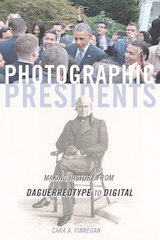 Photographic Presidents: Making History from Daguerreotype to Digital
Cara A. Finnegan
University of Illinois Press, 2021 Defining the Chief Executive via flash powder and selfie sticks Lincoln’s somber portraits. Lyndon Johnson’s swearing in. George W. Bush’s reaction to learning about the 9/11 attacks. Photography plays an indelible role in how we remember and define American presidents. Throughout history, presidents have actively participated in all aspects of photography, not only by sitting for photos but by taking and consuming them. Cara A. Finnegan ventures from a newly-discovered daguerreotype of John Quincy Adams to Barack Obama’s selfies to tell the stories of how presidents have participated in the medium’s transformative moments. As she shows, technological developments not only changed photography, but introduced new visual values that influence how we judge an image. At the same time, presidential photographs—as representations of leaders who symbolized the nation—sparked public debate on these values and their implications. An original journey through political history, Photographic Presidents reveals the intertwined evolution of an American institution and a medium that continues to define it.
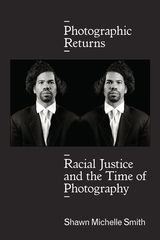 Photographic Returns: Racial Justice and the Time of Photography
Shawn Michelle Smith
Duke University Press, 2020 In Photographic Returns Shawn Michelle Smith traces how historical moments of racial crisis come to be known photographically and how the past continues to inhabit, punctuate, and transform the present through the photographic medium in contemporary art. Smith engages photographs by Rashid Johnson, Sally Mann, Deborah Luster, Lorna Simpson, Jason Lazarus, Carrie Mae Weems, Taryn Simon, and Dawoud Bey, among others. Each of these artists turns to the past—whether by using nineteenth-century techniques to produce images or by re-creating iconic historic photographs—as a way to use history to negotiate the present and to call attention to the unfinished political project of racial justice in the United States. By interrogating their use of photography to recall, revise, and amplify the relationship between racial politics of the past and present, Smith locates a temporal recursivity that is intrinsic to photography, in which images return to haunt the viewer and prompt reflection on the present and an imagination of a more just future.
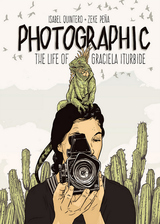 Photographic: The Life of Graciela Iturbide
Isabel Quintero
J. Paul Getty Trust, The, 2021 This young adult graphic biography follows the life of one of Mexico’s greatest living photographers, Graciela Iturbide, as she makes her way from Mexico City to the Sonoran Desert, Los Angeles, India, and beyond. The kaleidoscopic narrative offers deep insight into the path of a young photographer from an early tragedy to great fame.
Renowned Mexican photographer Graciela Iturbide was born in Mexico City in 1942, the oldest of thirteen children. When tragedy strikes Graciela as a young mother, she turns to photography for solace and understanding.
From then on Graciela embarks on a photographic journey that takes her throughout her native Mexico, from the Sonora Desert to Juchitán to Frida Kahlo’s bathroom, and then to the United States, India, and beyond.
Photographic is a symbolic, poetic, and deeply personal graphic biography of this iconic photographer. Graciela’s journey will excite young adults and budding photographers, who will be inspired by her resolve, talent, and curiosity.
Ages twelve and up
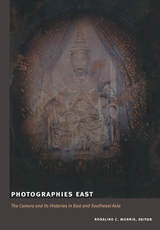 Photographies East: The Camera and Its Histories in East and Southeast Asia
Rosalind C. Morris, ed.
Duke University Press, 2009 Introducing Photographies East, Rosalind C. Morris notes that although the camera is now a taken-for-granted element of everyday life in most parts of the world, it is difficult to appreciate “the shock and sense of utter improbability that accompanied the new technology” as it was introduced in Asia (and elsewhere). In this collection, scholars of Asia, most of whom are anthropologists, describe frequent attribution of spectral powers to the camera, first brought to Asia by colonialists, as they examine the transformations precipitated or accelerated by the spread of photography across East and Southeast Asia. In essays resonating across theoretical, historical, and geopolitical lines, they engage with photography in China, Japan, Taiwan, and Thailand, and on the islands of Aru, Aceh, and Java in what is now Indonesia. The contributors analyze how in specific cultural and historical contexts, the camera has affected experiences of time and subjectivity, practices of ritual and tradition, and understandings of death. They highlight the links between photography and power, looking at how the camera has figured in the operations of colonialism, the development of nationalism, the transformation of monarchy, and the militarization of violence. Moving beyond a consideration of historical function or effect, the contributors also explore the forms of illumination and revelation for which the camera has offered itself as instrument and symbol. And they trace the emergent forms of alienation and spectralization, as well as the new kinds of fetishism, that photography has brought in its wake. Taken together, the essays chart a bravely interdisciplinary path to visual studies, one that places the particular knowledge of a historicized anthropology in a comparative frame and in conversation with aesthetics and art history. Contributors. James L. Hevia, Marilyn Ivy, Thomas LaMarre, Rosalind C. Morris, Nickola Pazderic, John Pemberton, Carlos Rojas, James T. Siegel, Patricia Spyer
Photographing Eden: Poems
Jason Gray
Ohio University Press, 2008 Photographing Eden presents the first full-length collection of poems by a major new talent. The work meditates on several ideas, the crux of which is Eden: spirituality, environmentalism, and the relationships between men and women. Observing, often through the lens of a camera, our state in the world, the poems try to focus sharply on what often seems a blur. The poems are always attentive to artistic mediums and the craft behind them because our struggle is to make something perfect in the imperfect world in which we live, while acknowledging the impossibility of that quest. Gray’s poems range all over, from adventures in Egyptian ruins with machine-gun-toting tourist police to the western edge of the foggy Irish coastline, and to the mythic past, where Adam and Eve visit a zoo and Eden has become a nature preserve.
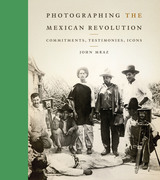 Photographing the Mexican Revolution: Commitments, Testimonies, Icons
By John Mraz
University of Texas Press, 2012 The Mexican Revolution of 1910–1920 is among the world’s most visually documented revolutions. Coinciding with the birth of filmmaking and the increased mobility offered by the reflex camera, it received extraordinary coverage by photographers and cineastes—commercial and amateur, national and international. Many images of the Revolution remain iconic to this day—Francisco Villa galloping toward the camera; Villa lolling in the presidential chair next to Emiliano Zapata; and Zapata standing stolidly in charro raiment with a carbine in one hand and the other hand on a sword, to mention only a few. But the identities of those who created the thousands of extant images of the Mexican Revolution, and what their purposes were, remain a huge puzzle because photographers constantly plagiarized each other’s images. In this pathfinding book, acclaimed photography historian John Mraz carries out a monumental analysis of photographs produced during the Mexican Revolution, focusing primarily on those made by Mexicans, in order to discover who took the images and why, to what ends, with what intentions, and for whom. He explores how photographers expressed their commitments visually, what aesthetic strategies they employed, and which identifications and identities they forged. Mraz demonstrates that, contrary to the myth that Agustín Víctor Casasola was “the photographer of the Revolution,” there were many who covered the long civil war, including women. He shows that specific photographers can even be linked to the contending forces and reveals a pattern of commitment that has been little commented upon in previous studies (and completely unexplored in the photography of other revolutions).
 Photographs: Archival Care and Management
Mary Lynn Ritzenthaler
Society of American Archivists, 2006 An essential tool for custodians of photographs in archives, libraries, historical societies, and similar repositories who manage photographic materials. This authoritative guide provides pragmatic techniques for each aspect of managing collections of images, from appraisal and accessioning through arrangement, description, and research use.
Presented from an archival perspective, the book focuses on systematically working with collections of photographs, regardless of their age, size, condition, or usage levels, and addresses: Archival management of photos, History of photography, Preservation issues and techniques, Interpreting photographs, Legal issues, and Using photographs in outreach and educational efforts.
Superbly illustrated with nearly 300 images, it also includes an extensive bibliography and information on funding sources and professional organizations that have a special focus on photographs.
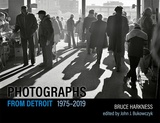 Photographs from Detroit, 1975–2019
Bruce Harkness
Ohio University Press, 2022 A retrospective survey of Bruce Harkness’s striking social documentary photographs and an invaluable historical record that bears witness to irrevocably lost swaths of Detroit’s social and urban fabric. In 1980, the cities of Detroit and Hamtramck, Michigan, exercised eminent domain to develop nearly five hundred acres of land for a new industrial park and General Motors assembly plant. But the land was not vacant. Some thirty-five hundred people lived there in Poletown—some of them for their entire lives. They attended neighborhood schools and churches, worked for and patronized small businesses, walked the sidewalks, drove the streets, and tended to lawns and gardens. Harkness began photographing the area in February 1981. He recorded street scenes, intersections, panoramic views, homes, businesses, churches, and people. Ten months, ninety visits, and six hundred photographs later, it all disappeared forever. The Poletown series established Harkness as a major Detroit documentarian. It came on the heels of late-1970s projects located in and around the city’s skid row: Cass Corridor. The images include gritty streetscapes, a portrait series depicting residents living in a crumbling apartment building, and the lively cultural milieu of a local gay and transgender bar. Most of this old portion of inner-city Detroit since has been supplanted by urban redevelopment and gentrification. During the late 1980s, Harkness collaborated with urban historian John J. Bukowczyk on a major documentary project, Urban Interiors. While the Poletown project had documented the exteriors of buildings and streetscapes on Detroit’s East Side, Urban Interiors captured the insides of inner-city Detroit homes and businesses and included extended oral history interviews. While Harkness has always found human dignity and resilience in his subjects, the tone of his work brightened in the 1990s alongside Detroit’s revival. Photographs from this era include blues musicians performing in clubs and at outdoor concerts and the distinctive, robust youth culture that flourished in Dearborn’s now-defunct Zone Coffee House. Featuring images from these and other projects, Photographs from Detroit, 1975–2019 includes Harkness’s extensive notes, which describe and contextualize the encounters he shared with the people and places he photographed, and offer insight into his working methods and equipment. The volume and quality of Harkness’s work merits him recognition as one of Detroit’s most important documentary photographers during this pivotal, transitional era in the city’s history. Harkness’s images depict the struggles and resilience of ordinary individuals and families in working-class communities who together have indelibly shaped the spirit of Detroit. This book is a must-have for Detroiters past and present as well as historians, anthropologists, social documentary advocates, and photobook collectors everywhere.
|
|
